¶ Systems List
| MANPAD | SHORAD | MERAD | LORAD | AAA |
|---|---|---|---|---|
| SA-14 Gremlin | M6 | Hawk | SA-5 Gammon | ZSU-57-2 |
| SA-18 Grouse | Avenger | SA-2 Guideline | SA-10 Grumble | ZU-23-2 |
| SA-24 Grinch | Roland | SA-6 Gainful | SA-12 Gladiator/Giant | S-60 |
| Stinger | Rapier | SA-11 Gadfly | SA-20 Gargoyle | KS-19 |
| SA-29 Gizmo | NASAMS | SA-17 Grizzly | SA-23 Gladiator/Giant | Bofors 40mm |
| SA-16 Gimlet | SA-3 Goa | Iron Dome | Patriot | C-RAM |
| SA-8 Gecko | SA-27 Gollum | David’s Sling | Vulcan | |
| SA-9 Gaskin | SA-X-28 | Gepard | ||
| SA-13 Gopher | SA-21 Growler | ZSU-23-4 Gun Dish | ||
| SA-15 Gauntlet | SA-1 Guild | |||
| SA-19 Grison | SA-4 Ganef | |||
| CH-SA-4 Red Banner | ||||
| SA-22 Greyhound |
¶ Abbreviations and Terms Used
| A2AD | Anti-Access/Area Denial is a military strategy to deny the enemy total access to an operating environment. |
| ABM | Anti-Ballistic Missile Defense In this document, the capability of a SAM system to autonomously search for, track, and engage short range ballistic missiles (SRBM), rocket artillery, or other similiary weapons found in DCS. |
| ADBN | Air Defense Battalion A unit of military organization, generally consisting of 1-4 batteries, plus their immediate support. |
| ADBDE | Air Defense Brigade A unit of military organization, generally consisting of 2-4 ADBNs plus command, technical, and logistics BNs. |
| ADBTRY | Air Defense Battery A unit of military organization, generally consisting of multiple SAM launchers, their track radar, and potentially a command vehicle. Surveillance radar may or may not be apart of each battery. |
| Brochure Model | The system in DCS is modeled after dubious performance numbers. It’s performance in game may as well be considered propaganda. To be fair, almost all SAMs in DCS are Brochure Models, but units tagged with this are likely Tier 4 systems that exceed any realilistc capability against aircraft. |
| CP | Command Post |
| IOC | Initial Operational Capability. The year the system was first field deployed. |
| LN | Launcher |
| LO | Low Observability |
| SR | Surveillance Radar / Search Radar / Target Acquisition Radar1 |
| TR | Track Radar / Fire Control Radar1 |
| TEL | Transporter Erector Launchers |
| TLAR | Transport Launcher and Radar |
| TELAR | Transport Erector Launchers and Radar |
1 The technical differences in these terms is irrelevant in DCS
¶ Guidance Types
| ARH | Active Radar Homing is a guidance model where the missile contains an autonomous guidance computer and a radar transciever that illuminates and tracks the target autonomously from a ground station. ARH missiles also typically contain a datalink system that allows them to recieve radio command guidance from a ground station until the target is within range of the missile’s radar transciever. This guidance method will provide an alert that the target is being targeted. DCS Head_Type = 2 |
| IR | Infrared Homing is a guidance model where the missile contains an infrared seeker that locks and follows a target by detecting the infrared light emmission differential between the target and its background environment. This guidance method is passive and does not alert the target that they are being targeted. DCS Head_Type = 1 |
| SACLOS | Semi-Automatic Command Line of Sight is a guidance model where a ground station operator has a sighting device that they continuously point at the target. The ground station then creates trajectory corrections for the missile and sends them to the missil either via wire or radio. This guidance method is passive when utlized with optical, IR, or EO sighting devices and does not alert the target they are being targeted. DCS Head_Type = 8 |
| SARH | Semi-Active Radar Homing is a guidance model where a ground station illuminates the target with a continuous beam of radar energy. The missile’s radar reciever detects the reflected radar signal from the target and rides the beam to target intercept. This guidance method will provide an alert that the target is being targeted. DCS Head_Type = 6 |
| TVM | Track-via-Missile is a command guidance model where a ground station radar illuminates a target, and a radar receiver in the missile detects the reflected radar signal from the target. The missile transmits the radar return information to the ground station, which then uses this information, combined with the position of the missile, to generate trajectory corrections for the missile to maintain a desired intercept trajetory with the target. This guidance method is passive and does not alert the target that they are being targeted, however targets may be aware they are currently within the illumination of a ground radar station. DCS Head_Type = 8 |
¶ System Attributes
| MaMax | Maximum Mach Number: The maximum Mach a missile can attain |
| vAvg | Average Velocity: The average velocity a missile will achieve in flight |
| Overload | The maximum out-of-plane manuevering g-force the missile can attain to correct guidance errors |
| hMin | Minimum Engagement Height: The minimum height above ground a target can be for the AD system to within parameters to engage the aircraft |
| hMax | Maximum Engagement Height: The maximum height a target can be for the AD system to be within parameters to engage the aircraft |
| tAcc | Time of Acceleration The burn duration of the missile’s motor, or the duration it takes for the missile to accelerate from 0kt to a range between its MaMax and vAvg |
| rangeMax | The maximum distance a high altitude target can be for the AD system to be within parameters to engage the aircraft |
| rangeMin | The minimum distance a low altitude target can be for the AD system to be within parameters to engage the aircraft |
| TTKMin | Minimum Time to Kill: The time it will take the missile to travel the rangeMin distance |
| TTKMax | Maximum Time to Kill: The time it will take the missile to travel the rangeMax distance |
| FOV | Field of View: The horziontal field of view of a sensor |
| ccmk | Counter-Countermeasures Rejection Probability Factor: Lower numbers are more likely to reject chaff or flare |
| trklockk | Factor of the MMD needed for a sensor to lock a track |
| trkΔvMin | The minimum difference in velocity between a doppler radar and track needed for the radar to be able to maintain a lock |
| trkrcsMin | The minimum radar cross section in m2 that the sensor is able to detect |
| RT | Reaction Time: Maximum duration for the radar to detect a contact, process it, create a track file, and communicate it to other units |
| ecmk | The factor of a sensor’s maximum detection range that is degraded by contacts using ECM |
| MMD | Maximum Measuring Distance: The maximum range that a radar can detect a contact and provide useful information about its location. In terms of DCS this is the farthest distance away that a contact can be for the radar to be able to generate a target file for. This is not the max detection range, which in DCS is the maximum range that a sensor can autonomously detect and slew to a target. The MMD and MDR may be coincident values, but not always. If the MDR is less than the MMD, then the radar can still be cued by other systems to a contact. |
| θMax | The maximum elevation angle to which the sensor can be oriented. How far the radar can look up |
| θMin | The minimum elevation angle to which the snesor can be oriented. How far the radar can look down |
Example RCS Values for evaluating trkrcsMin
| F/A-18C | 5.0m2 |
| F-16C | 4.0m2 |
| AGM-62 | 0.3m2 |
| AGM-88C | 0.08m2 |
| LD-10 | 0.07m2 |
| AGM-154 | 0.05m2 |
| GBU-38 | 0.035m2 |
| F-22 Mod | 0.002m2 |
¶ A Note on How DCS models SAMs
DCS simplifies SAM guidance and radar simulation, treating all radar types identically. Radar-guided SAMs in DCS are modeled as SARH missiles with proportional navigation guidance, regardless of real-world characteristics. Autopilot and radar attributes can be adjusted to mimic certain behaviors, but the underlying assumption remains SARH with pro-nav for all radar-guided SAMs.
So, when you see SAMs below that are listed as “SARH” but you think to yourself “Wait, aren’t those command guided?” You are correct, but this guide is correct for DCS.
¶ Sources
Information in this guide has been compiled from:
- DCS World internal weapons database: Quaggle’s dcs-lua-datamine
- U.S. Army TRADOC ODIN’s WEG
- Air Power Australia
- Federation of American Scientists
- Command: Modern Air Naval Operations Database For speculative values for which no above source can provide
¶ Air Defense System Reference
TIER LIST
Weapons are divided into tiers based on the lethality of the system within their own respective categories.
-
1️⃣ Tier 1
- Likely early Cold War 1945-1970.
- Characterized by slow accelerating SAMs, with low overload capabilities.
- Easily countered with onboard countermeasures, ground clutter, and modern electronic attack
- Often primitive guidance that is suspectible to BEAM and low level defective tactics.
- LORAD and MERAD systems are emplaced at generally large, prepared locations that cannot be easily concealed or relocated.
-
2️⃣ Tier 2
- Likely Mid Cold War 1970-1985
- LORAD and MERAD systems are generally mobile and can be emplaced in austere unprepared locations.
- Middle-of-the-road lethality missiles that are generally resistant to ground clutter.
-
3️⃣ Tier 3
- Likely Late to Post-Cold War 1985-2005
- Characterized by very fast SAMs, with high overload, and good chaff rejection capabilities
- Modern guidance paradigms that are resistant to BEAM and low level tactics
- RWR defeating design
-
4️⃣ Tier 4
- Modern systems newer than 2005, and newer than full fidelity modules in DCS
- Hypersonic short range and long range interceptors
- LORAD systems with effectively unlimited range on current DCS maps
- Beyond Line of Sight (BLOS) guidance
- Low observability defeating surveillance and fire control systems.
- In the context of DCS mission making, these are challenge mode systems that can be thought of as memes.
PROLIFERATION
| 🔺 | REDFOR |
| 🏴 | Insurgents |
| 🔷 | BLUFOR |
| 🟣 | Weakly/Un-aligned Natiosn |
¶ Man Portable Systems (MANPAD)
¶ 1️⃣ 🔺🟣🔷🏴 SA-14 Gremlin HighDigitSAMs
🔺🟣🔷🏴 SA-14 Gremlin HighDigitSAMs
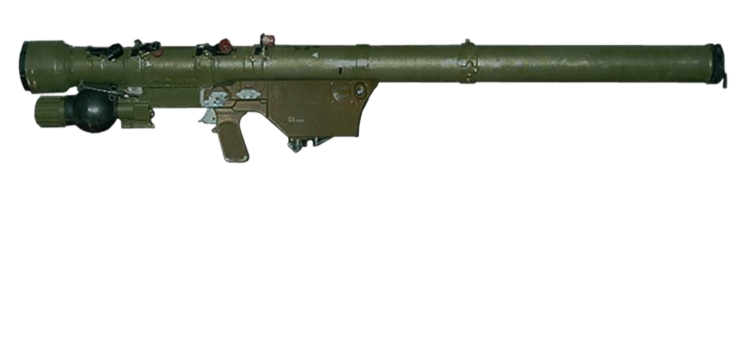
| Country of Origin: | Russia |
| Origin Desgination: | Strela-3 |
| IOC: | 1974 |
| Reloading Time: | Recycle Time: **** Rearm Time Per Round: **** Rearm From Depleted: 120s |
| LNs per Battery: | **** |
| Missile Storage: | Per LN: **** Per Battery: **** |
| Guidance Method: | IR |
| Fire-on-Move: | No |
| Anti-Munitions: | No |
The Strela-3 is the most primitive MANPAD available in DCS, through HighDigitSAMs. It’s a dude with a tube. Although commonly associated with REDFOR, it has profilerated to nations and insurgents of almost every creed and alignment worldwide.
Against low flying targets within its MEZ, it is commonly cited to have a Pk of 50%
MISSILE

The 9M36 is an IR-seeking missile, with a seeker capable of locking high contrast targets out to 4.3nmi. The seeker has an FOV of 2 degrees, and can be gimballed 30 degrees. The missile is effectively hit-to-kill featuring a 3ft proximity fuse, with 1.25kg warhead. It has medium flare rejection capabilities, and a very low overload, making it easily counterable with onboard countermeasures and kinematic defenses.
| MaMax | vAvg | Overload | hMin | hMax | tAcc | rangeMax | rangeMin | TTKMin | TTKMax |
|---|---|---|---|---|---|---|---|---|---|
| 1.6 Ma | 1108kt | 4G | 3ft | 9842ft | 2s | 0.25 nmi | 2.4 nmi |
Typical combat team is 1 man with 1 loader. For DCS purposes this may as well just be the launcher.
AD vehicles organic to ground forces may be able to deploy 2-3 teams.
Doctrinally, Russia would emplace:
- 3 teams per field HQ or HVT building
- 3 teams per firing battery of a SAM battalion
- 3 teams per technical battery of a SAM battalion
- 6 teams per artillery battery
- 9 teams per motor rifle battalion
- AD battalions may have up to 18 teams
The main consideration with MANPADs, is to space them appropriately, with narrowly overlapping MEZes, and to put them in positions that are hard to see through FLIRs.
¶ 2️⃣ 🔺🏴 SA-18 Grouse
🔺🏴 SA-18 Grouse

| Country of Origin: | Russia |
| Origin Desgination: | 9K38 Igla |
| IOC: | 1983 |
| Reloading Time: | Recycle Time: **** Rearm Time Per Round: **** Rearm From Depleted: 120s |
| LNs per Battery: | N/A |
| Missile Storage: | Per LN: 3 Per Battery: 3 |
| Guidance Method: | IR |
| Fire-on-Move: | No |
| Anti-Munitions: | No |
MISSILE

| MaMax | vAvg | Overload | hMin | hMax | tAcc | rangeMax | rangeMin | TTKMin | TTKMax |
|---|---|---|---|---|---|---|---|---|---|
| 2.2 Ma | 1108kt | 16G | 33ft | 11483ft | 8.5s | 2.43 nmi | 0.27 nmi | ~1s | ~17s |
Typical combat team is 1 man with 1 loader. For DCS purposes this may as well just be the launcher.
AD vehicles organic to ground forces may be able to deploy 2-3 teams.
Doctrinally, Russia would emplace:
- 3 teams per field HQ or HVT building
- 3 teams per firing battery of a SAM battalion
- 3 teams per technical battery of a SAM battalion
- 6 teams per artillery battery
- 9 teams per motor rifle battalion
- AD battalions may have up to 18 teams
The main consideration with MANPADs, is to space them appropriately, with narrowly overlapping MEZes, and to put them in positions that are hard to see through FLIRs.
¶ 3️⃣ 🔺SA-24 Grinch
🔺SA-24 Grinch

| Country of Origin: | Russia |
| Origin Desgination: | 9K338 Igla-S |
| IOC: | 2004 |
| Reloading Time: | Recycle Time: **** Rearm Time Per Round: **** Rearm From Depleted: 120s |
| LNs per Battery: | **** |
| Missile Storage: | Per LN: **** Per Battery: **** |
| Guidance Method: | IR |
| Fire-on-Move: | No |
| Anti-Munitions: | No |
MISSILE

| MaMax | vAvg | Overload | hMin | hMax | tAcc | rangeMax | rangeMin | TTKMin | TTKMax |
|---|---|---|---|---|---|---|---|---|---|
| Ma | kt | G | ft | ft | s | nmi | nmi |
Typical combat team is 1 man with 1 loader. For DCS purposes this may as well just be the launcher.
AD vehicles organic to ground forces may be able to deploy 2-3 teams.
Doctrinally, Russia would emplace:
- 3 teams per field HQ or HVT building
- 3 teams per firing battery of a SAM battalion
- 3 teams per technical battery of a SAM battalion
- 6 teams per artillery battery
- 9 teams per motor rifle battalion
- AD battalions may have up to 18 teams
The main consideration with MANPADs, is to space them appropriately, with narrowly overlapping MEZes, and to put them in positions that are hard to see through FLIRs.
¶ 2️⃣ 🔷🏴🔺 Stinger (FIM-92C)
🔷🏴🔺 Stinger (FIM-92C)

| Country of Origin: | United States of America |
|
| Origin Desgination: | Stinger | |
| IOC: | 1981 | |
| Reloading Time: | Recycle Time: **** Rearm Time Per Round: **** Rearm From Depleted: 120s |
|
| LNs per Battery: | N/A | |
| Missile Storage: | Per LN: 3 Per Battery: N/A |
|
| Guidance Method: | IR | |
| Fire-on-Move: | No | |
| Anti-Munitions: | No |
THe FIM-92 Stinger is a MANPAD that operates as an IR homing SAM. It is designed to be fired from a wide variety of ground vehicles, or helicopters. It has been proliferated to most corners of the world, much like the Igla and Strela.
A Stinger operator can nominally go from walking to firing within 6 seconds, with 10 seconds between launches. In DCS, after 3 launches, the launcher will be down for 120s while the crew obtains 3 more missiles.
MISSILE

The FIM-92C is an all-aspect IR missile, with generally bad flare rejection. It is a hit-to-kill missile with no proximity fuze.
| MaMax | vAvg | Overload | hMin | hMax | tAcc | rangeMax | rangeMin | TTKMin | TTKMax |
|---|---|---|---|---|---|---|---|---|---|
| 2.2 Ma | 583 kt | 18 G | 33ft | 11483 ft | 7.85 s | 3.24 nmi | 0.11 nmi | ~0.7s | ~17s |
Unlike larger SAM systems with fixed components, Stinger MANPADS teams do not adhere to a rigid site layout. They are typically employed in small, mobile teams (often pairs) integrated with maneuvering ground units or assigned to provide point defense for high-value assets. Deployment emphasizes dispersal for survivability, positioning for mutual support with overlapping fields of fire, and concealment from aerial observation (especially thermal). Teams select firing positions offering good line-of-sight to expected enemy air avenues of approach, available cover, and viable escape routes. While capable of autonomous target acquisition, they can be cued by nearby surveillance assets or higher command via radio.
¶ Short Range ADS (SHORAD) | Tactical SAMs
Short Range Air Defense systems, or SHORAD, sometimes referred to as tactical SAMs, are SAM systems primarily designed to deal with low-altitude threats such as helicopters or tactical aircraft in their terminal attack phases. SHORAD often serves as the basis of point defense systems designed as a last line of defense for larger LORAD systems or potentially regional high value facilities. SHORAD can also be found organically deployed with ground forces as these systems are often designed to be highly mobile, lightly armored, and capable of engaging targets either on the march or directly after stopping.
¶ 2️⃣ 🔷M6 Linebacker
🔷M6 Linebacker
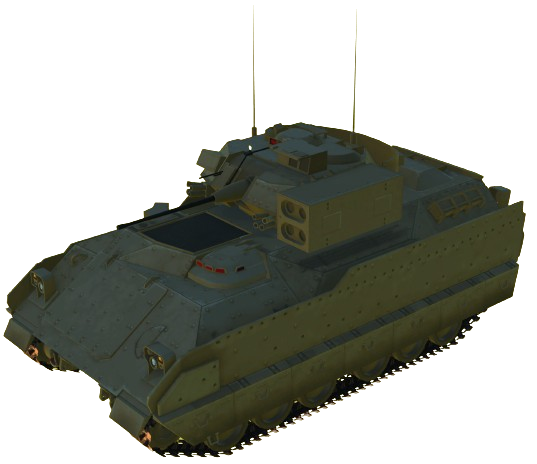
| Country of Origin: | United States of America |
| Origin Desgination: | M6 Linebacker |
| IOC: | 1997 |
| Reloading Time: | Recycle Time: 1s Rearm Time Per Round: 20s Rearm From Depleted: 240s |
| LNs per Battery: | Varies |
| Missile Storage: | Per LN: 12 Per Battery: Varies |
| Guidance Method: | IR |
| Fire-on-Move: | Yes |
| Anti-Munitions: | No |
- M6 Bradley Linebacker (BL) FAS DOD-101
- M6 BRADLEY LINEBACKER (BSFV-E) Basis of Issue Plan (BOIP) FAS DOD-101
- LINEBACKER/MISSILE BATTERY AIR DEFENSE (TOE 44177F000) FAS DOD-101
The M6 Linebacker is a conversion of the M2A2 Bradley IFV. The TOW launcher was replaced with a SAM launcher capable of firing four FIM-92C launchers. A FCS and optical tracker were also added. Internally the M6 was modified to carry two Stinger MANPAD teams. It was an interim solution by the US Army to create a SHORAD system to defend mechanized cavalry. Unfortunately for the Linebacker, the conflicts the US was involved in at the time had minimal air threat and so the need for the M6 Linebacker never truly materialized.
Although it did not see extensive use IRL, it is a well armored, and capable SHORAD system that fills a gap that is often missing in BLUFOR equipment in DCS for this time period.
IR Sensor
The M6 Lineback has a stabalized optical and IR sensor that allows it to engage fighter sized targets about 5.3NM away in day or night conditions. The IR compontent is slightly less effective than the visual light optical component of the M6’s targeting sensor.
Linebacker IR Sensor
| MMD | θMax | θMin |
| 2.5nmi | 60° | -5° |
MISSILE
The M6 Linebacker has a 2x2 launcher carrying 4 FIM-92C Stingers on its turret. In DCS, each M6 Linebacker is capable of holding 12 FIM-92Cs total, and can reload its launcher in 4 minutes (1 minute per missile).

The FIM-92C is an all-aspect IR missile, with generally bad flare rejection. It is a hit-to-kill missile with no proximity fuze.
| MaMax | vAvg | Overload | hMin | hMax | tAcc | rangeMax | rangeMin | TTKMin | TTKMax |
|---|---|---|---|---|---|---|---|---|---|
| 2.2 Ma | 582.5 kt | 18 G | 3ft | 11500 ft | 3 s | 3.24 nmi | 0.11 nmi | ~0.7s | ~20s |
Linebackers were embedded with combat units on the front line. They have no specific mission design requirements. Multiple companies of mechanized troops may be defended by one or two Linebacker platoons, likely one in the later years of its service history. A single platoon was likely to have 4 M6s. Operationally some Linebacker platoons were also paired with a platoon of Avenger systems.
¶ 2️⃣ 🔷AN/TWQ-1 Avenger
🔷AN/TWQ-1 Avenger
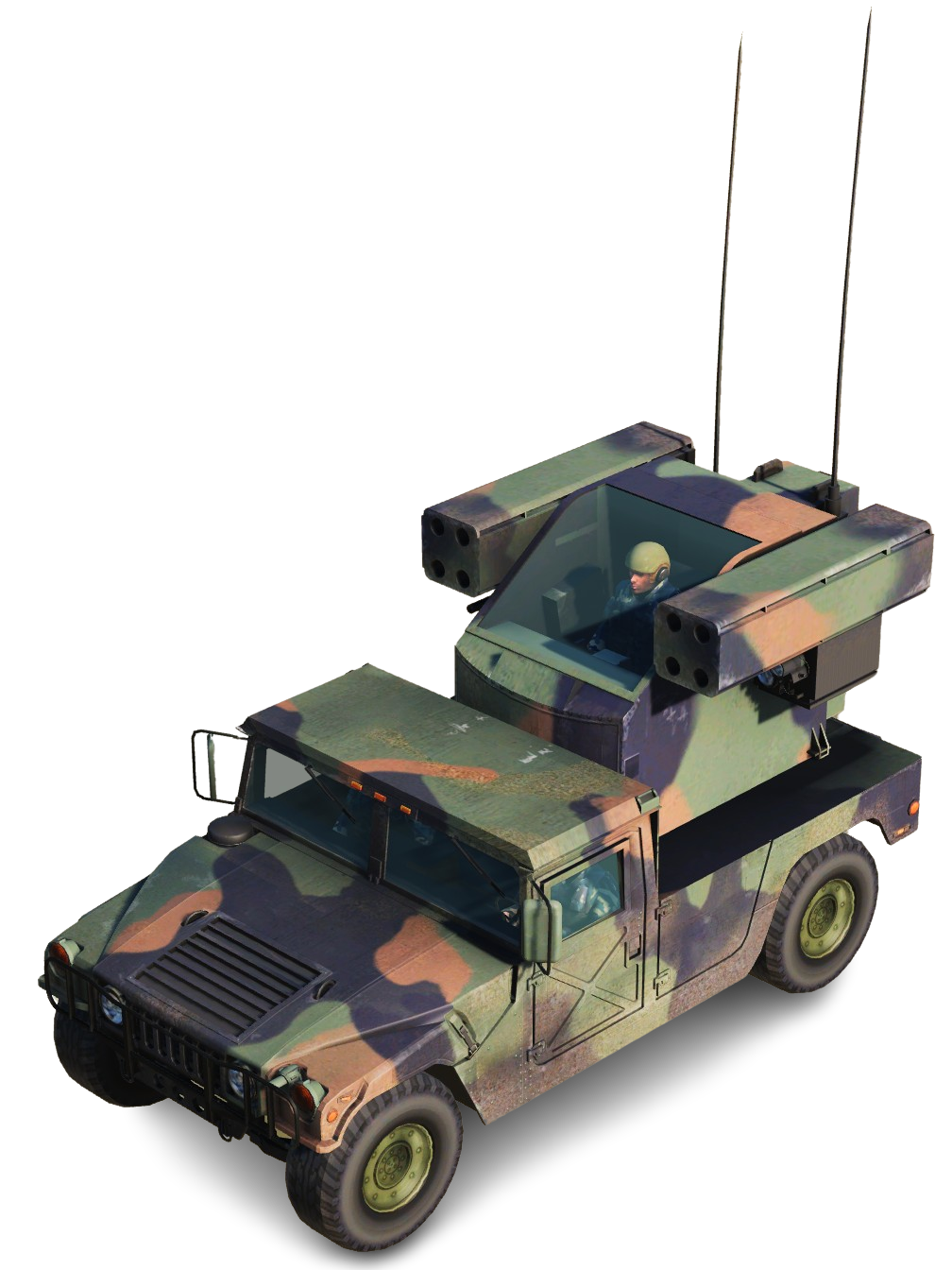
| Country of Origin: | United States of America |
| Origin Desgination: | AN/TWQ-1 |
| IOC: | 1989 |
| Reloading Time: | Recycle Time: 1 Rearm Time Per Round: 40 Rearm From Depleted: 400 |
| LNs per Battery: | 2 |
| Missile Storage: | Per LN: 8 Per Battery: 16 |
| Guidance Method: | IR |
| Fire-on-Move: | No |
| Anti-Munitions: | No |
MISSILE

The FIM-92C is an all-aspect IR missile, with generally bad flare rejection. It is a hit-to-kill missile with no proximity fuze.
| MaMax | vAvg | Overload | hMin | hMax | tAcc | rangeMax | rangeMin | TTKMin | TTKMax |
|---|---|---|---|---|---|---|---|---|---|
| 2.2 Ma | 582.5 kt | 18 G | 3ft | 11500 ft | 3 s | 3.24 nmi | 0.11 nmi |
The Avenger was deployed in batteries of 2 LNs, referred to as sections. An Avenger platoon consisted of 2 or 3 sections, for a total of 4-6 LNs. An armored cavalry regiment would havae a platoon with 2 sections. Avenger platoons with 6 LNs, may have also organized as a 2 sections of 3 LNs, although that was not canonical.
The Avenger is notably one of the few same systems in this reference that is certified to be air dropped.
¶ 2️⃣
 🔷Roland
🔷Roland
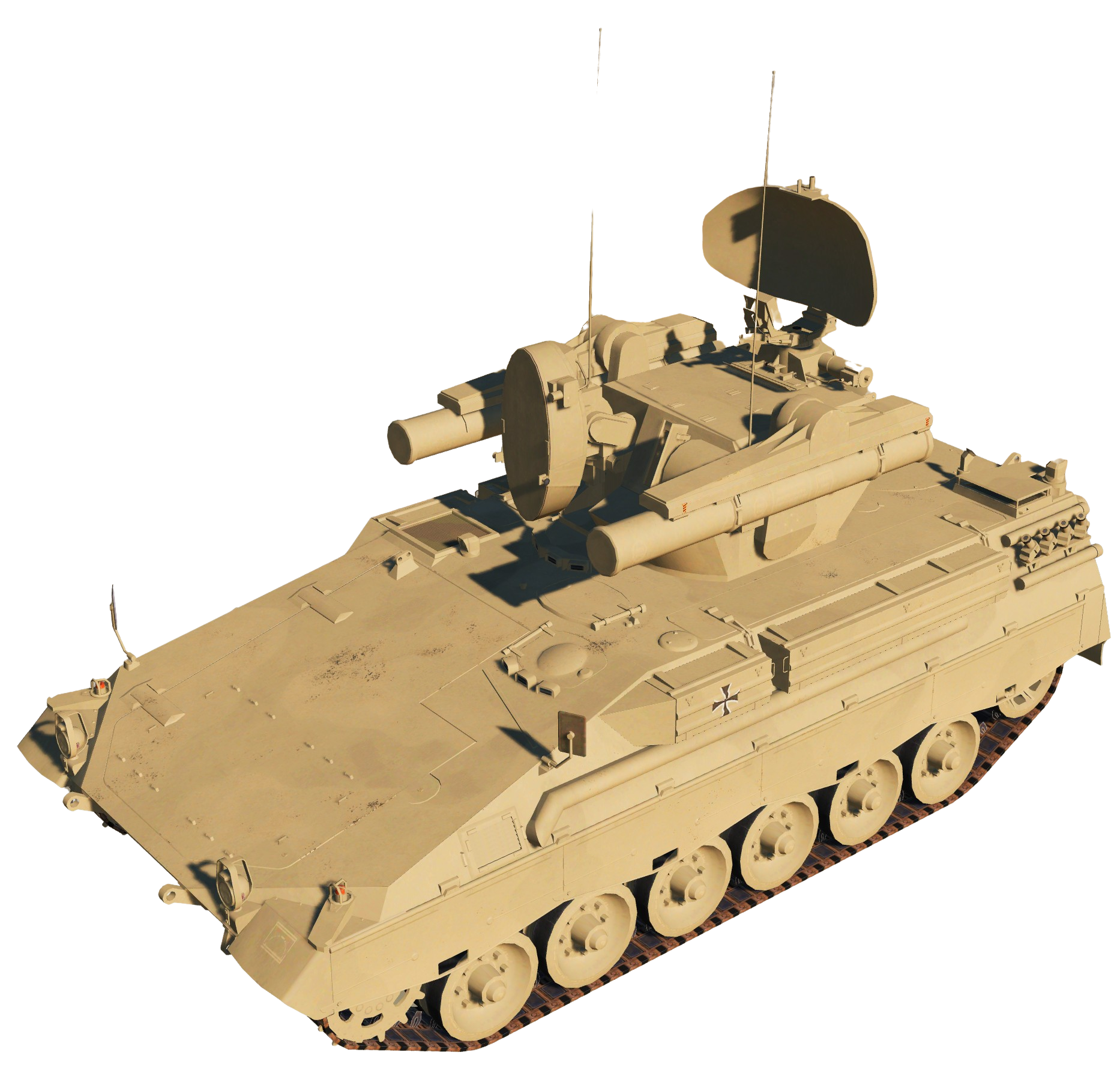
| Country of Origin: | France / Germany |
| Origin Desgination: | Roland 2 |
| IOC: | 1978 (Roland 2) |
| Reloading Time: | Recycle Time: **** Rearm Time Per Round: **** Rearm From Depleted: **** |
| LNs per Battery: | **** |
| Missile Storage: | Per LN: 10 (2 Ready) Per Battery: **** |
| Guidance Method: | SARH (CG IRL) |
| Fire-on-Move: | No |
| Anti-Munitions: | No |
- Roland (missile) Wikipedia (EN)
- Roland (missile) Wikipedia (FR)
- MIM-115 Roland GlobalSecurity.org
- Roland-2 French Short-Range Air Defense (SHORAD) System) ODIN
- Roland Short-Range Air Defence Missile System Army Technology
- Flugabwehrpanzer Roland (1980) Tank-AFV.com
- Roland-1 anti-aircraft missile system Missilery.info
MISSILE

| MaMax | vAvg | Overload | hMin | hMax | tAcc | rangeMax | rangeMin | TTKMin | TTKMax |
|---|---|---|---|---|---|---|---|---|---|
| 2.0 Ma | 1108 kt | 14 G | 33 ft | 19685 ft | 16.2 s | 4.3 nmi | 0.27 nmi | ~0.9s | ~14s |
Roland ADS Integrated Radar
Note: This radar is integrated onto the TELAR vehicle and performs both search and track functions. Specific tracking parameters beyond effective range are not detailed in the Lua data.
| NATO Reporting Name | N/A | |
| Origin Designation | Roland ADS Radar | |
| DCS Reporting Name | Roland ADS | |
| Acquisition Time | **** | |
| MMD | 4.3 nmi | |
| trklockk | 0.85 | |
| trkaltMin | 66 ft | |
| trkaltMax | 19685 ft | |
| trkΔvMin | 19 kts | |
| trkrcsMin | **** | |
| RT | **** | |
| ecmk | **** | |
| θMax | 60° | |
| θMin | -15° | |
| Beam Width | 360° | |
| Concurrent Tracks | 1 |
Roland EWR

| NATO Reporting Name | N/A |
| Origin Designation | Roland Radar |
| DCS Reporting Name | SAM Roland EWR |
| Acquisition Time | 12 s |
| MMD | 18.9 nmi |
| trkaltMin | 49 ft |
| trkaltMax | 19685 ft |
| trkΔvMin | 29 kts |
| trkrcsMin | 0.18m2 |
| RT | 12 seconds |
| ecmk | 0.65 |
| θMax | 60° |
| θMin | -15° |
| Beam Width | 360° |
| Concurrent Tracks | 1 |
Note: The Roland TELAR (Roland ADS) also possesses an integrated search and track radar with shorter range (~6.5 nmi MMD).
Roland systems were typically employed in batteries. While configurations varied by nation and role (e.g., French Army used 4 LNs/battery, German Air Force/Navy used 8), the German Army (Heer) commonly deployed the Marder-based Roland (FlaRakPz 1) in regiments composed of 6 batteries, with each battery containing 6 launch vehicles. A separate surveillance radar vehicle (like the Roland Radar / SAM Roland EWR in DCS) could supplement the TELAR’s integrated radar for wider coverage, although the TELAR can operate autonomously. Deployment focused on providing mobile air defense for maneuvering armored or mechanized formations (Corps-level defense) or point defense for fixed sites like airfields. While capable of integration into larger IADS networks (e.g., German HFLaAFüSys), individual TELARs or batteries could operate independently. As a mobile system, there wasn’t a rigidly prescribed geometric layout like older fixed systems; placement emphasized tactical advantage, concealment, and mutual support within the battery structure.
¶ 1️⃣ 🔷🔺Rapier
🔷🔺Rapier

| Country of Origin: | United Kingdom | |
| Origin Desgination: | Rapier FSA | |
| IOC: | 1971 | |
| Reloading Time: | Recycle Time: **** Rearm Time Per Round: ~38s (Est. from 150s/4) Rearm From Depleted: 150s |
|
| LNs per Battery: | 12 (British Army) | |
| Missile Storage: | Per LN: 4 Per Battery: 48 (Assumes 12 LNs) |
|
| Guidance Method: | SACLOS (Optical or Radar) | |
| Fire-on-Move: | No | |
| Anti-Munitions: | No |
- Rapier British Towed Surface-to-Air Missile System) ODIN
- Rapier (missile) Wikipedia
- Rapier anti-aircraft missile system Missilery.info
MISSILE

The Rapier missile uses Semi-Automatic Command Line-of-Sight (SACLOS) guidance, directed either by the separate Blindfire radar tracking unit or the separate optical tracking unit. It is designed as a hit-to-kill missile against low-altitude targets.
| MaMax | vAvg | Overload | hMin | hMax | tAcc | rangeMax | rangeMin | TTKMin | TTKMax |
|---|---|---|---|---|---|---|---|---|---|
| 2.5 Ma | 1166 kt | 14 G | 164 ft | 9843 ft | 6 s | 3.7 nmi | 0.2 nmi | ~0.6s | ~11.4s |
Blindfire TR Unit

Note: This is a separate towed radar unit required for all-weather engagement.
| NATO Reporting Name | Blindfire |
| Origin Designation | DN 181 |
| DCS Reporting Name | SAM Rapier Blindfire TR |
| Acquisition Time | 0.1 s |
| MMD | 3.7 nmi |
| trklockk | 0.85 |
| trkaltMin | 66 ft |
| trkaltMax | 26247 ft |
| trkΔvMin | **** |
| trkrcsMin | 0.1 m2 |
| RT | 0.1 s |
| ecmk | 0.65 |
| θMax | 60° |
| θMin | 0° |
| Beam Width | 90° |
| Concurrent Tracks | 1 |
Launcher Integrated SR
Note: The launcher unit has an integrated search radar.
| NATO Reporting Name | Dagger | |
| Origin Designation | Marconi Type 93 | |
| DCS Reporting Name | SAM Rapier LN (Integrated) | |
| Acquisition Time | 4 s | |
| MMD | 16.2 nmi | |
| trklockk | **** | |
| trkaltMin | 66 ft | |
| trkaltMax | 26247 ft | |
| trkΔvMin | **** | |
| trkrcsMin | 0.1 m2 | |
| RT | 4 s | |
| ecmk | 0 | |
| θMax | 60° | |
| θMin | 0° | |
| Beam Width | **** | |
| Concurrent Tracks | **** |
Optical Tracker Unit
![]()
Note: This is a separate towed optical unit required for clear-weather engagement if Blindfire radar is not used.
- DCS Name:
SAM Rapier Tracker - Max Tracking Range: 10.8 nmi
- Reaction Time: 6 s
- Altitude Limits: 66 ft to 26247 ft
- Immune to radar ECM
A typical British Army Rapier battery consisted of 12 towed launcher units, organized into platoons or troops. Each launcher requires either the separate Blindfire radar unit or the separate optical tracker unit to engage targets, towed by dedicated vehicles (often Land Rovers). The launcher unit itself contains an integrated search radar. Setup involves unlimbering the trailers, leveling them, and cabling the components together (approx. 15 minutes). The optical tracker is typically placed on a tripod up to 45m away from its associated launcher. The Blindfire radar would also be positioned nearby. A generator trailer provides power. Reloading the 4 ready missiles takes around 2.5 minutes. Batteries could be integrated into larger air defense networks.
¶ 3️⃣ :no: 🔷NASAMS
:no: 🔷NASAMS
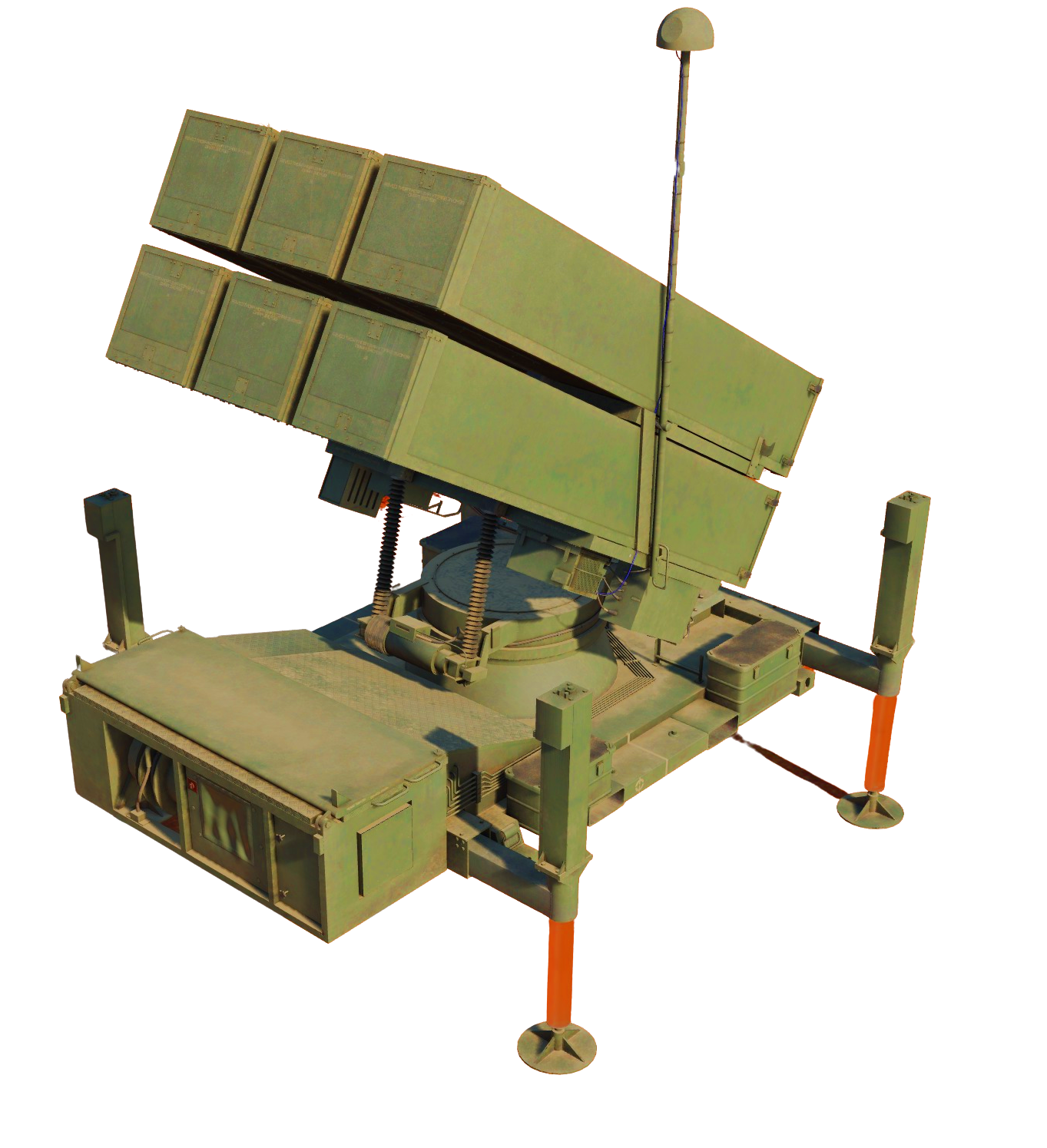
| Country of Origin: | Norway / USA | |
| Origin Desgination: | Norwegian Advanced Surface-to-Air Missile System | |
| IOC: | 1998 | |
| Reloading Time: | Recycle Time: **** Rearm Time Per Round: **** Rearm From Depleted: **** |
|
| LNs per Battery: | 4 (Typical) | |
| Missile Storage: | Per LN: 6 Per Battery: 24 (Assumes 4 LNs) |
|
| Guidance Method: | ARH | |
| Fire-on-Move: | No | |
| Anti-Munitions: | Yes |
MISSILE

NASAMS utilizes modified AIM-120C AMRAAM missiles. These are active radar homing missiles capable of engaging targets beyond visual range and feature good electronic counter-countermeasures (ECCM). While capable of high-G maneuvers, the ground-launched version has significantly less kinematic range compared to its air-launched counterpart.
| MaMax | vAvg | Overload | hMin | hMax | tAcc | rangeMax | rangeMin | TTKMin | TTKMax |
|---|---|---|---|---|---|---|---|---|---|
| 4.0 Ma | 1361 kt | 30 G | 3 ft | 85302 ft | 9 s | 8.1 nmi | 0.38 nmi | ~1.0s | ~21.4s |
AN/MPQ-64F1 Sentinel Radar

Note: The Sentinel radar provides both surveillance and fire control functions.
| NATO Reporting Name | Sentinel | |
| Origin Designation | AN/MPQ-64F1 | |
| DCS Reporting Name | SAM NASAMS SR MPQ64F1 | |
| Acquisition Time | 2 s | |
| MMD | 8.1 nmi | |
| trklockk | 0.85 | |
| trkaltMin | 82 ft | |
| trkaltMax | 55774 ft | |
| trkΔvMin | 29 kts | |
| trkrcsMin | 0.05 m2 | |
| RT | 2 s | |
| ecmk | 0.8 | |
| θMax | 80° | |
| θMin | 0° | |
| Beam Width | 360° | |
| Concurrent Tracks | **** |
AN/MPQ-64F1 Sentinel Radar
Note: Same radar as FCR, showing surveillance parameters.
| NATO Reporting Name | Sentinel |
| Origin Designation | AN/MPQ-64F1 |
| DCS Reporting Name | SAM NASAMS SR MPQ64F1 |
| Acquisition Time | 2 s |
| MMD | 43.2 nmi |
| trklockk | 0.85 |
| trkaltMin | 82 ft |
| trkaltMax | 55774 ft |
| trkΔvMin | 29 kts |
| trkrcsMin | 0.05 m2 |
| RT | 2 s |
| ecmk | 0.8 |
| θMax | 80° |
| θMin | 0° |
| Beam Width | 360° |
| Concurrent Tracks | **** |
Fire Distribution Center (FDC)

Note: The command post (NASAMS_Command_Post in DCS) links the radar and launchers.
A typical NASAMS battery consists of a Fire Distribution Center (FDC), an AN/MPQ-64 Sentinel radar, and multiple launcher units (commonly 3-4, each with 6 missiles). Components are often truck-mounted or placed in shelters for mobility. The system emphasizes network-centric operation, allowing components to be dispersed over a wider area (connected via radio datalinks like Link 16/EPLRS) compared to older cabled systems. This enhances survivability. The Sentinel radar provides 360-degree surveillance and tracking. Launchers are typically oriented towards likely threat axes but can engage targets in any direction passed by the FDC.
Typical Battery Composition (DCS Units):
- 3-4x SAM NASAMS LN AIM-120 (Each carries 6 missiles)
- 1x SAM NASAMS SR MPQ64F1 (Sentinel Radar)
- 1x NASAMS Command Post (Fire Distribution Center - FDC)
Higher Echelon / Network Integration:
- NASAMS batteries are designed for network-centric operations and can be integrated into broader air defense command structures (e.g., US Army IBCS, Link 16). There isn’t a fixed “Regiment” structure like older Soviet systems. Multiple batteries can be coordinated via the network.
Notes: Components are typically truck-mounted or shelter-based. The system emphasizes networked C2, allowing components (launchers, radar, FDC) to be geographically dispersed for survivability while remaining linked via datalink (like EPLRS/Link 16). The Sentinel radar provides 360° surveillance and fire control for the battery.
¶ 1️⃣ 🔺SA-3 Goa
🔺SA-3 Goa
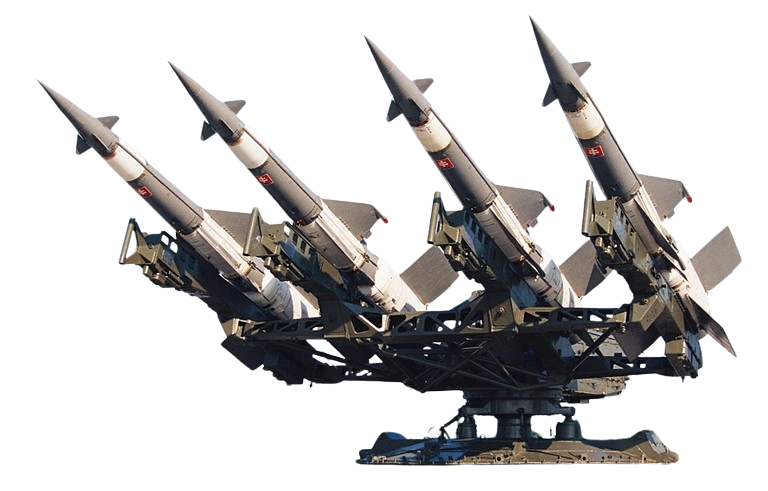
| Country of Origin: | Russia | |
| Origin Desgination: | S-125 Neva/Pechora | |
| IOC: | 1961 | |
| Reloading Time: | Recycle Time: **** Rearm Time Per Round: **** Rearm From Depleted: **** |
|
| LNs per Battery: | 4 (Typical) | |
| Missile Storage: | Per LN: 4 Per Battery: 16 (Assumes 4 LNs) |
|
| Guidance Method: | SARH (CG IRL) | |
| Fire-on-Move: | No | |
| Anti-Munitions: | No |
- Almaz 5V24/5V27/S-125 Neva/Pechora Air Defence System / SA-3 Goa Air Power Australia
- S-125 Neva/Pechora (SA-3 Goa) Russian 6x6 Surface-to-Air Missile System) ODIN
The S-125 Neva (SA-3 Goa) was developed shortly after the S-75 Dvina (SA-2) as a complementary system designed to engage targets at lower altitudes where the S-75 was less effective. It uses command guidance via the SNR-125 “Low Blow” radar. While initially deployed in fixed or semi-mobile configurations, later versions improved mobility. A typical battery consists of launchers (usually four rails each), a Low Blow tracking/engagement radar, and a surveillance radar (often P-15 “Flat Face” or P-12 “Spoon Rest”, though DCS uses the P-19 “Flat Face”).
MISSILE

The 5V27 missile is a two-stage solid-propellant missile guided by radio commands from the Low Blow radar. It has better low-altitude performance and maneuverability compared to the older SA-2 missile.
| MaMax | vAvg | Overload | hMin | hMax | tAcc | rangeMax | rangeMin | TTKMin | TTKMax |
|---|---|---|---|---|---|---|---|---|---|
| ~3.5 Ma | 1750 kt | ~18 G | 65 ft | 59000 ft | ~26 s | 13.5 nmi | 1.3 nmi | ~2.7s | ~27.8s |
Note: Missile parameters based primarily on external sources (APA/ODIN) as Lua data was unavailable.
SNR-125 “Low Blow” TR

| NATO Reporting Name | Low Blow | |
| Origin Designation | SNR-125 | |
| DCS Reporting Name | SAM SA-3 S-125 “Low Blow” TR | |
| Acquisition Time | 6 s | |
| MMD | 13.5 nmi | |
| trklockk | 1 | |
| trkaltMin | 82 ft | |
| trkaltMax | 65617 ft | |
| trkΔvMin | 19 kts | |
| trkrcsMin | 0.18 m2 | |
| RT | 6 s | |
| ecmk | 0.5 | |
| θMax | 80° | |
| θMin | -5° | |
| Beam Width | 90° | |
| Concurrent Tracks | 2 |
P-19 “Flat Face B” SR
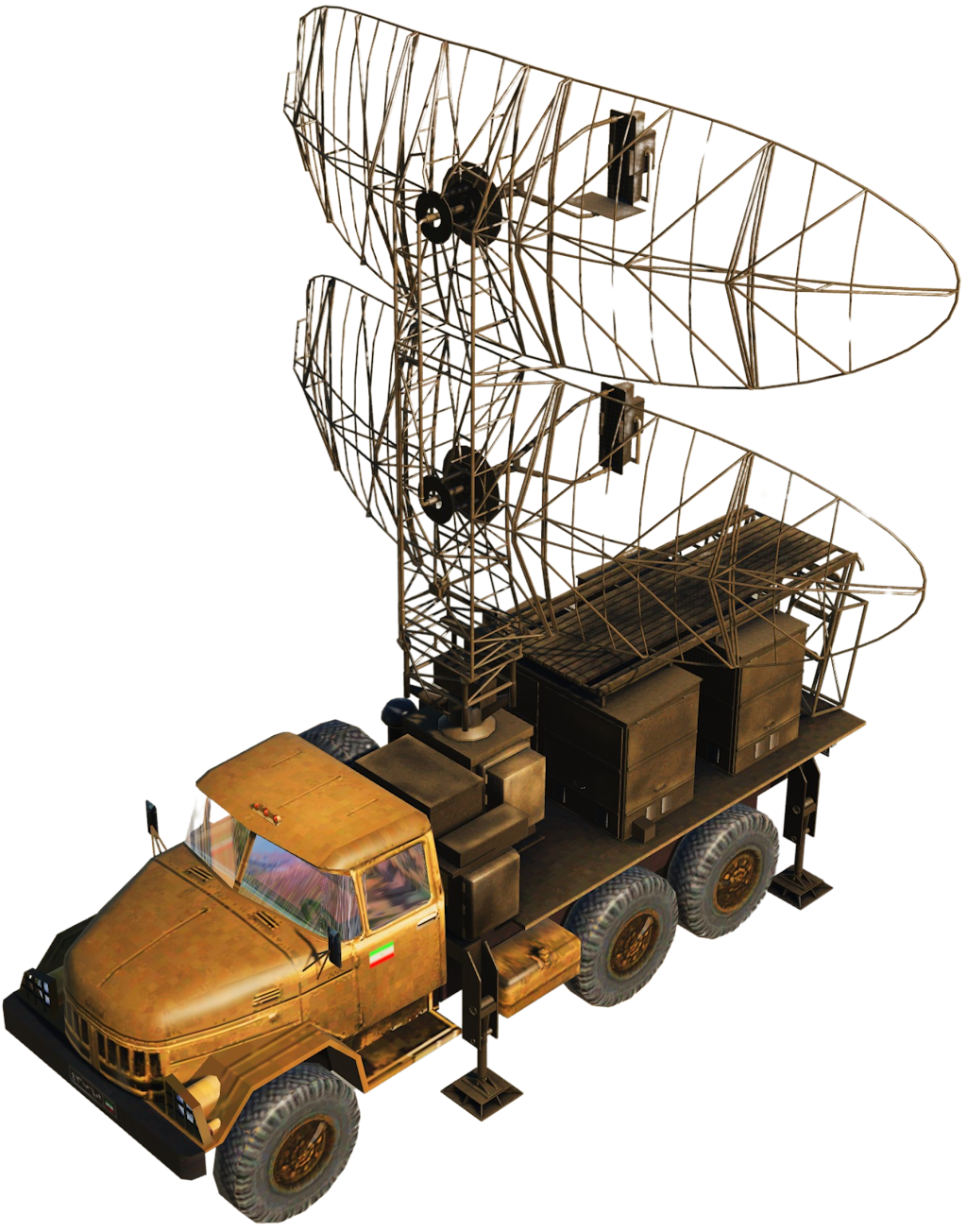
Note: DCS uses the P-19 Flat Face B for the SA-3 system.
| NATO Reporting Name | Flat Face B | |
| Origin Designation | 1RL134 (P-19) | |
| DCS Reporting Name | SAM SA-2/3/5 P19 “Flat Face” SR | |
| Acquisition Time | 9 s | |
| MMD | 86.4 nmi | |
| trklockk | 0.85 | |
| trkaltMin | 82 ft | |
| trkaltMax | 98425 ft | |
| trkΔvMin | 29 kts | |
| trkrcsMin | 0.18 m2 | |
| RT | 9 s | |
| ecmk | 0.5 | |
| θMax | 20° | |
| θMin | -5° | |
| Beam Width | 360° | |
| Concurrent Tracks | **** |
Typical Battery Composition (DCS Units):
- Core Components:
- 4x SAM SA-3 S-125 “Goa” LN (4 missiles each)
- 1x SAM SA-3 S-125 “Low Blow” TR
- 1x SAM SA-2/3/5 P19 “Flat Face” SR
- Support Components (Representational DCS Surrogates):
- Command/Control Van: 1-2x
Ural-375 PBUorZIL-131 KUNG(Surrogate for UNK Cabin/Control Van) - Missile Transloader: 3-4x
ZiL-131orUral-375(Surrogate for PR-14AM on ZiL chassis) - Generator: 1-2x
5I57A(Trailer) orUral-375 APA-80(Surrogate for mobile diesel generator) - Fuel Truck: 1x
Ural ATsP-6orZIL-131 VZ-20(For generators/vehicles)
- Command/Control Van: 1-2x
Typical Regiment/Division Composition (DCS Units):
- HQ:
- 1x EWR Radar (e.g.,
1L13 EWR) (Optional, for wider coordination) - 1x Command Post Vehicle (e.g.,
SKP-11,Ural-375 PBU) (Optional) - Technical Support elements (e.g., Repair trucks (
Ural-4320 MTO-AT,ZIL-131 MTO-AT), additional Transloaders (ZiL-131))
- 1x EWR Radar (e.g.,
- Subordinate Batteries: 3-4 (Typical)
Notes: SA-3 batteries require significant ground support. The Low Blow TR handles command functions (no separate CP unit needed in DCS). Deployment involves cabling between the Low Blow, SR, launchers, and power units. Launchers are placed 50-150m from the Low Blow. While more mobile than SA-2, setup/teardown takes hours. Often deployed near SA-2 sites for mutual support. Reloading is a slow, manual process using the transloader vehicles.
¶ 2️⃣ 🔺🏴 SA-8 Gecko
🔺🏴 SA-8 Gecko
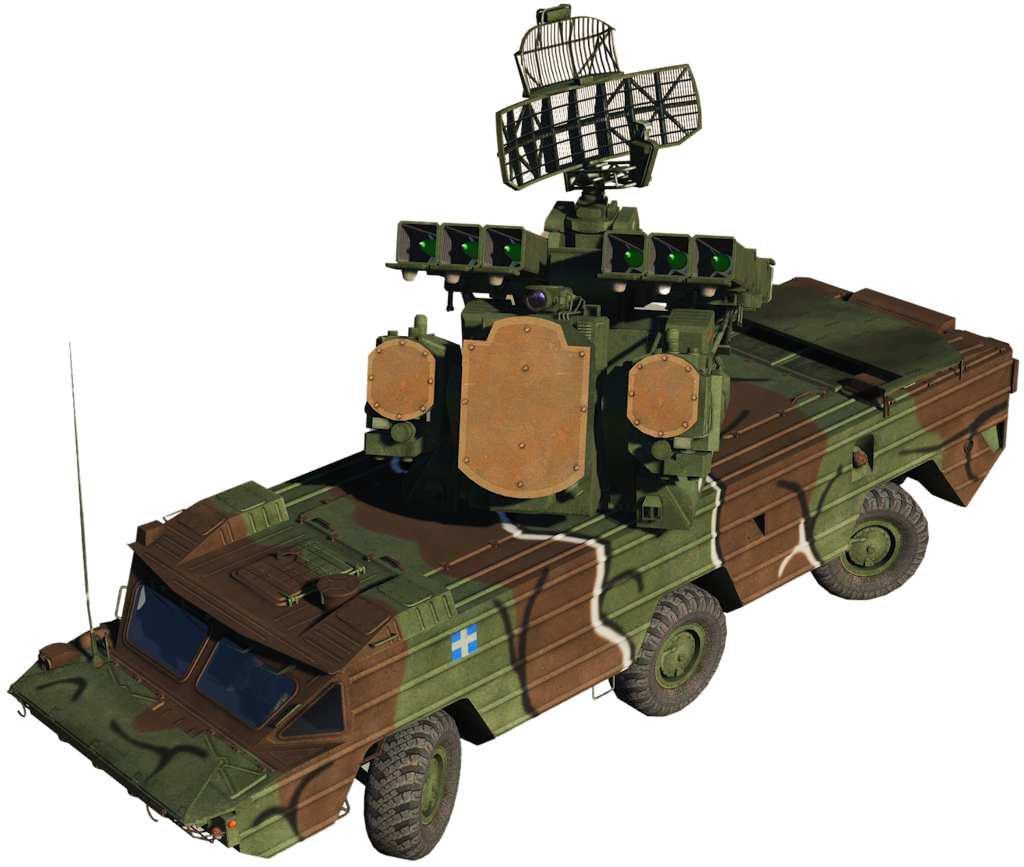
| Country of Origin: | Russia | |
| Origin Desgination: | 9K33 Osa | |
| IOC: | 1971 | |
| Reloading Time: | Recycle Time: **** Rearm Time Per Round: **** Rearm From Depleted: 300s |
|
| LNs per Battery: | 4 (Typical) | |
| Missile Storage: | Per LN: 6 Per Battery: 24 (Assumes 4 LNs) |
|
| Guidance Method: | SARH (CG IRL) | |
| Fire-on-Move: | Yes | |
| Anti-Munitions: | No |
The SA-8 Gecko (9K33 Osa) is a highly mobile, amphibious, all-in-one TELAR (Transporter Erector Launcher and Radar) system. Designed for short-range defense of ground forces, it integrates search radar, tracking radar, and missiles onto a single 6x6 wheeled chassis. Its “Land Roll” radar system allows it to operate autonomously.
- APA-TR-2009-0704: 9K33 Osa/Romb / SA-8 Gecko Air Power Australia
- 9K33 Osa (SA-8 Gecko) Russian 6x6 Amphibious Short-Range Tactical Surface-to-Air Missile System) ODIN
MISSILE

The 9M33 missile uses command guidance via the TELAR’s integrated tracking radar. It is relatively maneuverable for its era but has poor resistance to countermeasures.
| MaMax | vAvg | Overload | hMin | hMax | tAcc | rangeMax | rangeMin | TTKMin | TTKMax |
|---|---|---|---|---|---|---|---|---|---|
| 2.1 Ma | 778 kt | 14 G | 82 ft | 16404 ft | 13 s | 5.6 nmi | 0.8 nmi | ~3.7s | ~25.9s |
“Land Roll” TR Function
Note: Integrated onto the TELAR. Parameters below are specific to tracking/engagement.
| NATO Reporting Name | Land Roll | |
| Origin Designation | 1S51M3 | |
| DCS Reporting Name | SAM SA-8 Osa “Gecko” TEL (TR) | |
| Acquisition Time | 3 s | |
| MMD | 5.6 nmi | |
| trklockk | **** | |
| trkaltMin | **** | |
| trkaltMax | **** | |
| trkΔvMin | **** | |
| trkrcsMin | 0.1 m2 | |
| RT | 3 s | |
| ecmk | 0.8 | |
| θMax | ~78° | |
| θMin | ~ -12° | |
| Beam Width | ~1° | |
| Concurrent Tracks | 2 |
“Land Roll” SR Function
Note: Integrated onto the TELAR. Parameters below are specific to search/acquisition.
| NATO Reporting Name | Land Roll | |
| Origin Designation | 1S51M3 | |
| DCS Reporting Name | SAM SA-8 Osa “Gecko” TEL (SR) | |
| Acquisition Time | **** | |
| MMD | 16.2 nmi | |
| trklockk | 0.85 | |
| trkaltMin | ~33 ft | |
| trkaltMax | 16404 ft | |
| trkΔvMin | 19 kts | |
| trkrcsMin | **** | |
| RT | **** | |
| ecmk | **** | |
| θMax | 60° | |
| θMin | -15° | |
| Beam Width | 360° | |
| Concurrent Tracks | **** |
SA-8 Batteries nominally consist of four 9A33 Osa TELAR vehicles. A command vehicle, potentially represented by a Dog Ear (PPRU-1) in DCS (though not strictly required for SA-8 function in-game), might coordinate the battery. Each TELAR is self-contained and capable of autonomous operation. Being highly mobile and amphibious, they often operate dispersed near front lines or defending key points, utilizing terrain for concealment and employing “shoot-and-scoot” tactics. A regimental headquarters might include additional long-range surveillance radars like the P-40 Long Track (use P-19 Flat Face or 1L13 EWR as substitutes in DCS).
Typical Battery Composition (DCS Units):
- 4x SAM SA-8 Osa “Gecko” TEL (
Osa 9A33 ln.lua) - 1x Dog Ear Radar (
Dog Ear radar) (Optional - Provides coordination)
Typical Regiment Composition (DCS Units):
- HQ:
- 1x P-19 SR (
p-19 s-125 sr.lua) or 1x 1L13 EWR (1L13 EWR) (Surrogate for P-40 Long Track) - 1x Command Post Vehicle (e.g.,
Ural-375 PBU,SKP-11)
- 1x P-19 SR (
- Subordinate Batteries: 4 (Typical)
Notes: Each SA-8 TELAR is self-contained and can operate autonomously. Batteries often operate dispersed near front lines, utilizing mobility for “shoot-and-scoot” tactics. The Dog Ear provides enhanced coordination for the battery, while the Regimental HQ relies on longer-range surveillance radars.
¶ 1️⃣ 🔺🏴 SA-9 Gaskin
🔺🏴 SA-9 Gaskin
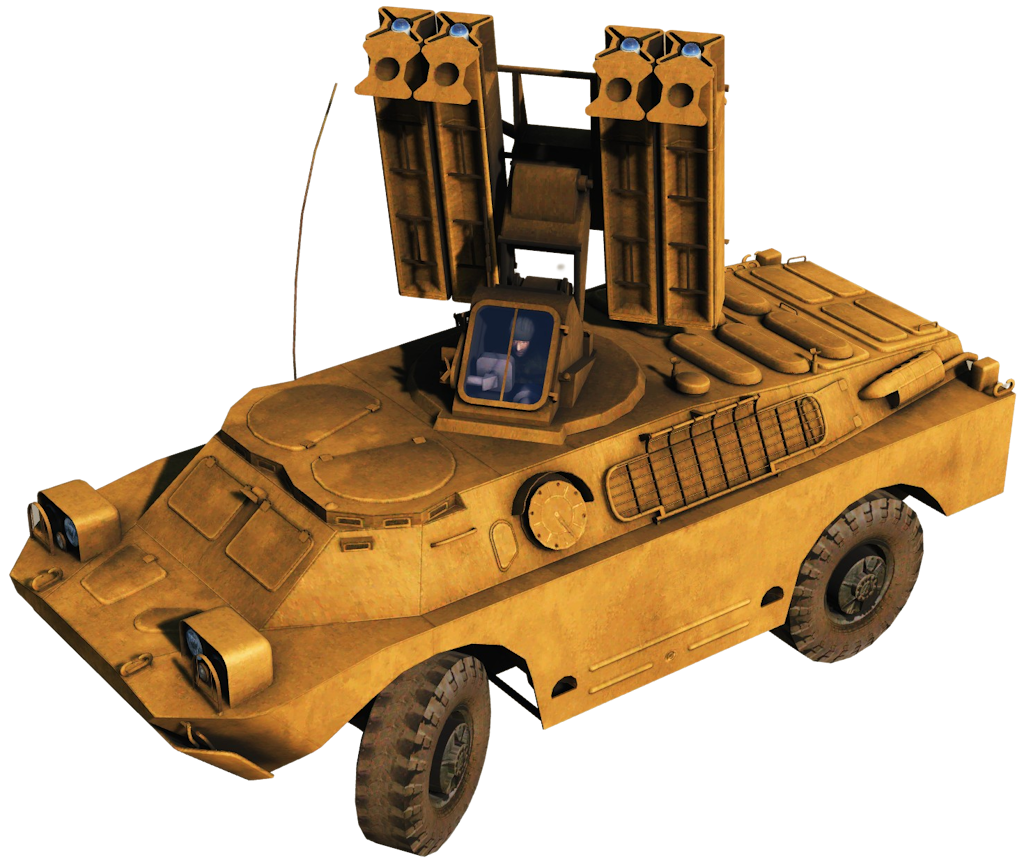
| Country of Origin: | Russia | |
| Origin Desgination: | 9K31 Strela-1 | |
| IOC: | 1968 | |
| Reloading Time: | Recycle Time: **** Rearm Time Per Round: **** Rearm From Depleted: **** |
|
| LNs per Battery: | 4 (Typical) | |
| Missile Storage: | Per LN: 8 (4 Ready) Per Battery: 32 (Assumes 4 LNs) |
|
| Guidance Method: | IR | |
| Fire-on-Move: | Yes | |
| Anti-Munitions: | No |
The SA-9 Gaskin (9K31 Strela-1) is a highly mobile, amphibious, short-range, low-altitude infrared-guided SAM system mounted on a BRDM-2 wheeled chassis. It uses passive optical/IR tracking for target acquisition and relies on the missile’s IR seeker for terminal guidance, making it difficult to detect via RWR. It was designed to provide air defense for maneuvering ground forces, often working alongside ZSU-23-4 SPAAGs.
- APA-TR-2008-0502: Russian / Soviet Point Defence Weapons Air Power Australia
- 9K31 Strela-1 (SA-9 Gaskin) Russian 4x4 Infrared Guided Surface-to-Air Missile System ODIN
MISSILE

The 9M31 missile uses a cooled lead-sulphide (PbS) infrared seeker, giving it better sensitivity and engagement aspects compared to earlier uncooled seekers like the SA-7/SA-14. However, it still has limited resistance to flares and other countermeasures.
| MaMax | vAvg | Overload | hMin | hMax | tAcc | rangeMax | rangeMin | TTKMin | TTKMax | ccmk |
|---|---|---|---|---|---|---|---|---|---|---|
| 1.8 Ma | 486 kt | 16 G | 98 ft | 11483 ft | 10 s | 2.3 nmi | 0.43 nmi | ~3.2s | ~17.0s | 1.0 |
Typical Battery Composition (DCS Units):
- 4x SAM SA-9 Strela 1 “Gaskin” TEL (
Strela-1 9P31.lua) (4 ready + 4 reloads each) - (Often paired with ZSU-23-4 Shilka platoon/battery)
Typical Regiment Composition (DCS Units):
- HQ:
- 1x Command Post Vehicle (e.g.,
Ural-375 PBU,BTR-80) - (May include regimental surveillance radar like P-15 Flat Face or P-19 Flat Face B -
p-19 s-125 sr.lua)
- 1x Command Post Vehicle (e.g.,
- Subordinate Batteries: Multiple SA-9 and ZSU-23-4 batteries.
Notes: SA-9 TELARs operate passively, making them difficult to detect electronically. They rely on visual acquisition aided by optical sights. Batteries often operate dispersed within maneuvering units, providing close air defense. Pairing with ZSU-23-4s provides denser coverage, especially against very low or slow targets.
¶ 2️⃣  🔺🏴 SA-13 Gopher
🔺🏴 SA-13 Gopher
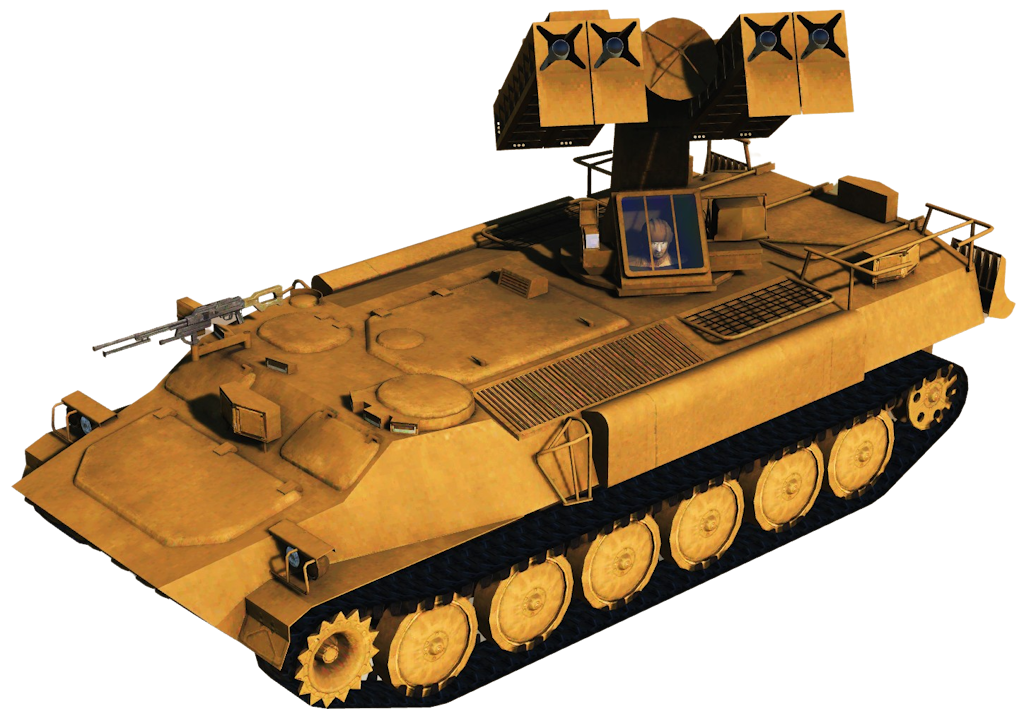
| Country of Origin: | Russia | |
| Origin Desgination: | 9K35 Strela-10 | |
| IOC: | 1976 | |
| Reloading Time: | Recycle Time: **** Rearm Time Per Round: **** Rearm From Depleted: **** |
|
| LNs per Battery: | 4 (Typical) | |
| Missile Storage: | Per LN: 8 (4 Ready) Per Battery: 32 (Assumes 4 LNs) |
|
| Guidance Method: | IR | |
| Fire-on-Move: | Yes | |
| Anti-Munitions: | No |
The SA-13 Gopher (9K35 Strela-10) is a mobile, tracked, short-range, low-altitude infrared-guided SAM system, serving as a successor to the SA-9. Mounted on an MT-LB chassis, it offers better cross-country mobility than the SA-9’s BRDM base. It uses an improved IR missile (9M333 in DCS) with better seeker performance and some resistance to countermeasures compared to the SA-9’s 9M31. Like the SA-9, it relies on passive optical/IR tracking for acquisition, making it RWR-silent. Some variants include a small passive radar detection antenna to cue the optics.
- APA-TR-2009-0801: 9K35 Strela 10 / SA-13 Gopher Air Power Australia
- 9K35 Strela-10 (SA-13 Gopher) Russian Short-Range Surface-to-Air Missile System ODIN
MISSILE

The 9M333 missile features an improved dual-mode (IR/Imaging IR or contrast-lock) seeker compared to the 9M37 used on earlier Strela-10 variants, offering better IRCCM capabilities (represented by ccm_k0=0.5).
| MaMax | vAvg | Overload | hMin | hMax | tAcc | rangeMax | rangeMin | TTKMin | TTKMax | ccmk |
|---|---|---|---|---|---|---|---|---|---|---|
| 2.0 Ma | 583 kt | 16 G | 82 ft | 11483 ft | 8 s | 2.7 nmi | 0.43 nmi | ~2.7s | ~16.7s | 0.5 |
Typical Battery Composition (DCS Units):
- 4x SAM SA-13 Strela 10M3 “Gopher” TEL (
Strela-10M3.lua) (4 ready + 4 reloads each) - (Often paired with ZSU-23-4 Shilka or 2S6 Tunguska platoon/battery)
Typical Regiment Composition (DCS Units):
- HQ:
- 1x Command Post Vehicle (e.g.,
Dog Ear radar(PPRU-1),BTR-80) - (May include regimental surveillance radar like P-19 Flat Face B -
p-19 s-125 sr.luaor mobile radar likeDog Ear radar)
- 1x Command Post Vehicle (e.g.,
- Subordinate Batteries: Multiple SA-13 batteries, potentially mixed with Tunguska/Shilka batteries.
Notes: SA-13 TELARs operate passively (optics/IR), making them difficult to detect electronically. The Dog Ear radar (PPRU-1) vehicle is often associated with SA-13 batteries for coordination and target cueing via datalink, although the TELAR can operate autonomously using its optical sight. Typically deployed with maneuvering ground forces.
¶ 3️⃣🇷🇺 🔷🔺SA-15 Gauntlet (Tor)
| Origin Designation: | Tor (9K331) |
| DCS Reporting Name: | SA-15 |
| NATO Reporting Name: | Gauntlet |
| Role: | SHORAD / Point Defense / C-PGM |
| Mobility: | Tracked TELAR (GM-5955) |
| Crew: | 3 |
| IOC: | 1991 (Tor-M1) |
| Guidance Method: | ACLOS |
| Missile Storage: | Per LN: 8 Per Battery: 32 (4 LNs typical) |
| Fire-on-Move: | No (Short halts only) |
The 9K330 Tor (NATO: SA-15 Gauntlet) is a highly mobile, rapid-reaction, all-weather, low-to-medium altitude, short-range surface-to-air missile system designed for engaging aircraft, helicopters, cruise missiles, precision-guided munitions, unmanned aerial vehicles, and ballistic targets. Developed as a successor to the SA-8 Gecko, the Tor is designed as a self-contained TELAR (Transporter Erector Launcher And Radar) integrating search radar, tracking/engagement radar, and missiles onto a single tracked chassis (GM-5955 in DCS). Its primary role is point defense for high-value assets (including elements of larger SAM systems like S-300/400) and providing air defense cover for maneuvering ground forces. The system uses vertically cold-launched 9M330/9M331 missiles guided by Automatic Command to Line-Of-Sight (ACLOS), capable of engaging two targets simultaneously in the Tor-M1 variant represented in DCS. Later versions (Tor-M2) improve range, altitude, and multi-target capability.
The SA-15 is one of the most lethal systems in vanilla DCS. The 9M330 fired by the Gauntlet is extremely fast and manueverable, difficult to chaff, and impossible to kinematically defeat with any level of reliability.
The
Ma~Max~ |
kt~Max~ |
Overload | h~Min~ |
h~Max~ |
t~Acc~ |
range~Max~ |
range~Min~ |
TTK~Min~ |
TTK~Max~ |
|---|---|---|---|---|---|---|---|---|---|
| 2.5 Ma | 1654 kt | 30 G | 33 ft | 19,685 ft | 4 s | 6.48 nmi | 0.81 nmi | 3.5 s | 28.0 s |
- Missile Name: 9M330 / 9M331
- DCS Name: SA9M330
v~Avg~: ~835 kt (~430 m/s)- Warhead: 14.8 kg HE-Frag
- Missile Max Kinematic Range: 6.48 nmi (12000 m)
- Notes: Missile uses nose-mounted thrust vectoring jets after vertical cold launch to rapidly pitch towards the target.
| Recycle Time | Rearm Time Per Round | Rearm From Depleted |
|---|---|---|
| **** | **** | ~18 min |
| Freq Band | Range | θ~Min~ |
θ~Max~ |
Scan Width | Beam Width | Scan Rate | trk~rcs~^Min^ |
RT | ecm^k^ |
Concurrent Tracks |
|---|---|---|---|---|---|---|---|---|---|---|
| E/F-Band | 13.5 nmi | 0° | 32° | 360° | 4° Vert | 1 s / 3 s | **** | 5 s | **** | **** (Assume 1) |
- Notes: The TAR (Target Acquisition Radar) is a 3D Pulse Doppler radar mounted on top of the turret. Can scan 3 elevation sectors (each 4° wide) per second, covering 0-32° in 3 seconds. Detection range against 0.1m² RCS target is ~20km (10.8 nmi) according to external sources, 25km in DCS Lua. DCS SR file provides
reactionTime = 5. Max/Min target altitude and velocity constraints also present. No explicit track limit found in DCS Sensor file, assume 1. External sources cite 10-48 tracks for TAR, likely system/BCP capability or later variants.
| Freq Band | Range | θ~Min~ |
θ~Max~ |
Scan Width | Beam Width | Scan Rate | trk~rcs~^Min^ |
RT | ecm^k^ |
trk~lock~^k^ |
trk~alt~^Min^ |
trk~alt~^Max^ |
trk~Δv~^Min^ |
Concurrent Tracks |
|---|---|---|---|---|---|---|---|---|---|---|---|---|---|---|
| G/H-Band | 6.48 nmi | -10° | 85° | +/- 15° | **** | **** | **** | 6 s | **** | **** | 33 ft | 19,685 ft | **** | 2 |
Typical Battery Composition (DCS Units):
- 4x
SAM SA-15 Tor 9A331(TELAR - LN) [8 missiles each] - 1x
CP 9S737 Ranzhir(Mobile Command Post - CP) - 2x
Ural-4320T(Surrogate for 9T244 Transloader - TZM) - 1x
Ural-4320-31(Surrogate for 9T245 Transporter - TZM) - 1x
Ural-4320T(Surrogate for 9V887M2K Engineering Vehicle - MTO) - 1x
Ural-375orZIL-131Command Van (Surrogate for Maintenance/SPTA vehicles) - 1x
ATZ-10Fuel Truck
Typical Higher Echelon Composition (DCS Units):
- A Tor Regiment often includes:
- Regimental Command Post (e.g.,
CP 9S737 Ranzhiror higher echelon CP surrogate likeSKP-11) - Possibly dedicated acquisition radars like
SR 51U6 Kasta(if available) orDog Ear radaras surrogate.
- Regimental Command Post (e.g.,
- Typically commands 3-5 Tor Batteries.
Notes:
- The Tor system is highly automated, designed for rapid reaction times (5-10 seconds from detection to launch) and protection of maneuver elements or high-value assets.
- It can operate autonomously or networked via the Ranzhir BCP for target distribution and improved situational awareness.
- Optimized for countering PGMs and low-flying threats.
¶ 2️⃣ 🔺🏴 SA-19 Grison
🔺🏴 SA-19 Grison
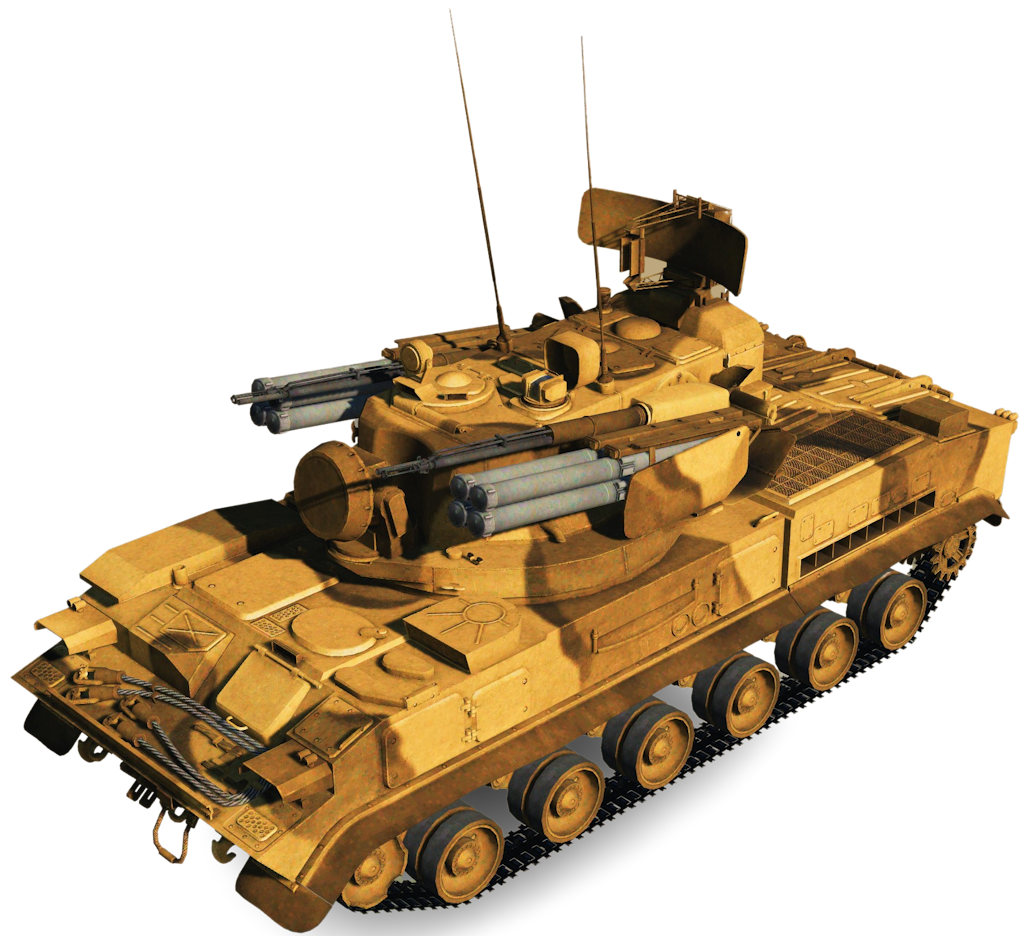
| Country of Origin: | Soviet Union |
| Origin Desgination: | 2S6 “Tunguska” |
| IOC: | 1982 |
| Reloading Time: | Recycle Time: **** Rearm Time Per Round: ~2 min Rearm From Depleted: ~16 min |
| LNs per Battery: | 4-6 (Typical/Doctrinal) |
| Missile Storage: | Per LN: 8 Per Battery: 32-48 |
| Guidance Method: | SACLOS (Radio Command) |
| Fire-on-Move: | Guns: Yes, Missiles: No |
| Anti-Munitions: | No |
| Non-Manuevering Pk | **** |
| Manuevering Pk | **** |
- 2S6M Tunguska Army Technology
- 2K22 Tunguska / SA-19 Grison GlobalSecurity.org
- SA-19 Grison / 2K22 Tunguska FAS.org
- SA-19 Grison 9M311 missile Missilery.info
The 2S6 Tunguska (NATO: SA-19 Grison) is a Soviet/Russian self-propelled anti-aircraft weapon system (SPAAG) armed with both surface-to-air missiles and autocannons. Developed to replace the ZSU-23-4 Shilka, it provides point defense for friendly ground forces against low-flying aircraft, helicopters, and cruise missiles. The system integrates search radar, tracking radar, optical sights, missiles, and guns onto a single tracked chassis derived from the GM-5975 family. While it can fire its 30mm cannons on the move, it must halt to launch its 9M311 missiles. Reloading missiles is a manual process using a dedicated transloader vehicle and takes approximately 16 minutes for a full complement of 8 missiles. In DCS, it represents a potent short-range threat, particularly dangerous to helicopters and low, slow aircraft.
¶ Missile

The 9M311 is a two-stage, solid-propellant missile guided via radio command Semi-Automatic Command Line-of-Sight (SACLOS). It features a proximity and impact fuze coupled with a continuous-rod warhead (though DCS uses SA9M311 warhead def). It lacks its own seeker head, relying entirely on the Tunguska’s tracking radar and operator commands for guidance.
| MaMax | vAvg | Overload | hMin | hMax | tAcc | rangeMax | rangeMin | TTKMin | TTKMax | ccmk |
|---|---|---|---|---|---|---|---|---|---|---|
| 3.1 | 750 m/s | 32 G | 10 m | 3500 m | 2.6 s | 8 km | 500 m | ~0.7 s | ~10.7 s | N/A |
Integrated Tracking Radar

Note: Integrated into the 2S6 chassis.
| NATO Reporting Name | Hot Shot (Same as SR) | |
| Origin Designation | 1RL144 / 1RL144M | |
| DCS Reporting Name | 2S6 Tunguska |
|
| Acquisition Time | 10 s | |
| MMD | 13 km | |
| trklockk | 1.0 | |
| trkaltMin | 10 m | |
| trkaltMax | 3500 m | |
| trkΔvMin | 0 m/s | |
| trkrcsMin | 0.02 m² | |
| RT | 10 s | |
| ecmk | 1.0 | |
| θMax | 85 deg | |
| θMin | -10 deg | |
| Beam Width | 3.0 deg | |
| Concurrent Tracks | 1 |
Integrated Surveillance Radar

Note: Integrated into the 2S6 chassis.
| NATO Reporting Name | Hot Shot | |
| Origin Designation | 1RL138 / 1RL138M | |
| DCS Reporting Name | 2S6 Tunguska |
|
| Acquisition Time | 4.5 s | |
| MMD | 18 km | |
| trklockk | 1.0 | |
| trkaltMin | 0 m | |
| trkaltMax | 6000 m | |
| trkΔvMin | 30 m/s | |
| trkrcsMin | **** | |
| RT | 4.5 s | |
| ecmk | **** | |
| θMax | 20 deg | |
| θMin | 0 deg | |
| Beam Width | **** | |
| Concurrent Tracks | **** |
Typical Battery Composition (DCS Units):
- 4-6x
2S6 Tunguska(dcs-lua-datamine/_G/db/Units/Cars/Car/2S6 Tunguska.lua) (TELAR, 8 missiles + 1904 rounds 30mm each) - Support Components (Representational DCS Surrogates):
- 1x
Ural-375 PBUorSKP-11(Surrogate for Battery Command Post, e.g., PPRU-M1) - 1-2x
Ural-375 ZU-23 Transporter(Surrogate for 2F77M Transloader Vehicle) - 1x
ATMZ-5(Surrogate for Fuel Truck) - Maintenance vehicles (
Ural-4320 MTO-AT)
- 1x
Typical Higher Echelon Composition (DCS Units):
- Tunguska batteries typically form the air defense component of motorized rifle or tank regiments.
- HQ: Regimental command post receives data from battery CPs and may integrate feeds from higher-echelon radars.
- Surrogates:
Ural-375 PBU,SKP-11
- Surrogates:
- Subordinate Batteries: Typically 1 battery of 4-6 TELARs per regiment.
Notes:
The 2S6 is a highly mobile, self-contained SHORAD system designed for accompanying mechanized forces. Its combination of guns and missiles allows engagement of threats from very close range out to 8 km. While capable, the SACLOS missile guidance requires the tracking radar to maintain line-of-sight to the target throughout the engagement, limiting it to one target channel at a time for missiles. The integrated surveillance radar provides 360-degree coverage while rotating. Reloading missiles is a manual, time-consuming process requiring a dedicated transloader vehicle.
¶ 3️⃣ 🔺Red Banner-7
🔺Red Banner-7
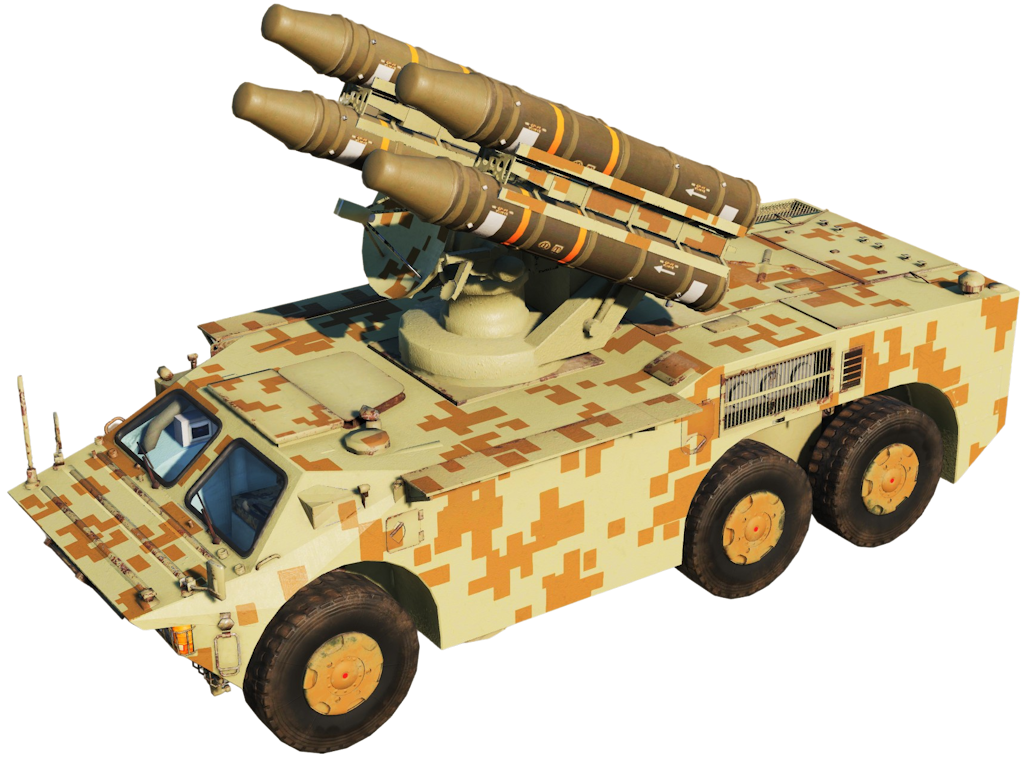
| Country of Origin: | China | |
| Origin Desgination: | HQ-7 (HongQi-7) | |
| NATO Reporting Name: | CH-SA-4 | |
| IOC: | ~1988 (Based on external sources) | |
| Reloading Time: | Recycle Time: **** Rearm Time Per Round: **** Rearm From Depleted: **** |
|
| LNs per Battery: | 3-4 | |
| Missile Storage: | Per LN: 4 Per Battery: **** |
|
| Guidance Method: | SACLOS (Radio Command) | |
| Fire-on-Move: | No | |
| Anti-Munitions: | No | |
| Non-Manuevering Pk | **** | |
| Manuevering Pk | **** |
- APA-TR-2010-0901: CPMIEC HQ-7/FM-80 / CSA-4 Sino-Crotale Air Power Australia
- HQ-7 (FM-80) Chinese Short-Range Air Defense Missile System ODIN
The HQ-7 (HongQi-7, Red Banner-7) is a Chinese short-range air defense system derived from the French Crotale. It exists in both self-propelled (TELAR + separate radar vehicle) and towed versions. The system uses radio command guidance (SACLOS) to direct its missiles against low-altitude threats like aircraft and helicopters. The DCS version represents the self-propelled variant (HQ-7B SHORAD TELAR and HQ-7B SHORAD SR) using the HQ-7B missile. It provides mobile point defense, comparable in role to systems like the Roland or Rapier.
¶ Missile

The HQ-7B is a solid-propellant missile guided via radio commands from the TELAR’s integrated tracking radar/optics or the separate radar vehicle. It relies entirely on external guidance signals.
| MaMax | vAvg | Overload | hMin | hMax | tAcc | rangeMax | rangeMin | TTKMin | TTKMax | ccmk |
|---|---|---|---|---|---|---|---|---|---|---|
| 3.2 | 1200 m/s | 35 G | 15 m | 6000 m | 6 s | 10 km | 700 m | ~0.6 s | ~8.3 s | 0.0 |
¶ Fire Control Radar
TELAR Integrated TR
Note: The TELAR (HQ-7_LN_SP) has an integrated tracking radar and optics.
| NATO Reporting Name | **** |
| Origin Designation | **** (Part of TELAR) |
| DCS Reporting Name | HQ-7 TR |
| Acquisition Time | 3 s |
| MMD | 20 km |
| trklockk | 0.85 |
| trkaltMin | 10 m |
| trkaltMax | 5500 m |
| trkΔvMin | 10 m/s |
| trkrcsMin | 0.04 m² |
| RT | 3 s |
| ecmk | 0.3 |
| θMax | 85 deg |
| θMin | -30 deg |
| Beam Width | **** |
| Concurrent Tracks | 1 |
¶ Surveillance Radar
Separate SR Vehicle

Note: A separate vehicle (HQ-7_STR_SP) carries the primary surveillance radar.
| NATO Reporting Name | **** |
| Origin Designation | **** (Associated with HQ-7) |
| DCS Reporting Name | HQ-7 SR |
| Acquisition Time | 3 s |
| MMD | 30 km |
| trklockk | 0.9 |
| trkaltMin | 10 m |
| trkaltMax | 6000 m |
| trkΔvMin | 15 m/s |
| trkrcsMin | 0.04 m² |
| RT | 3 s |
| ecmk | 0.3 |
| θMax | 70 deg |
| θMin | -10 deg |
| Beam Width | **** |
| Concurrent Tracks | **** |
¶ Site Layout
Typical Battery Composition (DCS Units):
- Core Components:
- 3-4x
HQ-7B SHORAD TELAR(dcs-lua-datamine/_G/db/Units/Cars/Car/HQ-7_LN_SP.lua) (4 missiles each) - 1x
HQ-7B SHORAD SR(dcs-lua-datamine/_G/db/Units/Cars/Car/HQ-7_STR_SP.lua) (Radar Vehicle)
- 3-4x
- Support Components (Representational DCS Surrogates):
- 1x Command Vehicle (e.g.,
BJ2022JCorZIL-131 KUNG) - 1-2x Transloader/Support Truck (e.g.,
Dongfeng EQ2081) - Generator (if simulating towed version or longer deployment)
- 1x Command Vehicle (e.g.,
Typical Higher Echelon Composition (DCS Units):
- HQ-7 batteries would likely operate under a regimental or brigade command structure, potentially integrating with other SHORAD/MERAD systems.
- HQ:
- Higher echelon Command Post (e.g.,
ZIL-131 KUNG,SKP-11as surrogate) - Possibly longer-range surveillance radar (e.g., Type 571, use
1L13 EWRor similar as surrogate)
- Higher echelon Command Post (e.g.,
- Subordinate Batteries: **** (Number varies based on doctrine/deployment)
Notes: The self-propelled HQ-7 system consists of separate TELAR vehicles and a radar vehicle. The TELAR can engage targets autonomously using its integrated optics/radar, but relies on the separate SR vehicle for initial detection and wider surveillance. Communication between the SR vehicle and TELARs is essential for coordinated battery operation. Reloading is likely a manual process involving support trucks.
¶ 4️⃣ 🔺 SA-22 Greyhound Currenthill
🔺 SA-22 Greyhound Currenthill
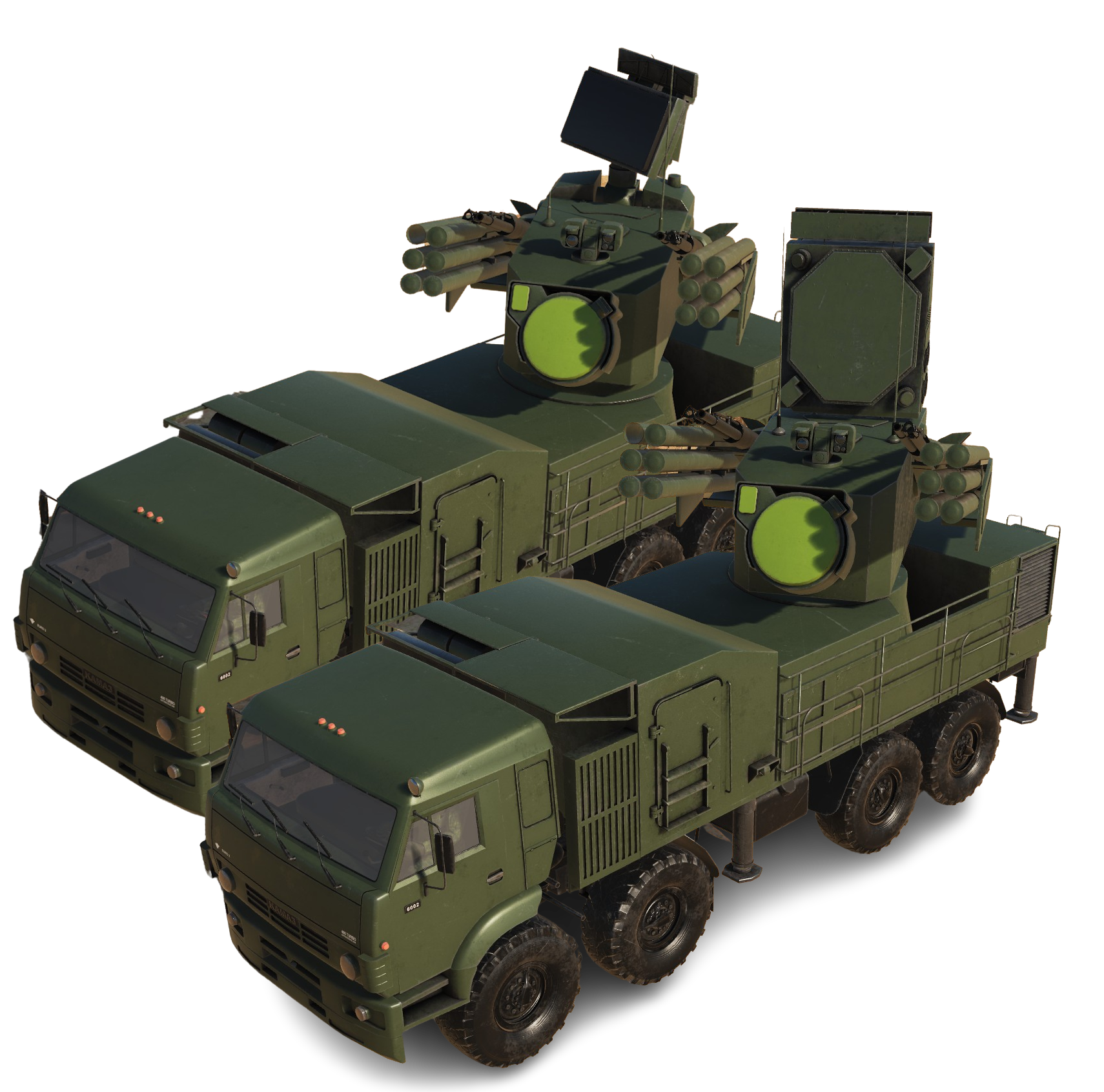
| Country of Origin: | Russia |
| Origin Desgination: | Pantsir-S2 |
| IOC: | 2015 |
| Reloading Time: | Recycle Time: **** Rearm Time Per Round: **** Rearm From Depleted: **** |
| LNs per Battery: | **** |
| Missile Storage: | Per LN: **** Per Battery: **** |
| Guidance Method: | **** |
| Fire-on-Move: | No |
| Anti-Munitions: | Yes |
Brochure Model.
- APA-TR-2009-0703: 96K6 Pantsir S1 / SA-22 Greyhound SPAAGM Air Power Australia
- Pantsir-S2 Russian 8x8 Self-Propelled Anti-Aircraft System ODIN
MISSILE

| MaMax | vAvg | Overload | hMin | hMax | tAcc | rangeMax | rangeMin | TTKMin | TTKMax |
|---|---|---|---|---|---|---|---|---|---|
| Ma | kt | G | ft | ft | s | nmi | nmi |
| NATO Reporting Name | |
| Origin Designation | |
| Acquisition Time | |
| MMD | |
| trklockk | |
| trkaltMin | |
| trkaltMax | |
| trkΔvMin | |
| trkrcsMin | |
| RT | |
| ecmk | |
| θMax | |
| θMin |
| NATO Reporting Name | |
| Origin Designation | |
| Acquisition Time | |
| Range |
¶ Medium Range ADS (MERAD)
¶ 2️⃣ 🔺SA-2C Guideline
🔺SA-2C Guideline
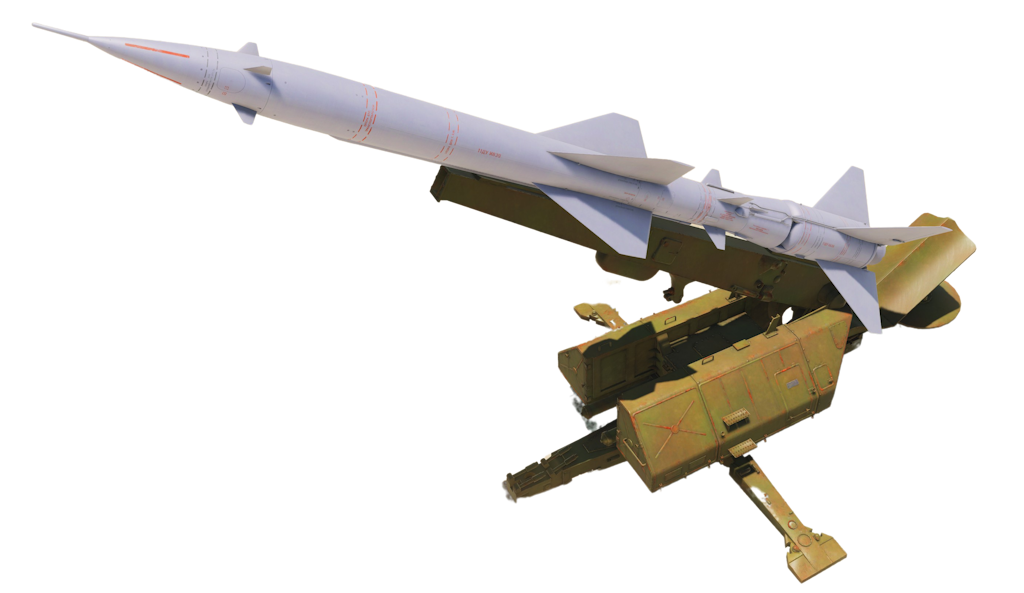
| Country of Origin: | Russia |
| Origin Desgination: | S-75V Volkhov |
| IOC: | 1963 |
| Reloading Time: | Recycle Time: 0.1s Rearm Time Per Round: 45min Rearm From Depleted: 45min |
| LNs per Battery: | 6 |
| Missile Storage: | Per LN: 1 Per Battery: 6 |
| Guidance Method: | SARH (CG IRL) |
| Fire-on-Move: | No |
| Anti-Munitions: | No |
| Manuevering Pk | 0.2 |
The SA-2 has been a staple of REDFOR air defense since the start of operational radar guided SAMs in the early Cold War. It was developed shortly after the SA-1 Guild, intended on being the semi-mobile counterpart of the Guild, capable of shooting down high-altitude non-manuevering strategic bombers carrying nuclear armaments.
The SA-2 was upgraded throughout the Cold War, allowing it to engage low-flying tactical aircraft in electronic warfare environments. One of these improved models, the SA-2C, natively known as the S-75V Volkhov is the specific system simulated in DCS. It is one of the oldest systems simulated in DCS, and its age shows. The initial version of the SA-2 had IOC in 1957, however the SA-2C meets the critera of Tier 2, with an IOC of 1963.
The SA-2 gained fame in the mid-Cold War by shooting down the U-2 twice, first over the USSR and then during the Cuban Missile Crisis.
Pragmatically, the SA-2 is not what most weasel pilots would consider ‘mobile’ by today’s standards. Each launcher took roughly 2 hours to setup by a platoon of men, and the site could not be moved quickly. The system is also not highly lethal by modern standards. Although a 1988 CGSC Thesis states that in retrospect the SA-2 had a Pk of 0.1 in real life operations, the SA-2 within DCS is probably slightly deadlier with a Pk of ~0.2. This is generally due to the simpler ECM simulation in DCS, where the SA-2 greatly suffered countering in Vietnam and later conflicts. Not respected, and non-manuevering, the Guideline will reach out and touch a fighter.
- APA-TR-2009-0702: HQ-2A/B / CSA-1 / SA-2 Guideline Air Power Australia
- S-75 Dvina (SA-2 Guideline) Russian Strategic Surface-to-Air Missile System) ODIN
- ZEN AND TECHNIC MISSILE SYSTEM S- 75 Vestnik PVO
COMMAND POST
Programatically, the SA-2 does not have a required CP to operate in DCS. However, a Ural-375 C2 or ZIL-131(C2) unit can stand in for the command vans that the SA-2 would normally have. Each battery should have a Radar Control Truck, Command Van, and 3-4 Electronic distribution vans. How a mission maker chooses to implement these vehicles, if at all, is largely up to the mission maker.
MISSILE
The Guideline is a two stage solid rocket motor / liquid fuel sustainer command guided missile. The Guideline uses simple half-lead guidance from launch to 1km of the target, where it switches to full lead guidance. The half-lead guidance does make the missile harder to “drive” vs other SAMs of the era, such as the SA-3. MaMax is attained around 25,000ft.

| MaMax | vAvg | Overload | hMin | hMax | tAcc | rangeMax | rangeMin | TTKMin | TTKMax |
|---|---|---|---|---|---|---|---|---|---|
| 3 | 657kt | 17G | 328ft | 82,021ft | 5s / 22s | 21nmi | 3.7nmi |
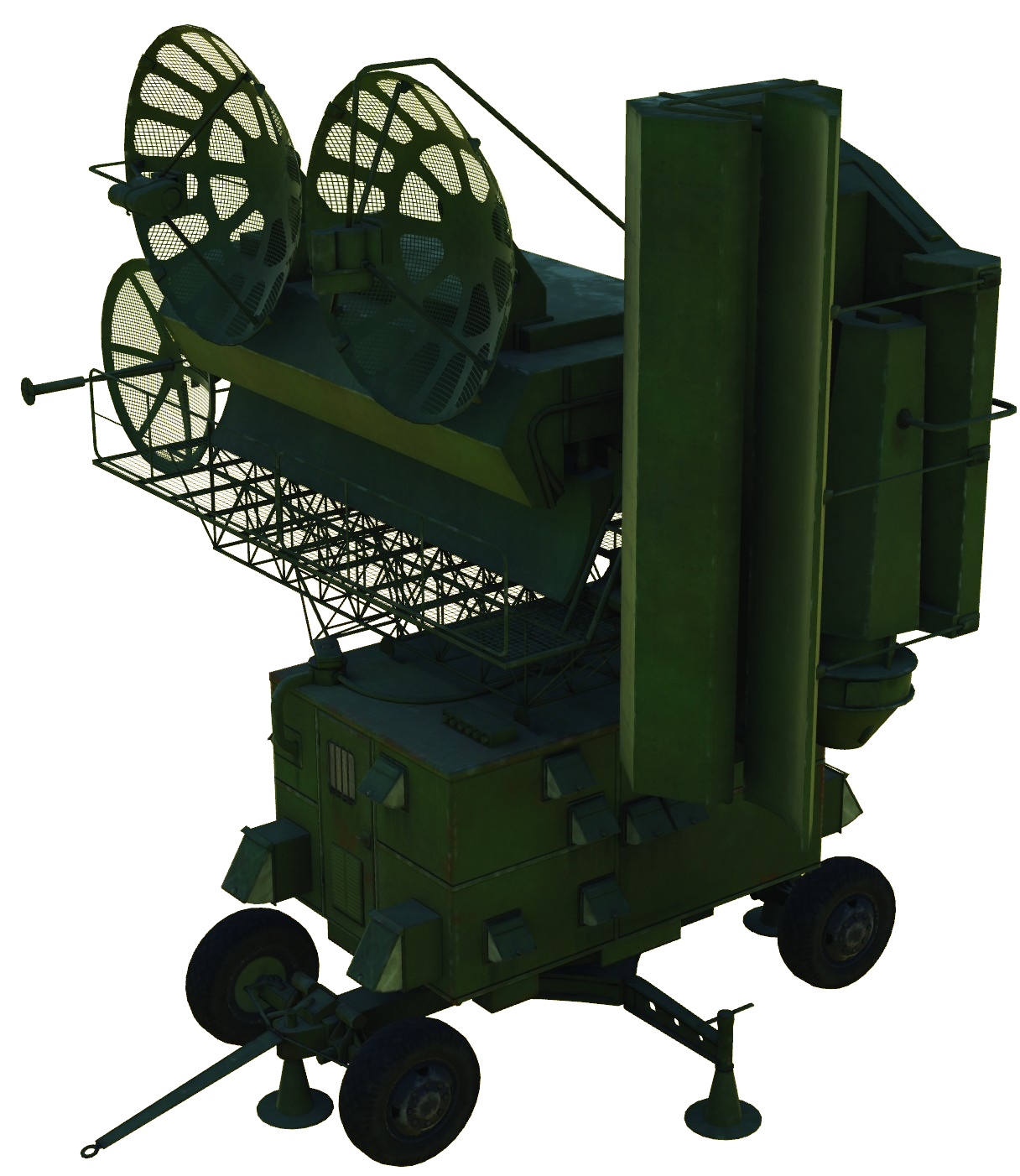
| NATO Reporting Name | Fan Song E |
| Origin Designation | RSN-75V |
| DCS Reporting Name | SAM SA-2 S-75 “Fan Song” TR |
| Acquisition Time | 20 seconds |
| MMD | 50nmi |
| trklockk | 1 |
| trkaltMin | 80 ft |
| trkaltMax | 82,000 ft |
| trkΔvMin | 19 kts |
| trkrcsMin | 0.18m2 |
| RT | 20 seconds |
| ecmk | 0.5 |
| θMax | 60° |
| θMin | -15° |
| Beam Width | 90° |
| Guidance Channels | 2 |
The Fan Song is a set of radars atop a 2-axle trailer. The Fan Song E includes limited ECM protection, IFF, height finding radar, an optical tracker, and two additional parabolic dishes that provide LORO functionality. In real life, LORO functionality, or Lobe On Recieve Only, is an electronic countermeasures tactic where a set of antennas sends out a signal and two additional sets on the set recieve the return. In the Fan Song E, this is essentially an alternative flood mode where the parabolic dishes on top emit a very wide beam that the normal radar antennas recieve. This beam was so scattered that RWRs would be unable to determine if they were the aircaft being targeted or not. However, this is not implemented in DCS.
Firing Battery
Stereotypical SA-2 sites are laid out in a star pattern, with the Fan Song in the center of the star. LNs were placed on the spokes of the star between 150-300ft from the Fan Song, and connected back to the Command Vans back near the Fan Song. The Fang Song is always complimented by additinal command vans, with later models having notably less. In field deployed sites these Vans were parked around the Fan Song, however as most SA-2s eventually found their way to prepared, purpose built, battery facilities, these vans were often protected under the revetment the Fang Song sat on, or in concrete bunkers. Reloads for the SA-2 were also typically moved to concrete bunkers, trenches or under site revetments.
Sites would’ve been powered by several mobile diesel generator trailers, although many upgraded sites in urban areas likely also received connections to national power grids. On-site diesel generators may have been selected for permanent remote sites.
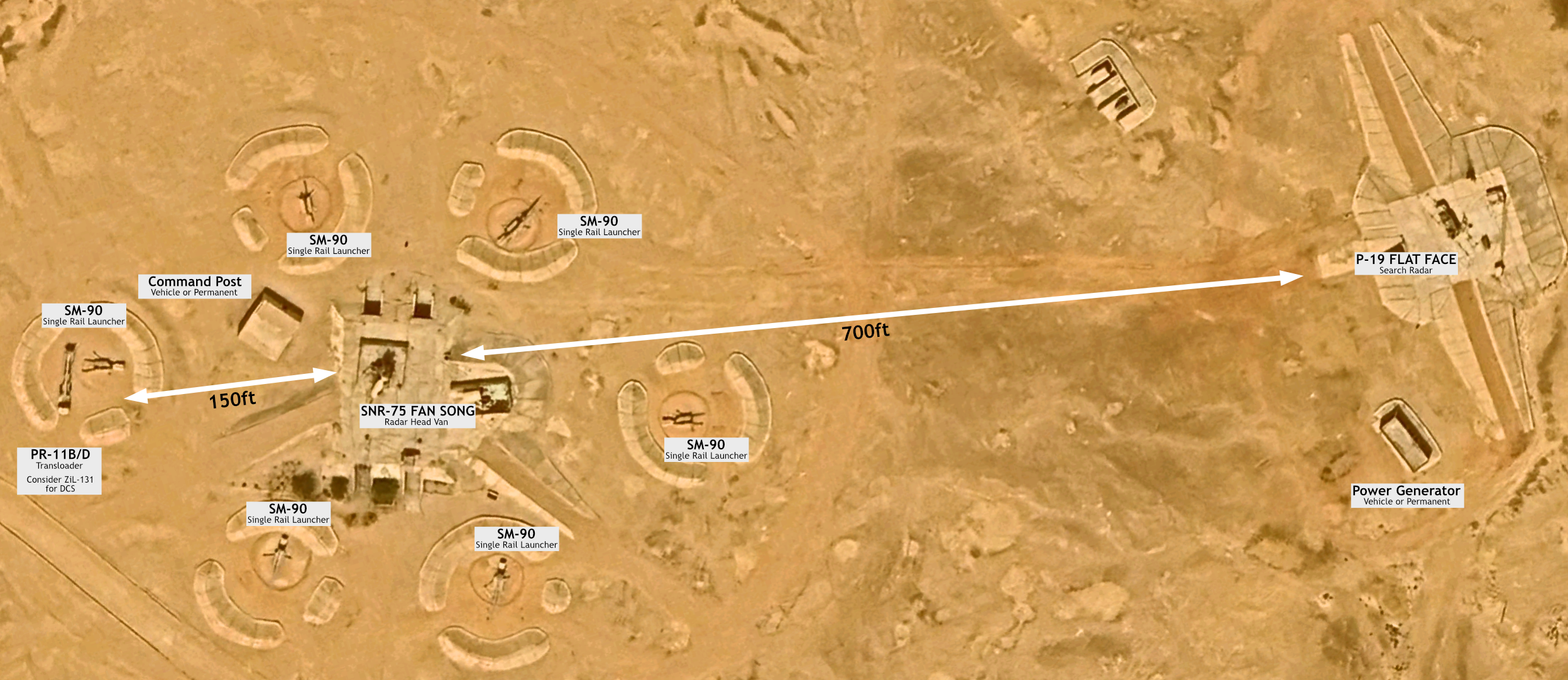
Regimental Deployment Layout
Soviet era doctrine has SA-2s deploying as a regimental forces with just over 500 personnel, organized into 4 battalions, 3 of which were firing batteries. In total, the SA-2 regiment would have no more than 72 SA-2 missiles available, or about 2-4 per launcher. Modernization of IADS, and the SA-2 itself has allowed other countries to deploy what appears to be 4 firing batteries under a regiment. Overall, it is hard to prescribe an exact order of battle for an SA-2 complex, as it has been exported more than any other SAM system on the planet. The recommendation below is more than sufficient for most cases in DCS, and can be expanded with a fourth firing battery.

In the field, the regiment will deploy to what are likely prepared purpose built sites with facilities for the Fang Song, SR, battalion personnel, the launchers, and reloads. A regiment is likely to maintain additional spare sites in case its preferred sites are attacked, or to allow the regiment to move its batteries around semi-regularly to make targeting more complex for the enemy. How often this is actually done in real life is dubious at best as a single SA-2 firing battery can easily take a whole day to tear down, move, and stand back up.
Of note, most SA-2 regiments should deploy in a formation with a SA-3 regiment, which will provide complimentary coverage within the SA-2’s minimum engagement range. Not shown, the technical battalion would be somewhere in relative location to the rest of the battalions and contain additional LNs, missile reloads, and repair vehicles. A regiment would not have spare Fan Songs. It is likely the technical battalion would hold half of the regimenets entire missile reloads and transport them to sites that need them. Sites would have 3 transloaders, each containing 1 reload.
Most battalions would ultimately not reload their LNs during combat as the process was very slow and very exposed. For DCS purposes this likely means that most missions should aim to not have logistics vehicles in range of the LNs to reload them, or consider a script that only has logistics vehicles available to the battery only after an attack has concluded.
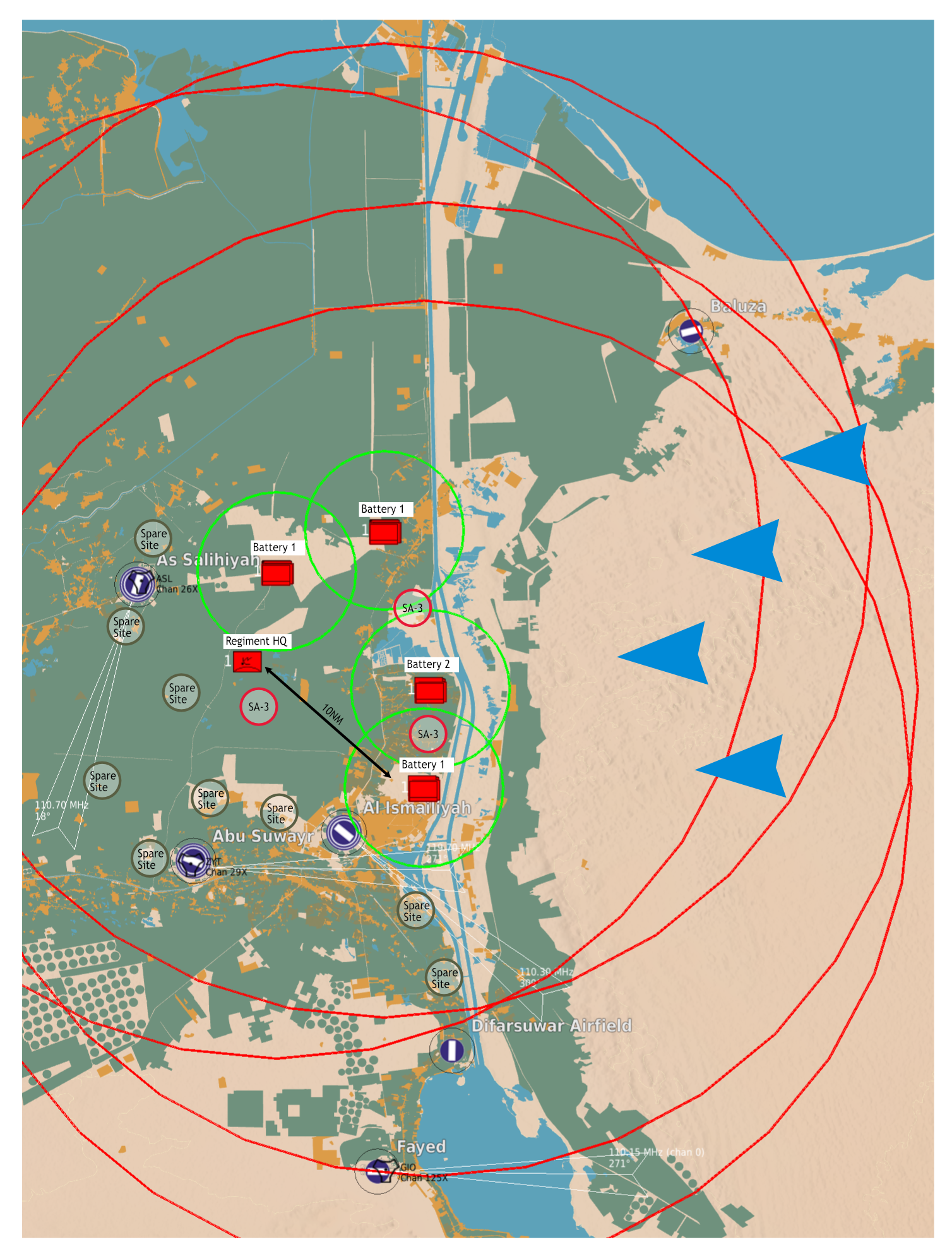
¶ 2️⃣ 🔷🔺Hawk
🔷🔺Hawk
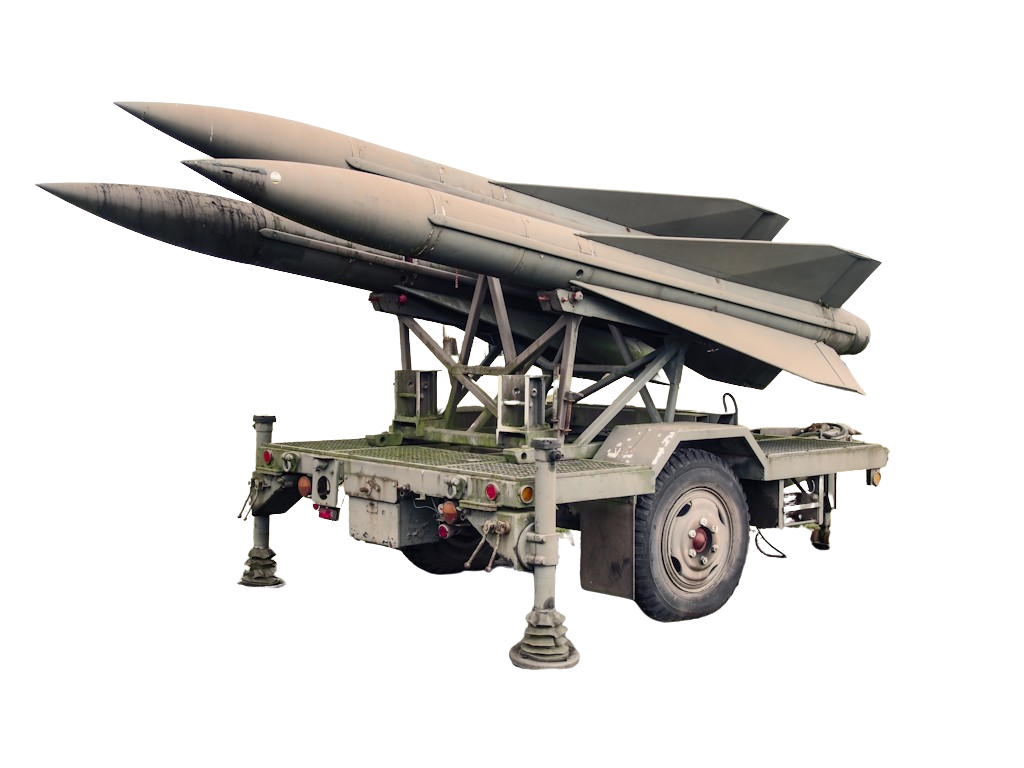
| Country of Origin: | |
| Origin Desgination: | N/A |
| IOC: | 1971 |
| Reloading Time: | Recycle Time: **** Rearm Time Per Round: **** Rearm From Depleted: **** |
| LNs per Battery: | **** |
| Missile Storage: | Per LN: **** Per Battery: **** |
| Guidance Method: | **** |
| Fire-on-Move: | No |
| Anti-Munitions: | No |
MISSILE

| MaMax | vAvg | Overload | hMin | hMax | tAcc | rangeMax | rangeMin | TTKMin | TTKMax |
|---|---|---|---|---|---|---|---|---|---|
| Ma | kt | G | ft | ft | s | nmi | nmi |
| NATO Reporting Name | |
| Origin Designation | |
| Acquisition Time | |
| MMD | |
| trklockk | |
| trkaltMin | |
| trkaltMax | |
| trkΔvMin | |
| trkrcsMin | |
| RT | |
| ecmk | |
| θMax | |
| θMin |
| NATO Reporting Name | |
| Origin Designation | |
| Acquisition Time | |
| Range |
¶ 1️⃣ 🔺🏴 SA-6 Gainful
🔺🏴 SA-6 Gainful

| Country of Origin: | Soviet Union | |
| Origin Desgination: | 2K12 Kub / Kvadrat (Export) | |
| IOC: | 1967 | |
| Reloading Time: | Recycle Time: **** Rearm Time Per Round: ~3.3 min Rearm From Depleted: ~10 min |
|
| LNs per Battery: | 4 (Typical) | |
| Missile Storage: | Per LN: 3 Per Battery: 12 |
|
| Guidance Method: | SARH | |
| Fire-on-Move: | No | |
| Anti-Munitions: | No | |
| Non-Manuevering Pk | ~0.7-0.8 | (External sources) |
| Manuevering Pk | ~0.5-0.7 | (External sources) |
- APA-TR-2009-0701: Self Propelled Air Defence System / SA-6 Gainful Air Power Australia
- 2K12 Kub (SA-6 Gainful) Russian Surface-to-Air Missile System) ODIN
- SA-6 Gainful - Specifications GlobalSecurity.org
The 2K12 Kub (SA-6 Gainful) is a Soviet-era mobile, medium-range, semi-active radar homing SAM system designed to provide air defense for ground forces. It uses the 1S91 “Straight Flush” vehicle which integrates both the surveillance/acquisition radar and the tracking/illumination radar needed to guide the 3M9 missile. It gained notoriety during the 1973 Yom Kippur War for its effectiveness against low-flying aircraft compared to older SA-2/SA-3 systems. While mobile, deployment and reloading are manual processes.
MISSILE

The 3M9M missile features an integral solid rocket booster/ramjet sustainer propulsion system, providing good kinematic performance for its era. It relies on continuous illumination from the Straight Flush radar for its semi-active seeker.
| MaMax | vAvg | Overload | hMin | hMax | tAcc | rangeMax | rangeMin | TTKMin | TTKMax | ccmk |
|---|---|---|---|---|---|---|---|---|---|---|
| 2.2 | 450 m/s | 16 G | 30 m | 8000 m | 26 s | 25 km | 4 km | ~8.9 s | ~55.6 s | 1.0 |
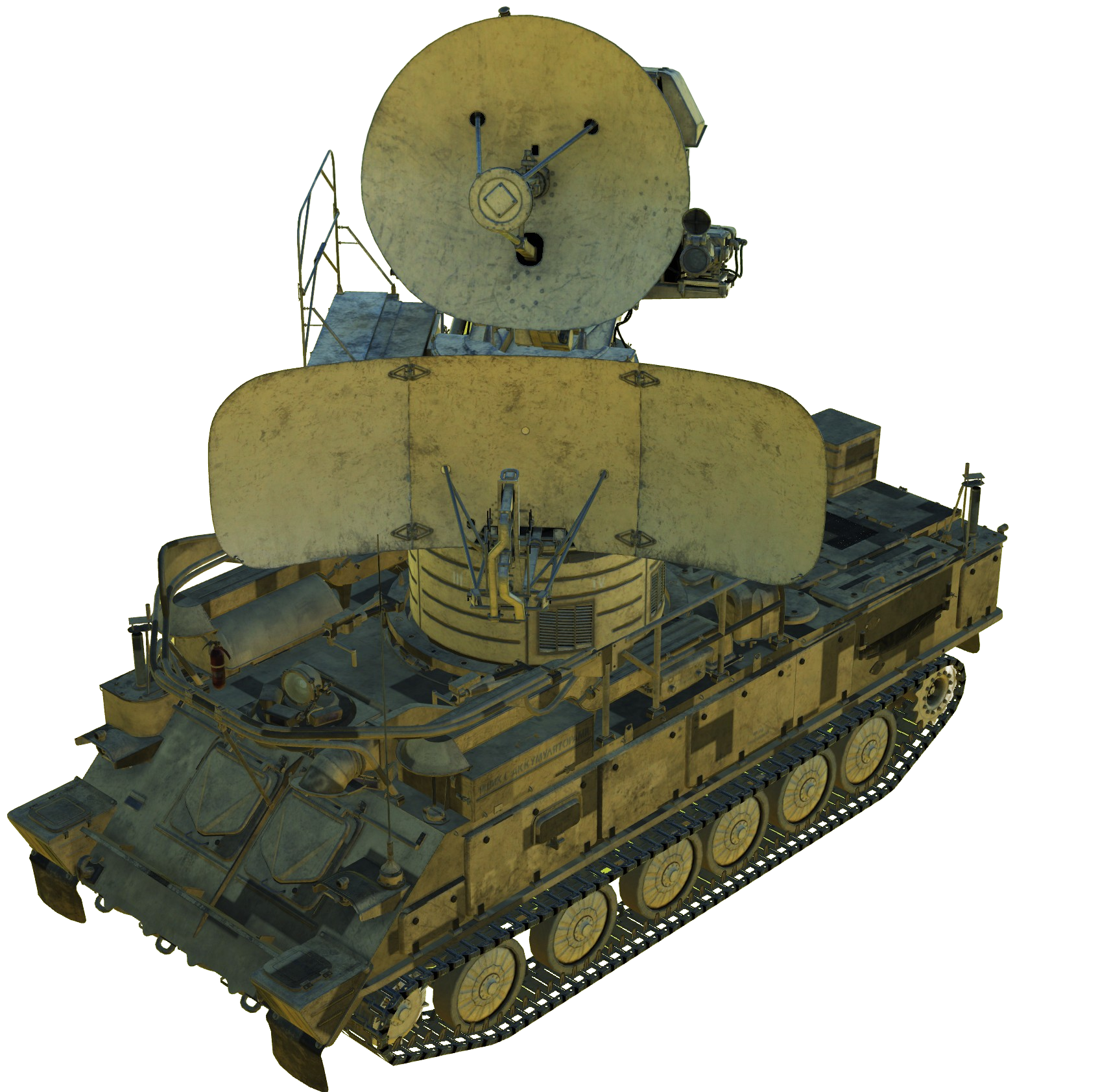
Note: Tracking/Illumination radar integrated onto the 1S91 “Straight Flush” vehicle.
| NATO Reporting Name | Straight Flush | |
| Origin Designation | 1S91 | |
| DCS Reporting Name | Kub 1S91 str |
|
| Acquisition Time | ~20 s | |
| MMD | ~25 km | |
| trklockk | 0.85 | |
| trkaltMin | 20 m | |
| trkaltMax | 8000 m | |
| trkΔvMin | 10 m/s | |
| trkrcsMin | 0.18 m² | |
| RT | ~20 s | |
| ecmk | 0.65 | |
| θMax | 45 deg | |
| θMin | 0 deg | |
| Beam Width | **** | |
| Concurrent Tracks | 2 |
Note: Surveillance radar integrated onto the 1S91 “Straight Flush” vehicle.
| NATO Reporting Name | Straight Flush | |
| Origin Designation | 1S91 | |
| DCS Reporting Name | Kub 1S91 str |
|
| Acquisition Time | **** | |
| MMD | 70 km | |
| trklockk | 0.85 | |
| trkaltMin | 20 m | |
| trkaltMax | 14000 m | |
| trkΔvMin | 10 m/s | |
| trkrcsMin | 0.18 m² | |
| RT | **** | |
| ecmk | 0.65 | |
| θMax | 30 deg | |
| θMin | **** | |
| Beam Width | **** | |
| Concurrent Tracks | **** |
Typical Battery Composition (DCS Units):
- Core Components:
- 1x
SAM SA-6 Kub "Straight Flush" STR(dcs-lua-datamine/_G/db/Units/Cars/Car/Kub 1S91 str.lua) (Radar Vehicle) - 4x
SAM SA-6 Kub "Gainful" TEL(dcs-lua-datamine/_G/db/Units/Cars/Car/Kub 2P25 ln.lua) (Launcher, 3 missiles each)
- 1x
- Support Components (Representational DCS Surrogates):
- 2x
ZIL-131 KUNG(Surrogate for 2T7M Transloader vehicle) - 1x
Ural-375 MTO-AT(Surrogate for mobile workshop/repair) - 1x
Ural-375 APA-80or5I57A(Surrogate for Generator) - (Optionally:
P-19 SRor1L13 EWRfor longer-range acquisition cueing)
- 2x
Typical Higher Echelon Composition (DCS Units):
- SA-6 batteries typically formed air defense regiments supporting divisions or armies.
- HQ:
- Command Post (e.g.,
SKP-11,Ural-375 PBU) - Regimental Acquisition Radar (e.g.,
1L13 EWR(surrogate for P-40 Long Track),P-19 SR)
- Command Post (e.g.,
- Subordinate Batteries: 3-5 (Typical)
Notes: The SA-6 battery revolves around the 1S91 Straight Flush vehicle, which performs both search and tracking/illumination. The launchers (2P25 TELs) are dependent on the Straight Flush for guidance data. Reloading is manual and time-consuming (~10 minutes per TEL) using transloader trucks (2T7M). While mobile, setup involves positioning and potentially cabling between units. Often deployed in dispersed configurations within a regiment for mutual support.
¶ 2️⃣ 🔺🏴 SA-11 Gadfly
🔺🏴 SA-11 Gadfly
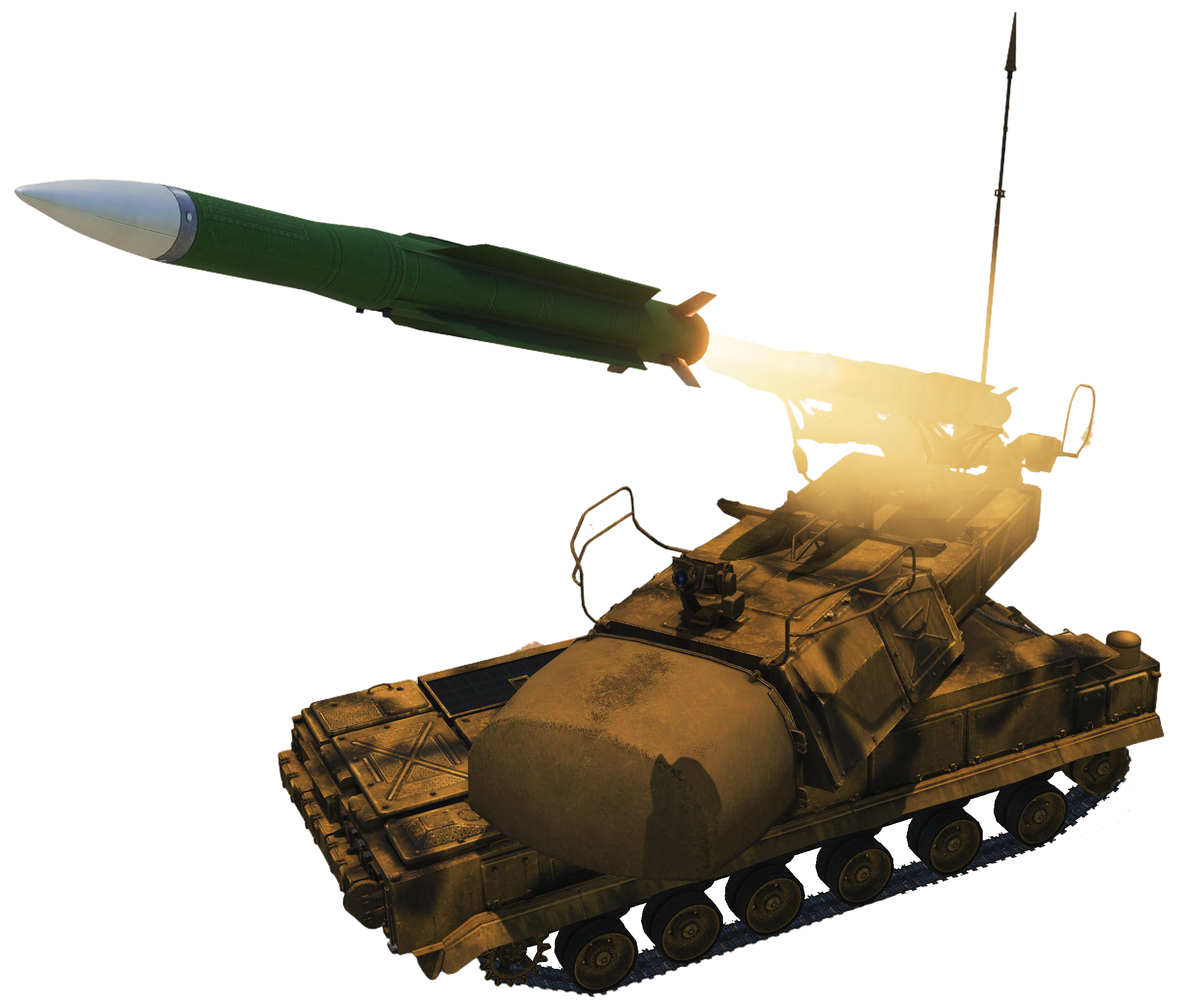
| Country of Origin: | Russia |
| Origin Desgination: | 9K37 Buk-M1 |
| IOC: | 1979 |
| Reloading Time: | Recycle Time: **** Rearm Time Per Round: **** Rearm From Depleted: **** |
| LNs per Battery: | **** |
| Missile Storage: | Per LN: **** Per Battery: **** |
| Guidance Method: | **** |
| Fire-on-Move: | No |
| Anti-Munitions: | No |
- APA-TR-2009-0706: 9K37/9K37M1/9K317 Buk M1/M2 Air Power Australia
- 9K37 Buk-M1 (SA-11 Gadfly) Russian Medium-Range Surface-to-Air Missile System) ODIN
MISSILE

| MaMax | vAvg | Overload | hMin | hMax | tAcc | rangeMax | rangeMin | TTKMin | TTKMax |
|---|---|---|---|---|---|---|---|---|---|
| Ma | kt | G | ft | ft | s | nmi | nmi |
| NATO Reporting Name | |
| Origin Designation | |
| Acquisition Time | |
| MMD | |
| trklockk | |
| trkaltMin | |
| trkaltMax | |
| trkΔvMin | |
| trkrcsMin | |
| RT | |
| ecmk | |
| θMax | |
| θMin |
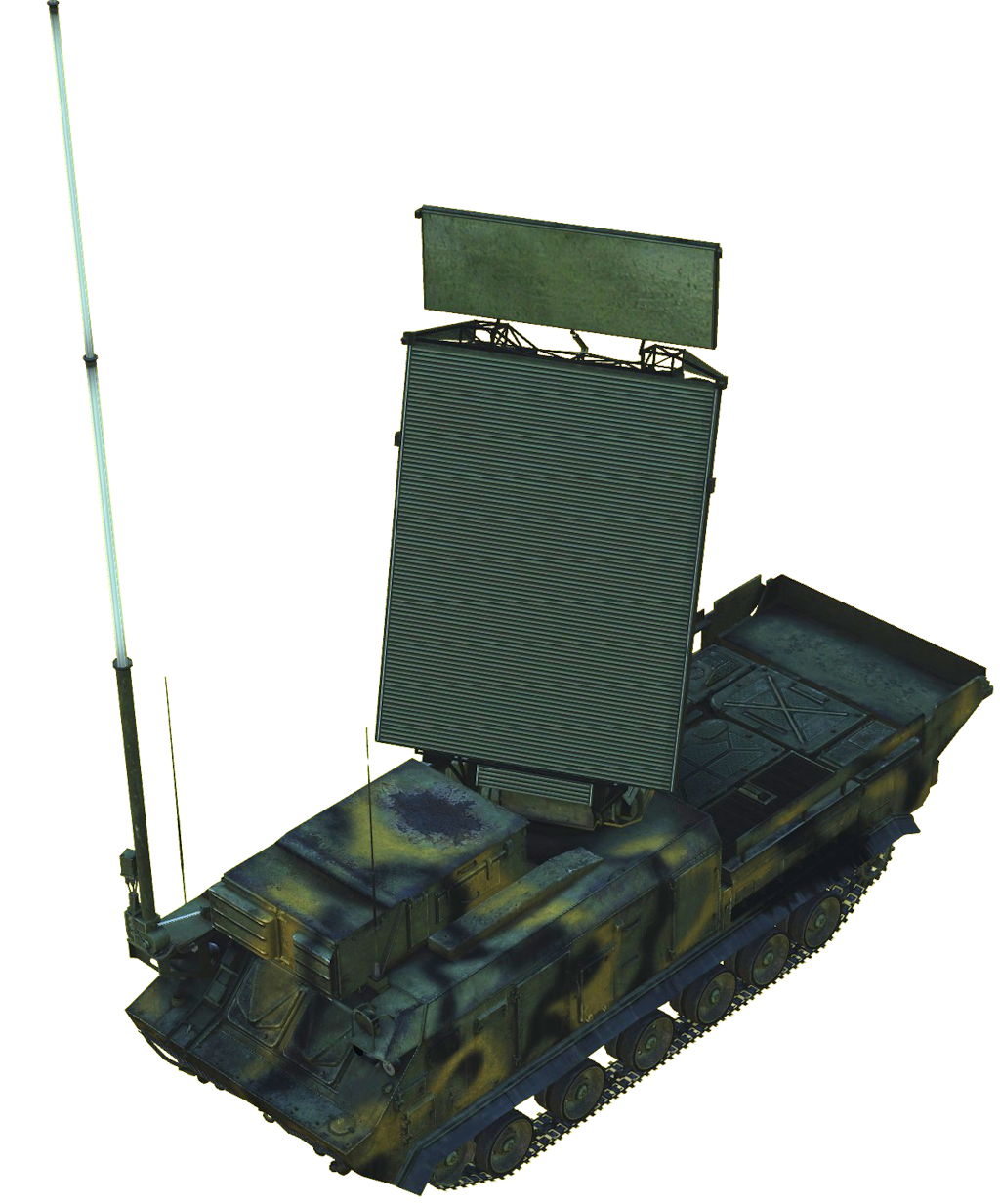
| NATO Reporting Name | |
| Origin Designation | |
| Acquisition Time | |
| Range |
¶ 3️⃣ 🔺SA-17 Grizzly HighDigitSAMs
🔺SA-17 Grizzly HighDigitSAMs
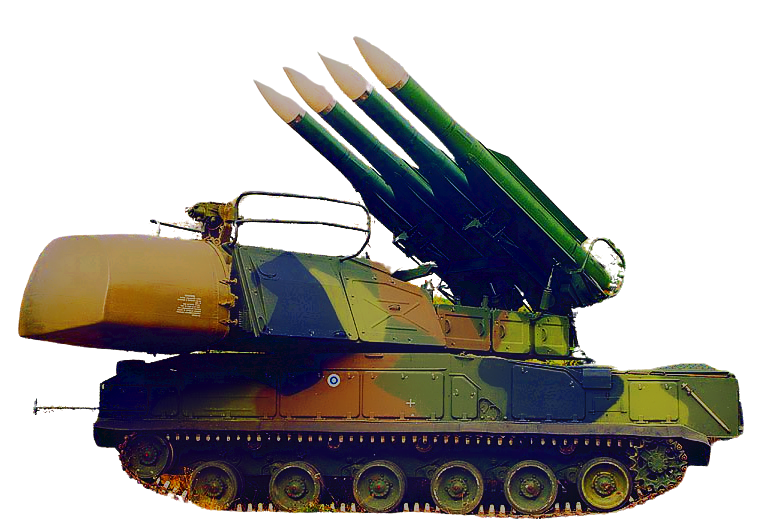
| Country of Origin: | Russia |
| Origin Desgination: | Buk-M2 |
| IOC: | 2008 |
| Reloading Time: | Recycle Time: 1s Rearm Time Per Round: 3.25min Rearm From Depleted: 13min |
| LNs per Battery: | 2 |
| Missile Storage: | Per LN: 4 Per Battery: 8 |
| Guidance Method: | SAHR |
| Fire-on-Move: | No |
| Anti-Munitions: | Yes |
| Non-Manuevering Pk | 0.95 |
| Manuevering Pk | 0.6 |
The SA-17 GRIZZLY is a lightly armored, tracked, medium-range SAM system designed to provide tactical level air defense to frontline troops and logistics in theater. It is a direct upgrade of the SA-11 GADFLY, which itself was a replacement for the SA-6 GAINFUL. The SA-17 TELAR replaces the SA-11’s mechanically scanned antenna with a PESA radar version of the Fire Dome (although this is not entirely reflected in HDS to allow it to share ALIC codes with the SA-11). The SA-17 also replaces the 9M38 found on the SA-11 with an upgraded version named the 9M317 which is the main improvement on the system in DCS.
An SA-17 ADBDE operates with ground forces, and is designed to operate out of austere environments and to be moved frequently. It may work alongside an SA-12/SA-23 ADBDE and SA-19 or SA-15 ADBDE to provide layered A2AD to an army in a theater. An SA-17 equipped with a Polyana-D4 or similiary command post at the brigade command level can automatically integrate with a theater wide IADS encompassing both army and ADF SAM systems.
- APA-TR-2009-0706: SA-11/17 Gadfly/Grizzly Air Power Australia
- Buk-M2 (SA-17 Grizzly) Russian Medium-Range Air Defense Missile System ODIN
MISSILE

The 9M317 provides the SA-17 with the ability to provide ABM defense, as well as defend against cruise missiles, aircraft, and helicopters. The missile has an endgame overload of 24G, making it nearly impossible to kinematically defeat with last chance manuevering. It is a SAHR missile that uses PN guidance provided by the SA-17 TELAR’s Fire Dome. The missile has protections built in to prevent it being fooled to fly into terrain. The missile features an onboard radar transceiver for terminal guidance.
| MaMax | vAvg | Overload | hMin | hMax | tAcc | rangeMax | rangeMin | TTKMin | TTKMax | ccmk |
|---|---|---|---|---|---|---|---|---|---|---|
| 4.5 Ma | 835kt | 24G | 50ft | 164,000ft | 7s | 27 nmi | 1.6 nmi |
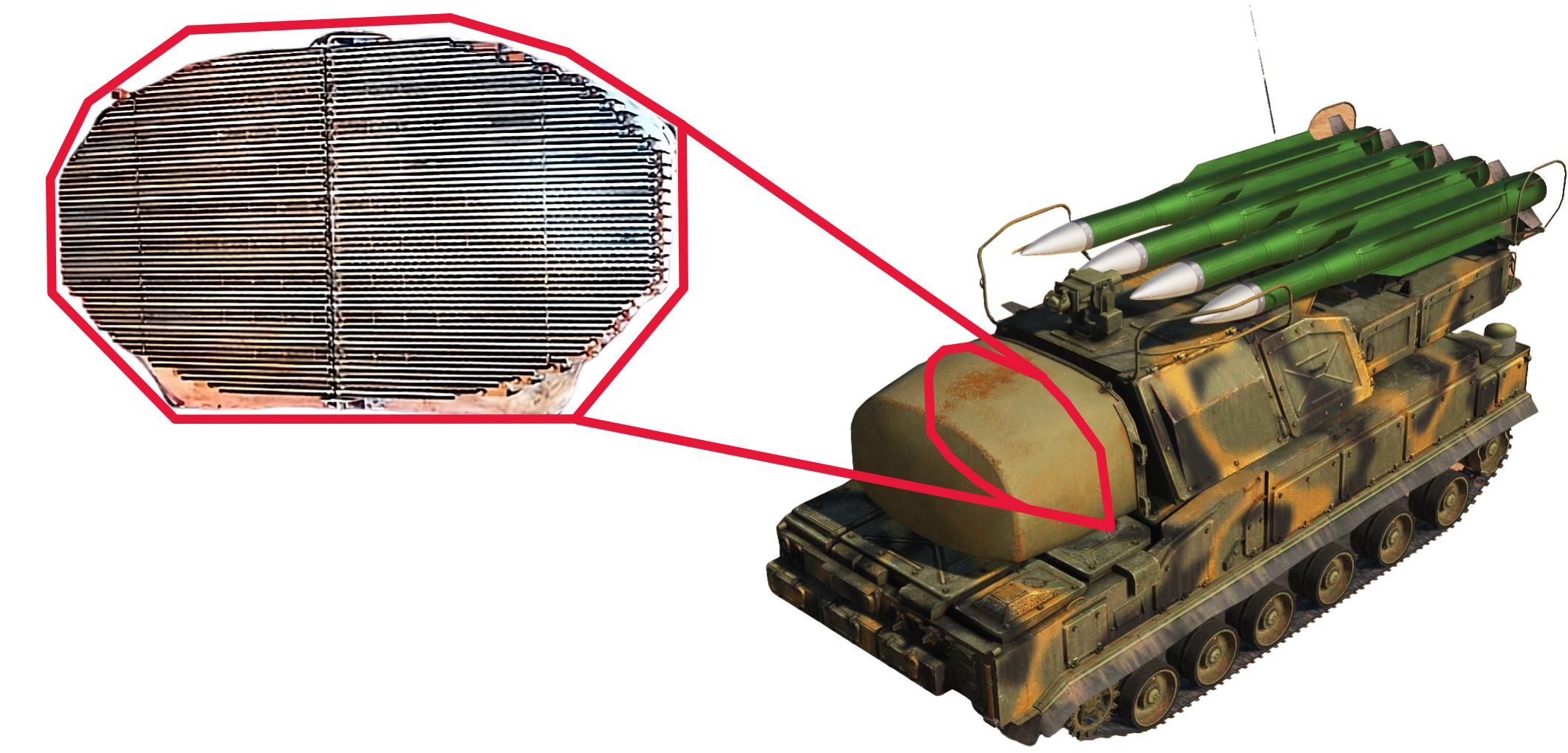
| NATO Reporting Name | Fire Dome |
| Origin Designation | NIIP 9S36 |
| Antenna Type | PESA |
| MMD | 32nmi (60km) |
| trklockk | 0.60 |
| trkaltMin | 65ft (20m) |
| trkaltMax | 72,178ft (22km) |
| trkΔvMin | 19kts (10m/s) |
| trkrcsMin | 0.02m2 |
| RT | 4s |
| ecmk | 0.65 |
| θMax | 60° |
| θMin | -15° |
| Guidance Channels | 2 |
The Fire Dome gives the SA-11/17 limited search and acquisition capability, even in the absence of the SNOW DRIFT.

| NATO Reporting Name | SNOW DRIFT |
| Origin Designation | 9S18M Kupol-M1 |
| IOC | 1977 |
| Acquisition Time | 1s |
| MMD | 53nmi (100km) |
| trklockk | 0.60 |
| trkaltMin | 65ft (20m) |
| trkaltMax | 72,178ft (22km) |
| trkΔvMin | 29kts (15m/s) |
| trkrcsMin | 0.18m2 |
| θMax | 60° |
| θMin | -15° |
| RT | 16s |
| Concurrent Tracks | 50 |
| Concurrent Targets | 6 |
The SNOW DRIFT, as well as being the surveillance radar for the battalion, and brigade as a whole, also serves as the primary datalink connection between each battalion set and the brigade headquarter’s SNOW DRIFT. The datalink has a range of roughly 13nmi. The SNOW DRIFT can track 50 concurrent track files, and provide target designation for 6 tracks to the 92470M1-2 command post. The SNOW DRIFT does not communicate directly with LNs.
While taking out the SNOW DRIFT will reduce the effectiveness of batteries attached to that battalion, they are still indepedently dangerous.
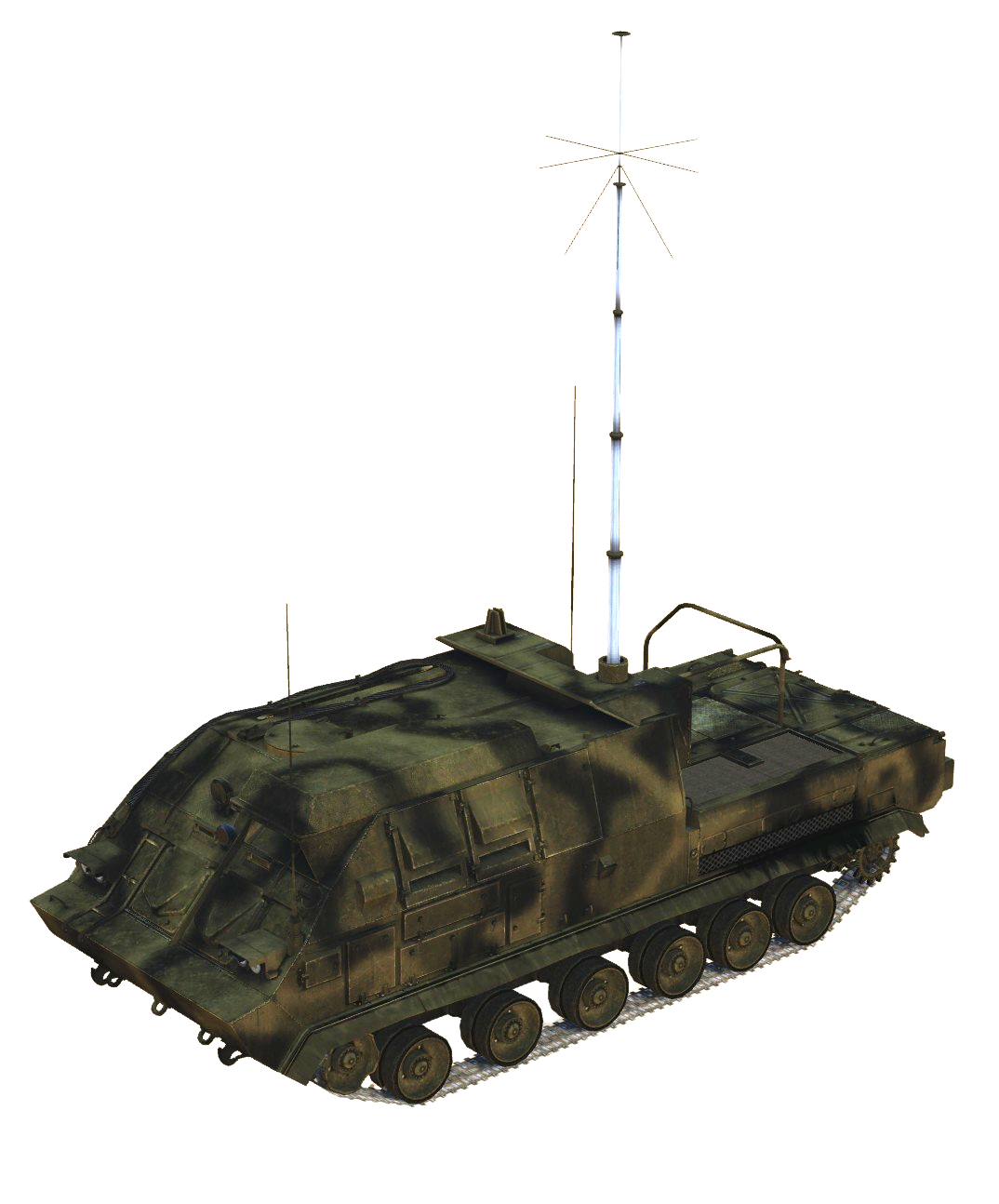
| NATO Reporting Name | N/A |
| Origin Designation | 9S470M1-2 |
| SR Datalink Range | 2.5nmi |
| SR Connectivity Mode | Wired / Radio Datalink |
| LN Datalink Range | 2.5nmi |
| LN Connectivity Mode | Wired / Radio Datalink |
| LN Limit | 8 |
The 9S470M1-2 Command Post pretty much just serves as a link between the LNs and the SNOW DRIFT. It recieves target designated track files from the SNOW DRIFT, and can cue the LNs to independently lock the designated targets with their Fire Dome FCRs. Without the CP, the LNs cannot recieve track files from the SNOW DRIFT, however they are capable of rudimentary scanning on their own and can engage targets without the CP.
While taking out the CP will reduce the effectiveness of batteries attached to that CP, they are still independently dangerous.
The SA-17 is a frontline SAM system embeded with army forces; as such it has no prescribed site layout per battery or per brigade. Each LN is capable of operating independently in its battery, each battery independent of its division, and each division independent of the remainder of the brigade.
For simulations of Russian-style forces, the main requirement is for batteries to be within 2.5 nautical miles of the division’s CP. If operating at brigade level, each division must be within 13 nautical miles to maintain datalink connectivity with the brigade’s SNOW DRIFT radars. LNs should be concealed on the outskirts of forests, farm boundaries, or other areas that can obscure them. They can also be positioned on ramps, which enhance their performance in low-level engagements, or in revetments, which may reduce low-level capability.
Consider placing a masted Clam Shell 76n6 SR with the brigade command to emulate the 9S36, SA-17’s canonical low-level surveillance radar which is not currently present in DCS.
Note, that Russian SA-17 brigades were issued nine Igla-S grip stock launchers, a couple of which would be surely available or already in the hands of AD at any given time.
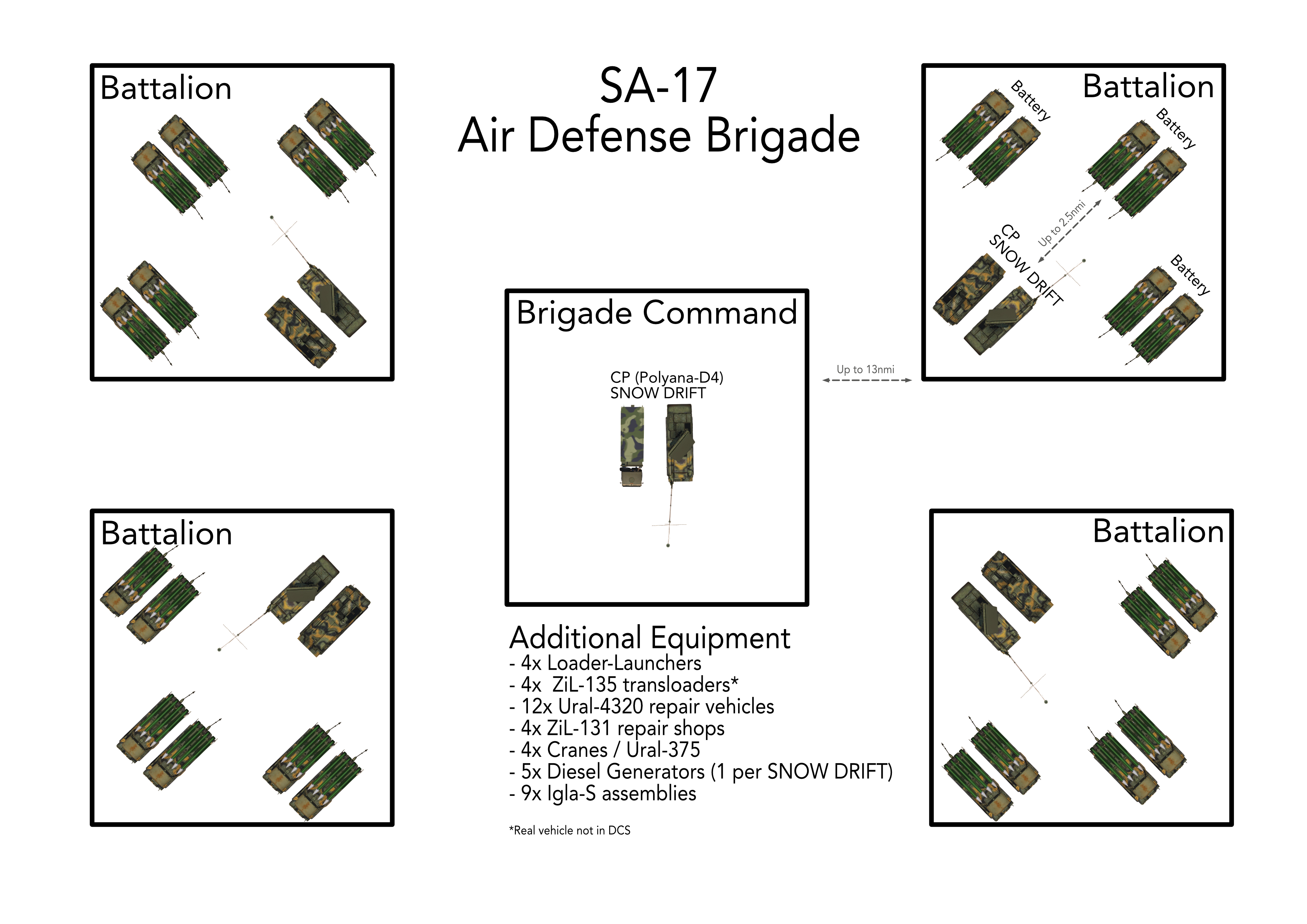
Consider the following example deployment, where a Russian-style ADBDE is defending an armored push orientated along a river. Most of the available ADBNs are positioned in obscured forest clearings, roughly 3-5NM from the current frontline, which keeps them out of direct fire.
In a frontline that is mostly stable where no pushes are being made, the whole ADBDE can move north of Achigvara in this scenario, putting them out of range of indirect artillery fire while still allowing them to cover the entire FLOT with the edge of the SA-17’s MEZ.
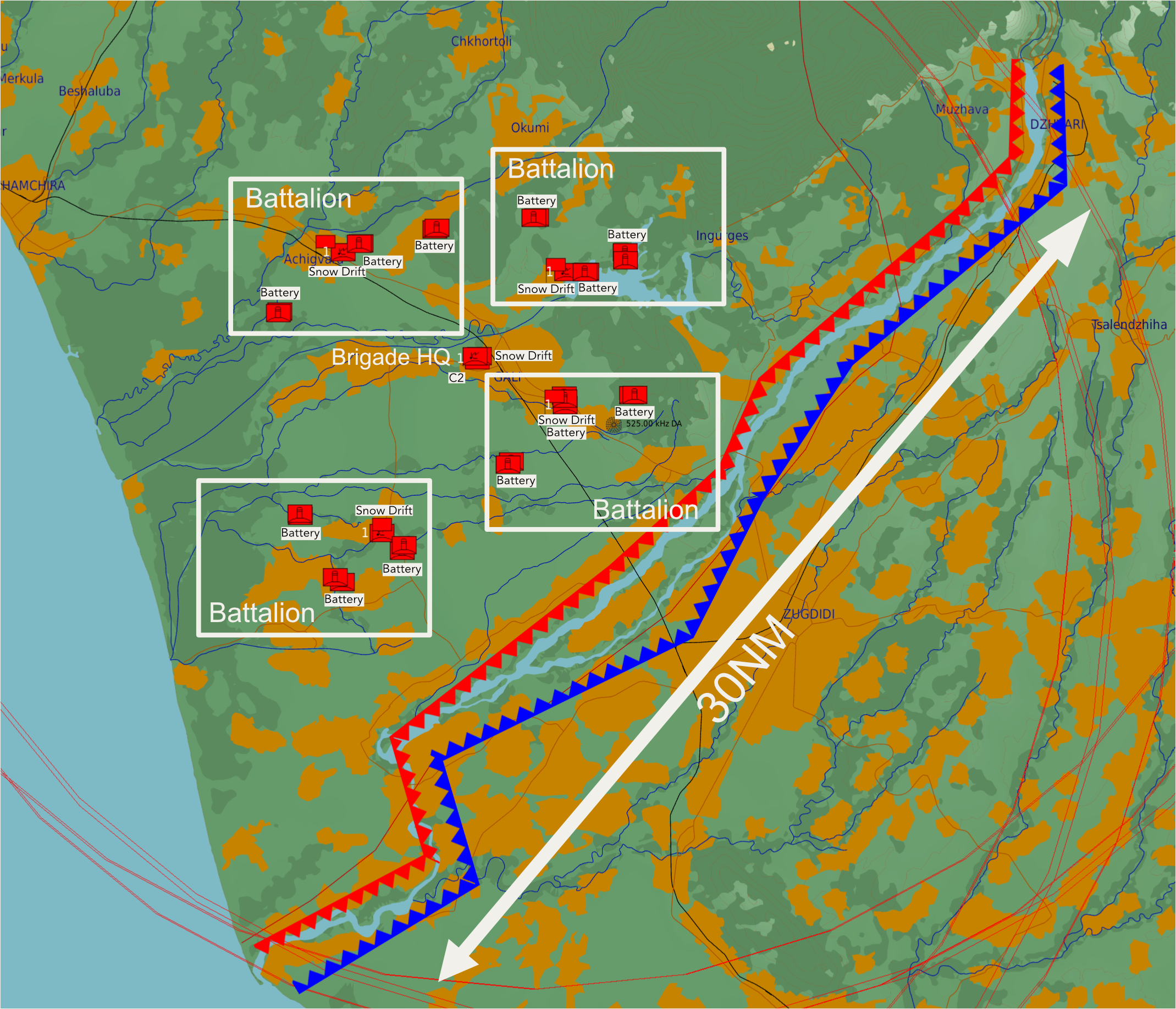
Finally, a note on the DCS World stereotypical “cross” SA-11/SA-17 site, which consists of four LNs around a SNOW DRIFT and CP. This is an artifact of the default SA-11 template being in this shape. While it is conceivable that the SA-17 could defend a fixed facility, and use a prepared site where they setup launchers in geometrically pleasing manners, this isn’t really what the system is designed for. The whole ADBDE is supposed to move with the army, possibly at hourly or daily intervals. For the purposes of representing the likely strength of any particular ADBN, the cross template is perfectly acceptable. However, The SA-17 can be made much more difficult to fight by properly distributing the units so that single digit quantities of cluster munitions do not eliminate an entire battalion.
The above deployment could be defeated by potentially 4-6 cluster bombs if the battalions were all orientated as consolidated fixed sites. However, as deployed in the example, this would take potentially 2 flights of DEAD to eliminate.
¶ 4️⃣ 🔷Iron Dome IDF Mods Project
🔷Iron Dome IDF Mods Project
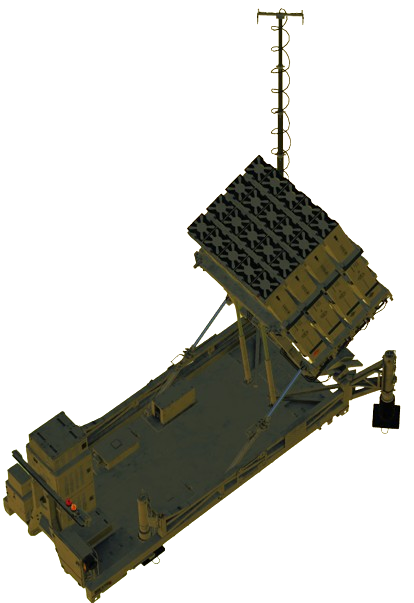
| Country of Origin: | Israel |
| Origin Desgination: | Kippat Barzel |
| IOC: | 2011 |
| Reloading Time: | Recycle Time: **** Rearm Time Per Round: **** Rearm From Depleted: **** |
| LNs per Battery: | **** |
| Missile Storage: | Per LN: **** Per Battery: **** |
| Guidance Method: | **** |
| Fire-on-Move: | No |
| Anti-Munitions: | Yes |
Brochure Model.
MISSILE

| MaMax | vAvg | Overload | hMin | hMax | tAcc | rangeMax | rangeMin | TTKMin | TTKMax |
|---|---|---|---|---|---|---|---|---|---|
| Ma | kt | G | ft | ft | s | nmi | nmi |
¶ Long Range ADS (LORAD) | Strategic SAMs
¶ 1️⃣ 🔺SA-5 Gammon
🔺SA-5 Gammon
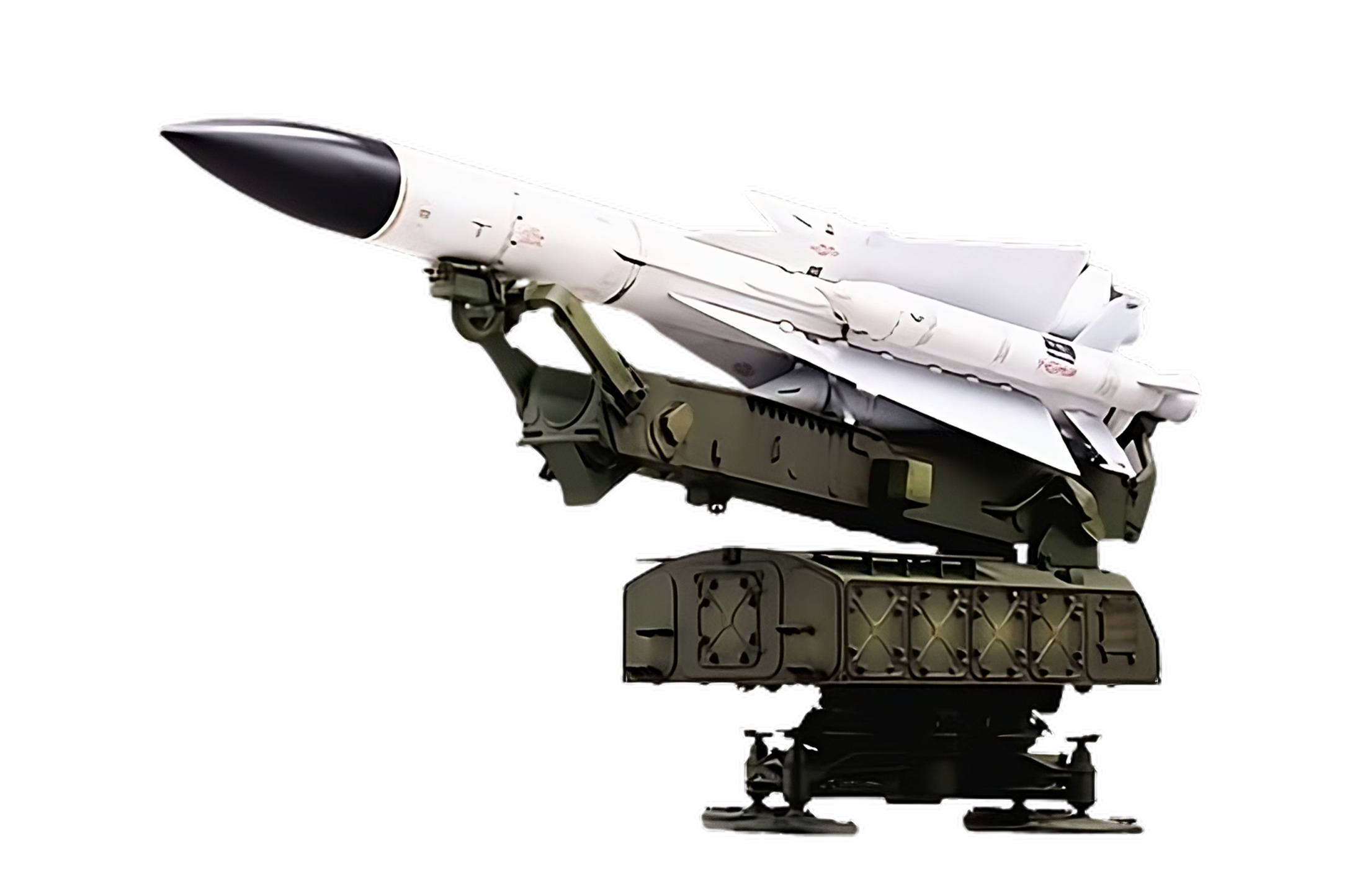
| Country of Origin: | Russia |
| Origin Desgination: | S-200 Vega |
| IOC: | 1967 |
| Reloading Time: | Recycle Time: **** Rearm Time Per Round: **** Rearm From Depleted: **** |
| LNs per Battery: | **** |
| Missile Storage: | Per LN: **** Per Battery: **** |
| Guidance Method: | **** |
| Fire-on-Move: | No |
| Anti-Munitions: | Yes |
- APA-TR-2009-0603: Long Range Air Defence System / SA-5 Gammon Air Power Australia
- S-200 Dubna (SA-5 Gammon) Russian Surface-to-Air Missile (SAM) System ODIN
MISSILE

| MaMax | vAvg | Overload | hMin | hMax | tAcc | rangeMax | rangeMin | TTKMin | TTKMax |
|---|---|---|---|---|---|---|---|---|---|
| Ma | kt | G | ft | ft | s | nmi | nmi |
| NATO Reporting Name | |
| Origin Designation | |
| Acquisition Time | |
| Range |
| NATO Reporting Name | |
| Origin Designation | |
| Acquisition Time | |
| Range |
¶ Command Post
¶ Site Layout
¶ 3️⃣ 🔺SA-10 Grumble
🔺SA-10 Grumble
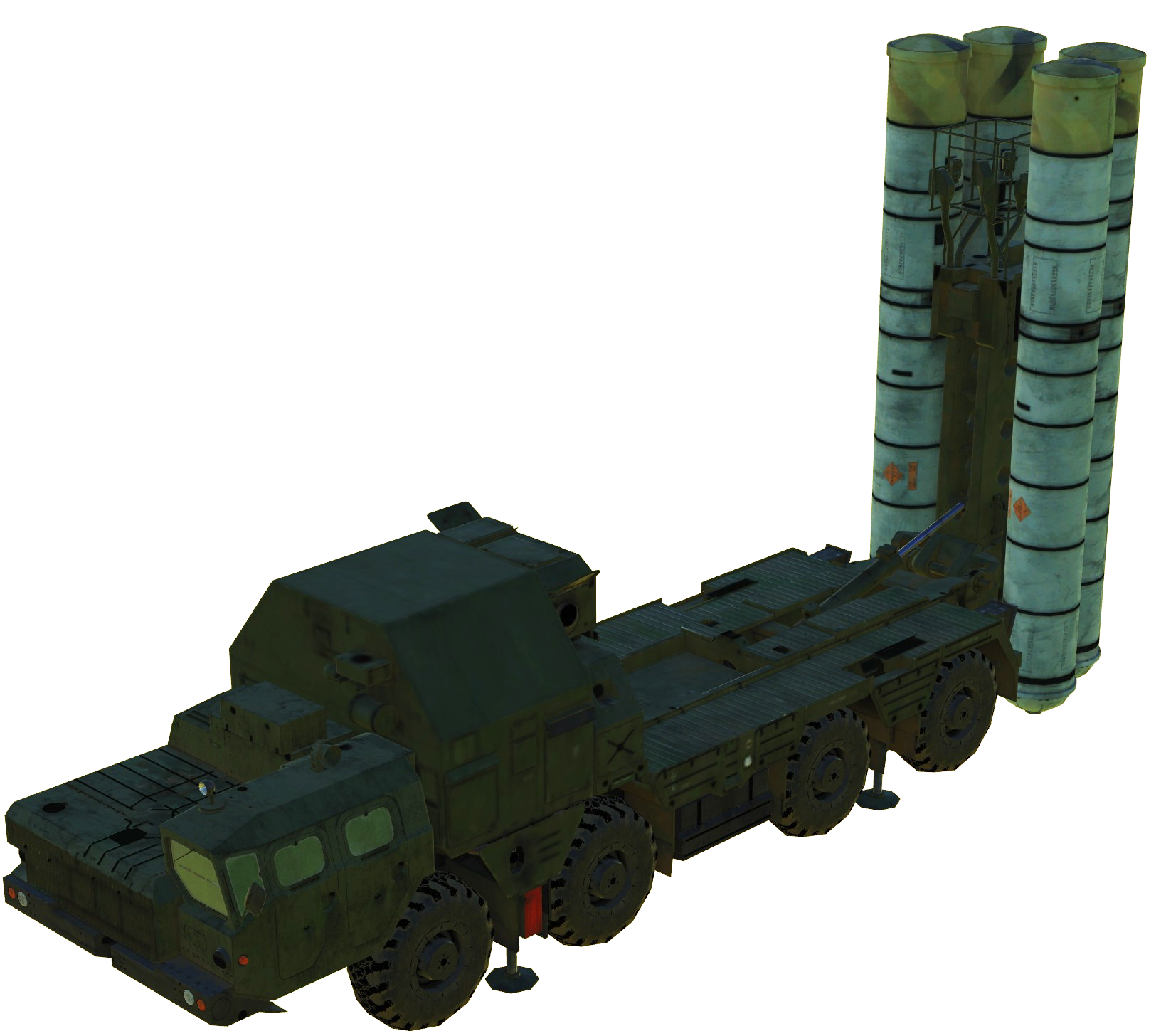
| Country of Origin: | Soviet Union | |
| Origin Desgination: | S-300PS | |
| IOC: | 1982 | |
| Reloading Time: | Recycle Time: **** Rearm Time Per Round: **** Rearm From Depleted: ~2 hr (DCS Value) |
|
| LNs per Battery: | 3-12 | |
| Missile Storage: | Per LN: 4 Per Battery: 12-48 |
|
| Guidance Method: | TVM | |
| Fire-on-Move: | No | |
| Anti-Munitions: | Yes | |
| Non-Manuevering Pk | ~0.8-0.9 | (External sources, vs Aircraft) |
| Manuevering Pk | **** |
- APA-TR-2006-1201: SA-10/20/21 Grumble/Gargoyle Air Power Australia
- S-300P (SA-10 Grumble) Russian 8x8 Long-Range Surface-to-Air Missile System ODIN
- S-300PS SA-10B Grumble B Army Recognition
The S-300PS (SA-10B Grumble B) is the first mobile version of the venerable S-300P strategic SAM system. Introduced in 1982, it mounted the TELs (Transporter Erector Launchers) and the 30N6 “Flap Lid B” engagement radar onto high-mobility 8x8 MAZ-7910 chassis, allowing for rapid deployment (5 minutes) and relocation (“shoot-and-scoot”) compared to the earlier towed S-300PT (SA-10A). It uses the 5V55R missile guided via Track-Via-Missile (TVM). A typical battery consists of a command post, a Flap Lid B radar, and several TELs (usually 3), often supplemented by division-level surveillance radars like the 64H6 “Big Bird” and 40V6M/MD “Clam Shell” low-altitude radar on a mast. It provides long-range air defense against aircraft and has a limited capability against cruise and ballistic missiles.
¶ Missile

The 5V55R missile introduced Track-Via-Missile (TVM) guidance to the S-300P family, offering improved accuracy and jam resistance compared to the earlier command-guided 5V55K. It’s a single-stage solid-fueled missile cold-launched vertically from its container.
| MaMax | vAvg | Overload | hMin | hMax | tAcc | rangeMax | rangeMin | TTKMin | TTKMax | ccmk |
|---|---|---|---|---|---|---|---|---|---|---|
| 6.0 | 1000 m/s | 16 G | 25 m | 25000 m | 10.6 s | 75 km | 5 km | 5.0 s | 75.0 s | 0.5 |
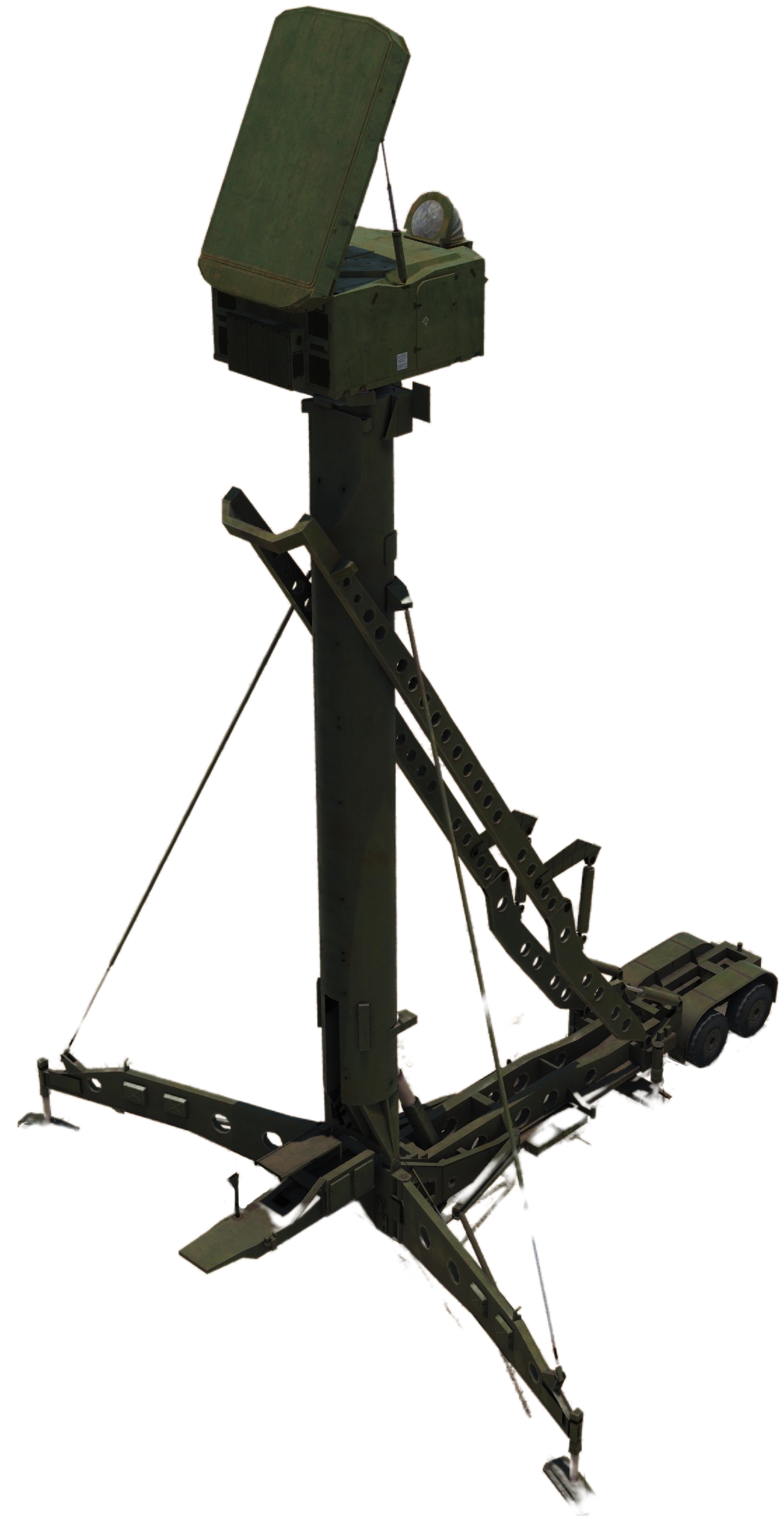
30N6 “Flap Lid B”
Note: Mobile engagement radar on MAZ-7910 chassis.
| NATO Reporting Name | Flap Lid B | |
| Origin Designation | 30N6 / 5N63S | |
| DCS Reporting Name | SAM SA-10 S-300 "Grumble" Flap Lid-B TR |
|
| Acquisition Time | 6 s | |
| MMD | 120 km | |
| trklockk | 0.85 | |
| trkaltMin | 25 m | |
| trkaltMax | 25000 m | |
| trkΔvMin | 10 m/s | |
| trkrcsMin | 0.049 m² | |
| RT | 6 s | |
| ecmk | 0.4 | |
| θMax | 80 deg | |
| θMin | -10 deg | |
| Beam Width | **** | |
| Concurrent Tracks | 2 |
64H6E “Big Bird E”
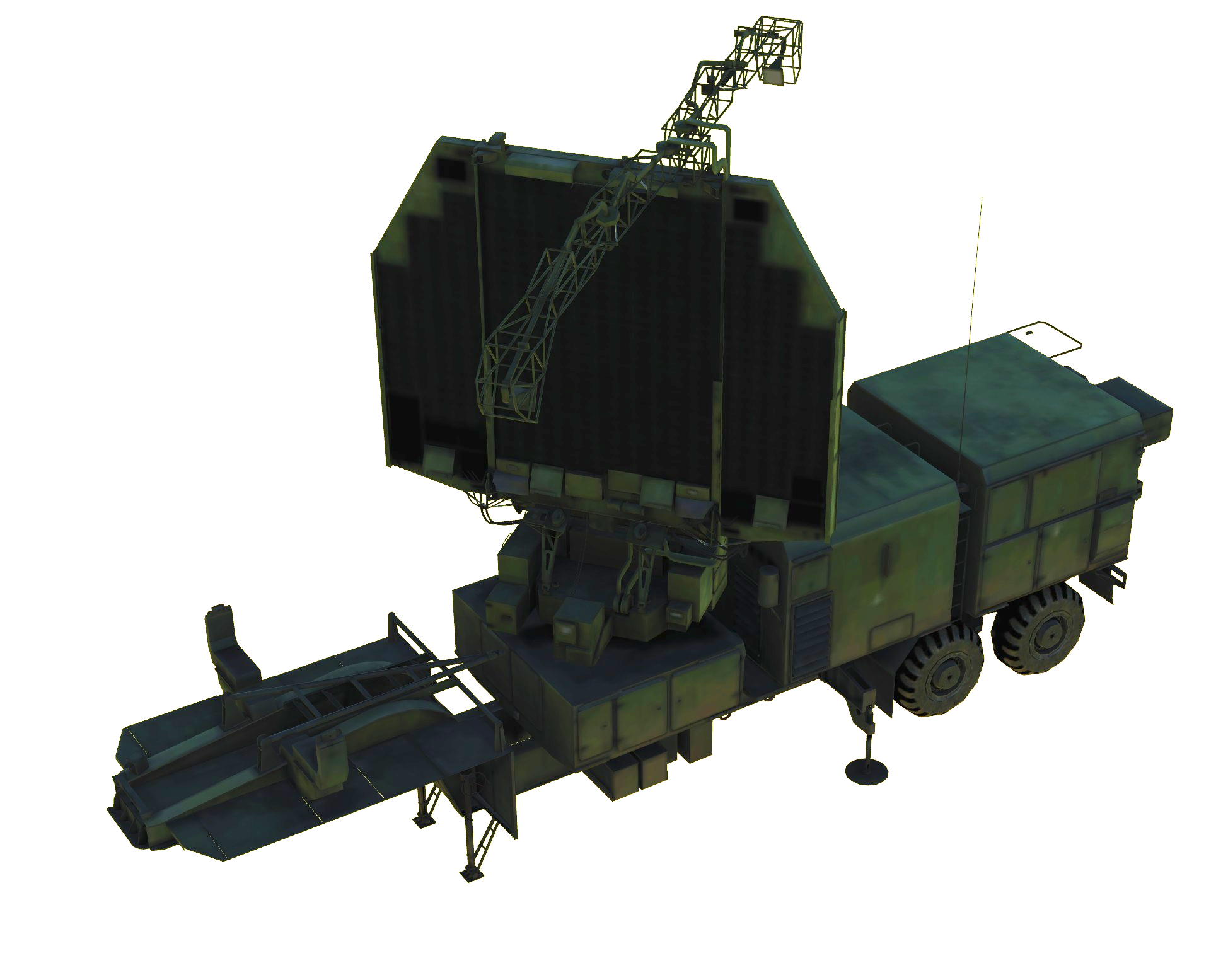
Note: Mobile long-range acquisition radar on MAZ-7910 chassis.
| NATO Reporting Name | Big Bird E | |
| Origin Designation | 64H6E | |
| DCS Reporting Name | SAM SA-10 S-300 "Grumble" Big Bird SR |
|
| Acquisition Time | 6 s | |
| MMD | 160 km | |
| trklockk | 0.85 | |
| trkaltMin | 100 m | |
| trkaltMax | 27000 m | |
| trkΔvMin | 15 m/s | |
| trkrcsMin | 0.049 m² | |
| RT | 6 s | |
| ecmk | 0.4 | |
| θMax | 50 deg | |
| θMin | -15 deg | |
| Beam Width | **** | |
| Concurrent Tracks | **** |
40V6MD “Clam Shell” (Mast)
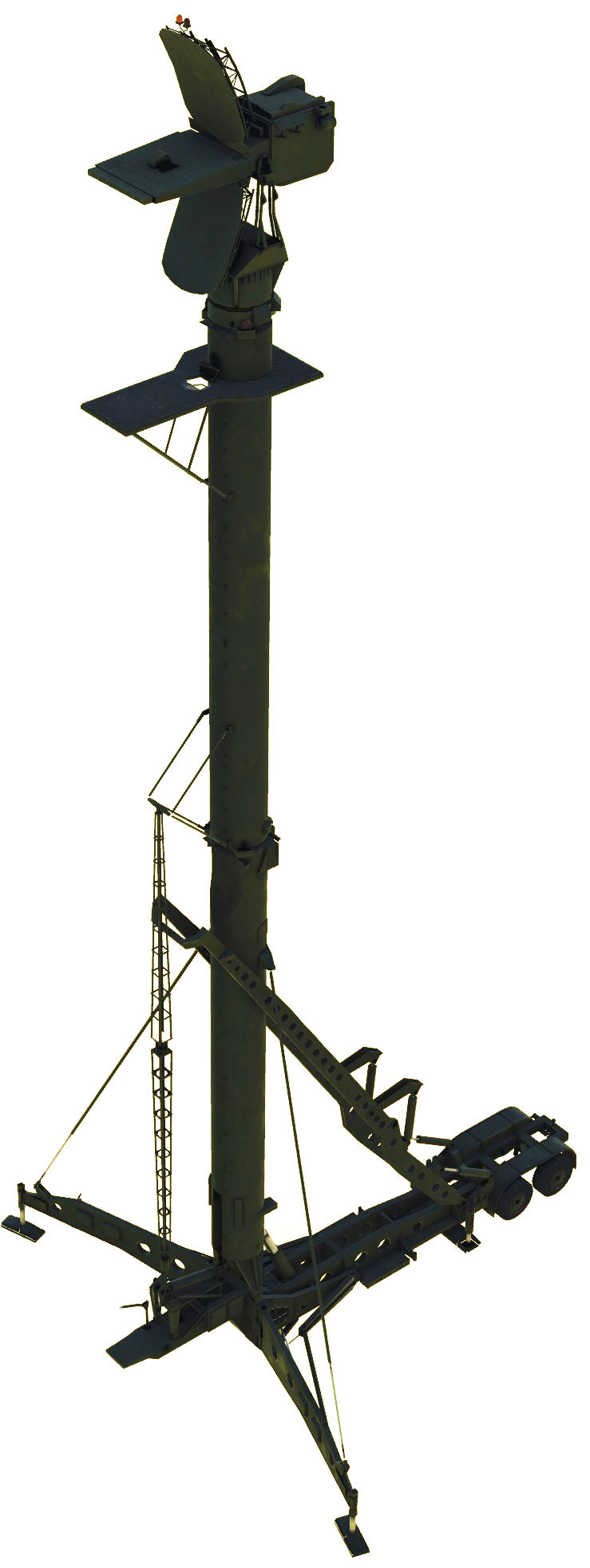
Note: Mobile low-altitude acquisition radar on 40V6MD mast system.
| NATO Reporting Name | Clam Shell |
| Origin Designation | 76N6 (Radar) on 40V6MD (Mast) |
| DCS Reporting Name | SAM SA-10 S-300 "Grumble" Clam Shell SR |
| Acquisition Time | 3 s |
| MMD | 60 km |
| trklockk | 0.85 |
| trkaltMin | 5 m |
| trkaltMax | 3000 m |
| trkΔvMin | 15 m/s |
| trkrcsMin | 0.049 m² |
| RT | 3 s |
| ecmk | 0.65 |
| θMax | 10 deg |
| θMin | -10 deg |
| Beam Width | **** |
| Concurrent Tracks | **** |

54K6
Note: Mobile command post on MAZ-7910 chassis, links SRs and TRs.
- DCS Reporting Name:
SAM SA-10 S-300 "Grumble" C2 - Coordinates battery/division engagements.
- Depends on associated SRs (
40B6MD,64H6E) for target data.
Typical Battery Composition (DCS Units):
- 1x
SAM SA-10 S-300 "Grumble" Big Bird SR(Long-Range SR) - 1x
SAM SA-10 S-300 "Grumble" Flap Lid-B TR(Engagement Radar) - 1-4x
SAM SA-10 S-300 "Grumble" TEL C(Master Launcher, 4 missiles) - 2-12x
SAM SA-10 S-300 "Grumble" TEL D(Slave Launcher, 4 missiles each)
1 TEL C per 2 TEL Cs is typical. In DCS you can use all TEL Ds and it will work
Typical Division Composition (DCS Units):
- HQ / Command:
- 1x
SAM SA-10 S-300 "Grumble" C2(Command Post) - 1x
SAM SA-10 S-300 "Grumble" Big Bird SR(Long-Range SR) - 1x
SAM SA-10 S-300 "Grumble" Clam Shell SR(Low-Altitude SR)
- 1x
- Subordinate Batteries: 3-6 (Typical)
- Support Components (Representational DCS Surrogates):
- Transloaders (
Ural-4320Tw/ crane) - Fuel Trucks (
ATMZ-5,ATZ-10) - Maintenance/Support Vehicles (
Ural-375,ZIL-131 KUNG)
- Transloaders (
Notes: The S-300PS is a highly mobile system designed for rapid deployment (5 minutes) and relocation. A division controls multiple firing batteries via the 54K6 Command Post, which receives targeting data from the Big Bird and Clam Shell surveillance radars. The Flap Lid B radar within each battery handles target tracking and missile guidance. Launchers are dependent on the Flap Lid B. While DCS models the guidance as SARH, the real system employs TVM.
¶ 3️⃣ 🔺SA-12 Gladiator/Giant HighDigitSAMs
🔺SA-12 Gladiator/Giant HighDigitSAMs
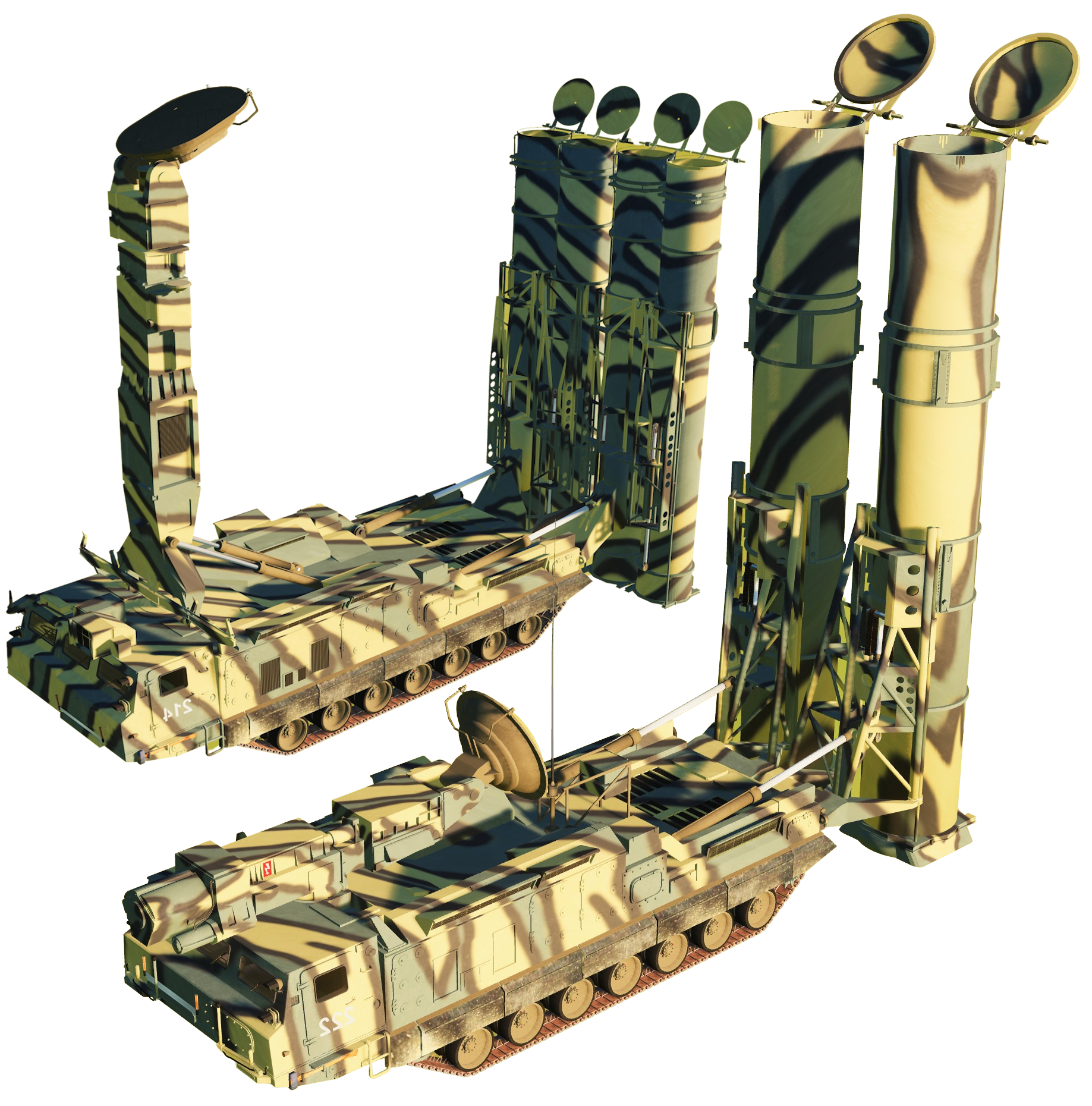
| Country of Origin: | Russia |
| Origin Desgination: | S-300V |
| IOC: | 1988 |
| Reloading Time: | Recycle Time: **** Rearm Time Per Round: **** Rearm From Depleted: **** |
| LNs per Battery: | **** |
| Missile Storage: | Per LN: **** Per Battery: **** |
| Guidance Method: | **** |
| Fire-on-Move: | No |
| Anti-Munitions: | Yes |
- APA-TR-2006-1202: Self Propelled Air Defence System / SA-12/SA-23 Giant/Gladiator Air Power Australia
- S-300V (SA-12a Gladiator) Russian Long-Range Air Defense Missile System ODIN
- S-300V (SA-12b Giant) Russian Long-Range Air Defense Missile System ODIN
MISSILES


Unlike most systems in DCS, the SA-12 is equipped with two primary SAMs, the Gladiator, and the Giant.
The Giant is primarily intended for ABM defense and doctrinally is not likely to be employed against aircraft IRL. However, it can target aircraft, making the Giant the deadliest SAM for aircraft in DCS.
9M82 SA-12 Giant
| MaMax | vAvg | Overload | hMin | hMax | tAcc | rangeMax | rangeMin | TTKMin | TTKMax |
|---|---|---|---|---|---|---|---|---|---|
| 7.0 Ma | 3500kt | 30G | 3280ft | 500,000ft | 7s | 108 nmi | 10.8 nmi | 1:51 |
9M83 SA-12 Gladiator
| MaMax | vAvg | Overload | hMin | hMax | tAcc | rangeMax | rangeMin | TTKMin | TTKMax |
|---|---|---|---|---|---|---|---|---|---|
| 4.5 Ma | 2332kt | 20G | 82ft | 82,000ft | 6s | 40 nmi | 0.53 nmi | 1:01 |
| NATO Reporting Name | |
| Origin Designation | |
| Acquisition Time | |
| Range |
| NATO Reporting Name | |
| Origin Designation | |
| Acquisition Time | |
| Range |
¶ 3️⃣ 🔺SA-20 Gargoyle HighDigitSAMs
🔺SA-20 Gargoyle HighDigitSAMs
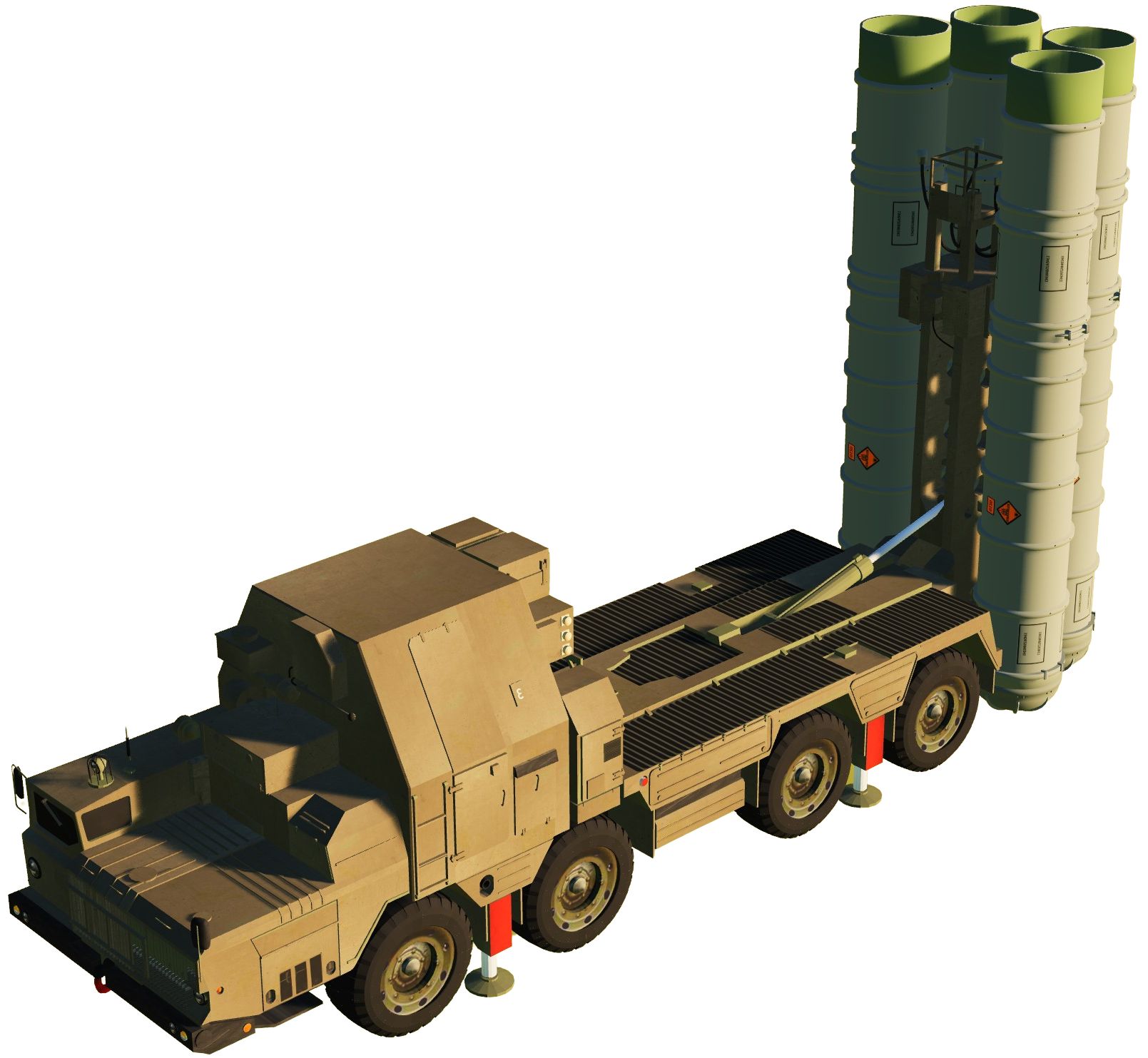
| Country of Origin: | Russia |
| Origin Desgination: | S-300PMU-2 Favorit |
| IOC: | 1997 |
| Reloading Time: | Recycle Time: **** Rearm Time Per Round: **** Rearm From Depleted: **** |
| LNs per Battery: | **** |
| Missile Storage: | Per LN: **** Per Battery: **** |
| Guidance Method: | **** |
| Fire-on-Move: | No |
| Anti-Munitions: | Yes |
- APA-TR-2006-1201: SA-10/20/21 Grumble/Gargoyle Air Power Australia
- S-300PMU-1 (SA-20 Gargoyle) Russian Long-Range Air Defense Missile System ODIN
- S-300PMU-2 Favourite (SA-20B) Russian Long-Range Air Defense Missile System ODIN
MISSILE

| MaMax | vAvg | Overload | hMin | hMax | tAcc | rangeMax | rangeMin | TTKMin | TTKMax |
|---|---|---|---|---|---|---|---|---|---|
| Ma | kt | G | ft | ft | s | nmi | nmi |
| NATO Reporting Name | |
| Origin Designation | |
| Acquisition Time | |
| Range |
| NATO Reporting Name | |
| Origin Designation | |
| Acquisition Time | |
| Range |
¶ Command Post
¶ Site Layout
¶ 4️⃣ 🔺SA-23 Gladiator/Giant HighDigitSAMs
🔺SA-23 Gladiator/Giant HighDigitSAMs

| Country of Origin: | Russia |
| Origin Desgination: | S-300VM “Antey-2500” |
| IOC: | 2013 |
| Reloading Time: | Recycle Time: **** Rearm Time Per Round: **** Rearm From Depleted: **** |
| LNs per Battery: | **** |
| Missile Storage: | Per LN: **** Per Battery: **** |
| Guidance Method: | **** |
| Fire-on-Move: | No |
| Anti-Munitions: | Yes |
MISSILES


| NATO Reporting Name | |
| Origin Designation | |
| Acquisition Time | |
| Range |
| NATO Reporting Name | |
| Origin Designation | |
| Acquisition Time | |
| Range |
¶ Command Post
¶ Site Layout
¶ 3️⃣ 🔷Patriot
🔷Patriot
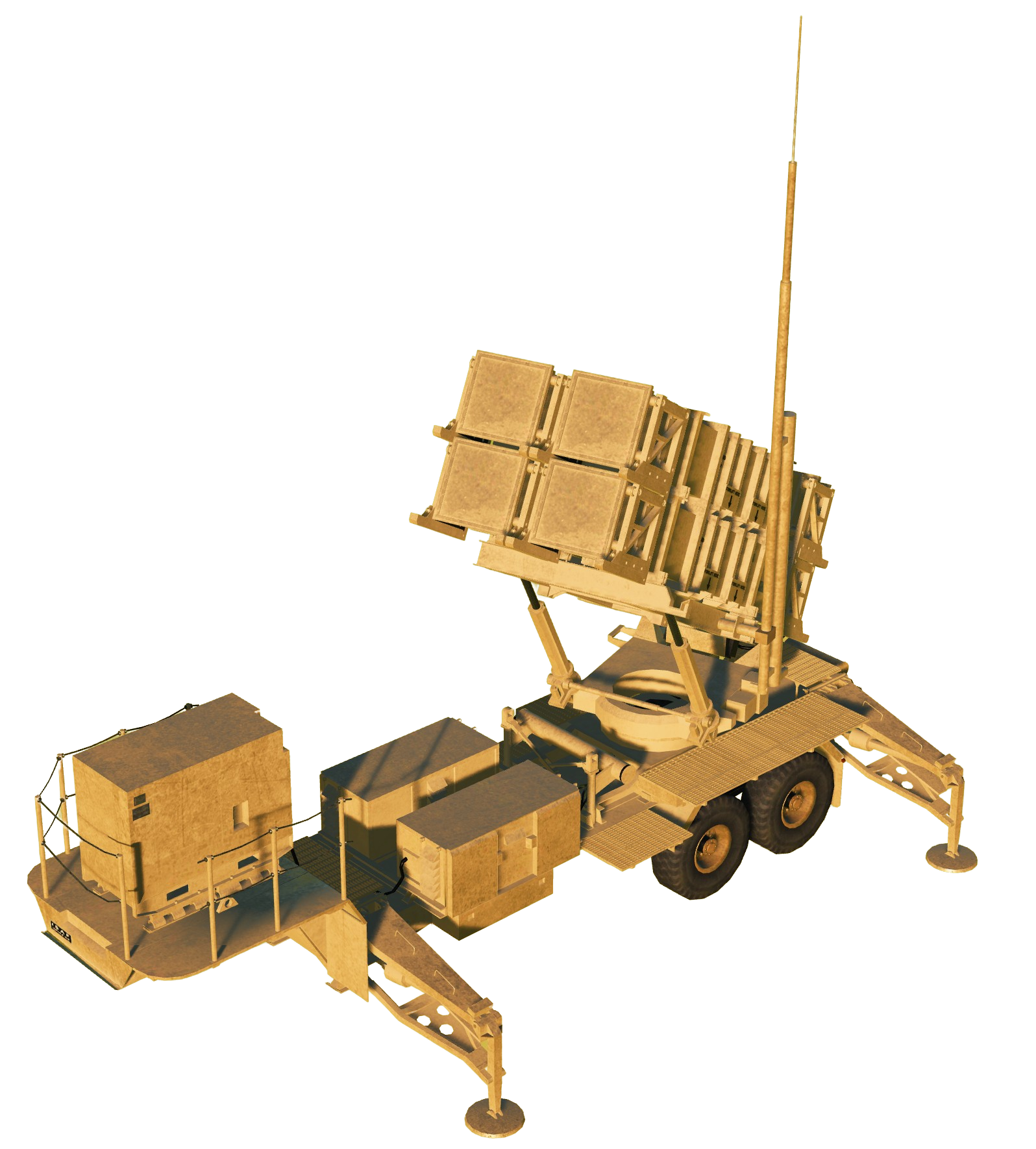
| Country of Origin: | United States of America |
| Origin Desgination: | MIM-104A Patriot |
| IOC: | 1984 |
| Reloading Time: | Recycle Time: **** Rearm Time Per Round: **** Rearm From Depleted: **** |
| LNs per Battery: | **** |
| Missile Storage: | Per LN: **** Per Battery: **** |
| Guidance Method: | SARH |
| Fire-on-Move: | No |
| Anti-Munitions: | Yes |
MISSILE

| MaMax | vAvg | Overload | hMin | hMax | tAcc | rangeMax | rangeMin | TTKMin | TTKMax |
|---|---|---|---|---|---|---|---|---|---|
| Ma | kt | G | ft | ft | s | nmi | nmi |
| NATO Reporting Name | |
| Origin Designation | |
| Acquisition Time | |
| Range |
| NATO Reporting Name | |
| Origin Designation | |
| Acquisition Time | |
| Range |
¶ 4️⃣ 🔷David’s Sling IDF Mods Project
🔷David’s Sling IDF Mods Project
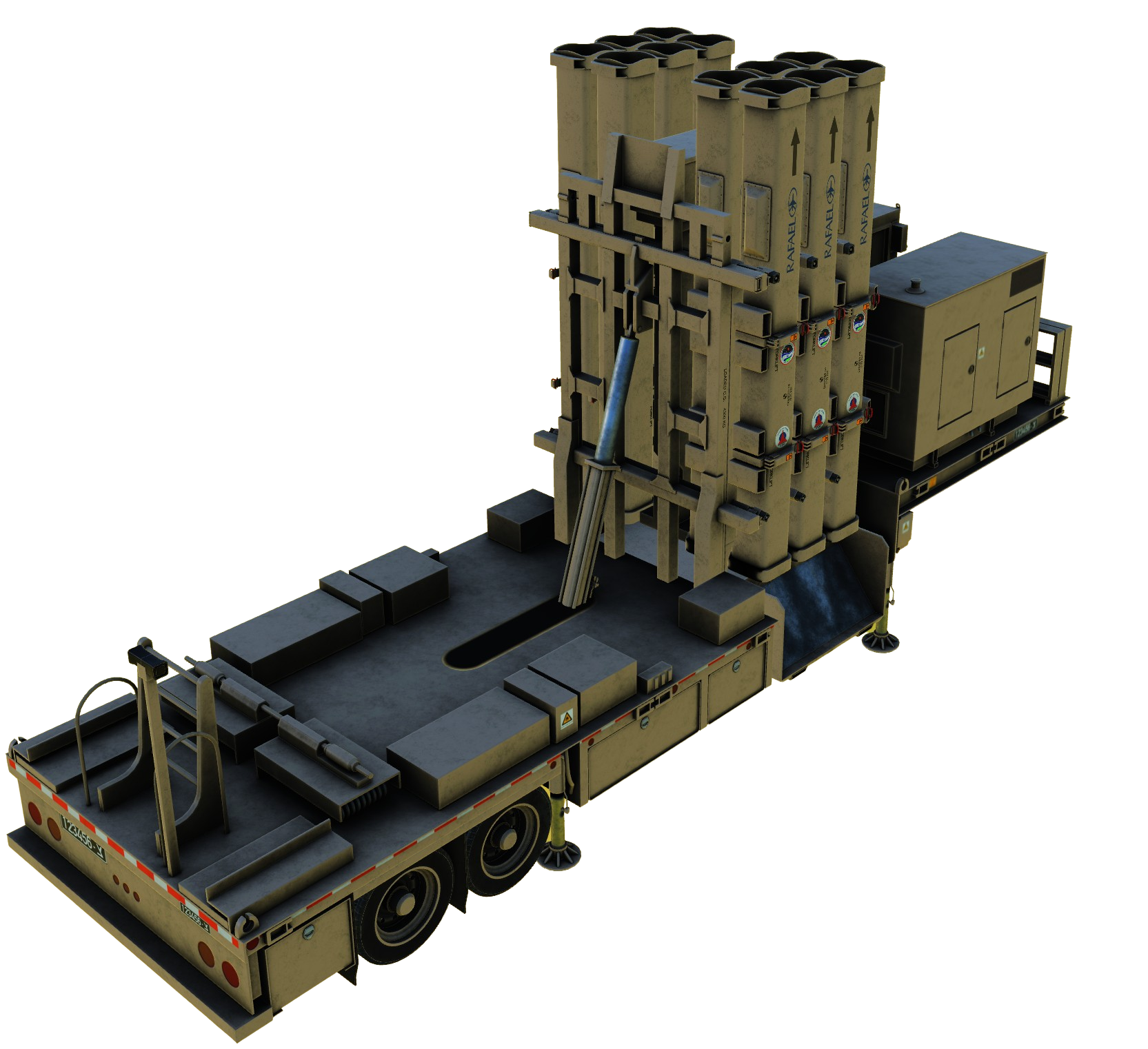
| Country of Origin: | Israel |
| Origin Desgination: | Kela David |
| IOC: | 2017 |
| Reloading Time: | Recycle Time: **** Rearm Time Per Round: **** Rearm From Depleted: **** |
| LNs per Battery: | **** |
| Missile Storage: | Per LN: **** Per Battery: **** |
| Guidance Method: | **** |
| Fire-on-Move: | No |
| Anti-Munitions: | Yes |
Brochure Model.
MISSILE

| MaMax | vAvg | Overload | hMin | hMax | tAcc | rangeMax | rangeMin | TTKMin | TTKMax |
|---|---|---|---|---|---|---|---|---|---|
| Ma | kt | G | ft | ft | s | nmi | nmi |
¶ 4️⃣ 🔺 SA-28 Currenthill
🔺 SA-28 Currenthill
| Country of Origin: | Russia |
| Origin Desgination: | S-350 Vityaz |
| IOC: | 2019 |
| Reloading Time: | Recycle Time: **** Rearm Time Per Round: **** Rearm From Depleted: **** |
| LNs per Battery: | **** |
| Missile Storage: | Per LN: **** Per Battery: **** |
| Guidance Method: | **** |
| Fire-on-Move: | No |
| Anti-Munitions: | Yes |
Brochure Model.
MISSILENAME
| MaMax | vAvg | Overload | hMin | hMax | tAcc | rangeMax | rangeMin | TTKMin | TTKMax |
|---|---|---|---|---|---|---|---|---|---|
| Ma | kt | G | ft | ft | s | nmi | nmi |
| NATO Reporting Name | |
| Origin Designation | |
| Acquisition Time | |
| Range |
| NATO Reporting Name | |
| Origin Designation | |
| Acquisition Time | |
| Range |
¶ Command Post
¶ Site Layout
¶ Anti-Aircraft Artillery (AAA)
¶ 1️⃣ 🔷🔺🏴 ZSU-57-2
🔷🔺🏴 ZSU-57-2
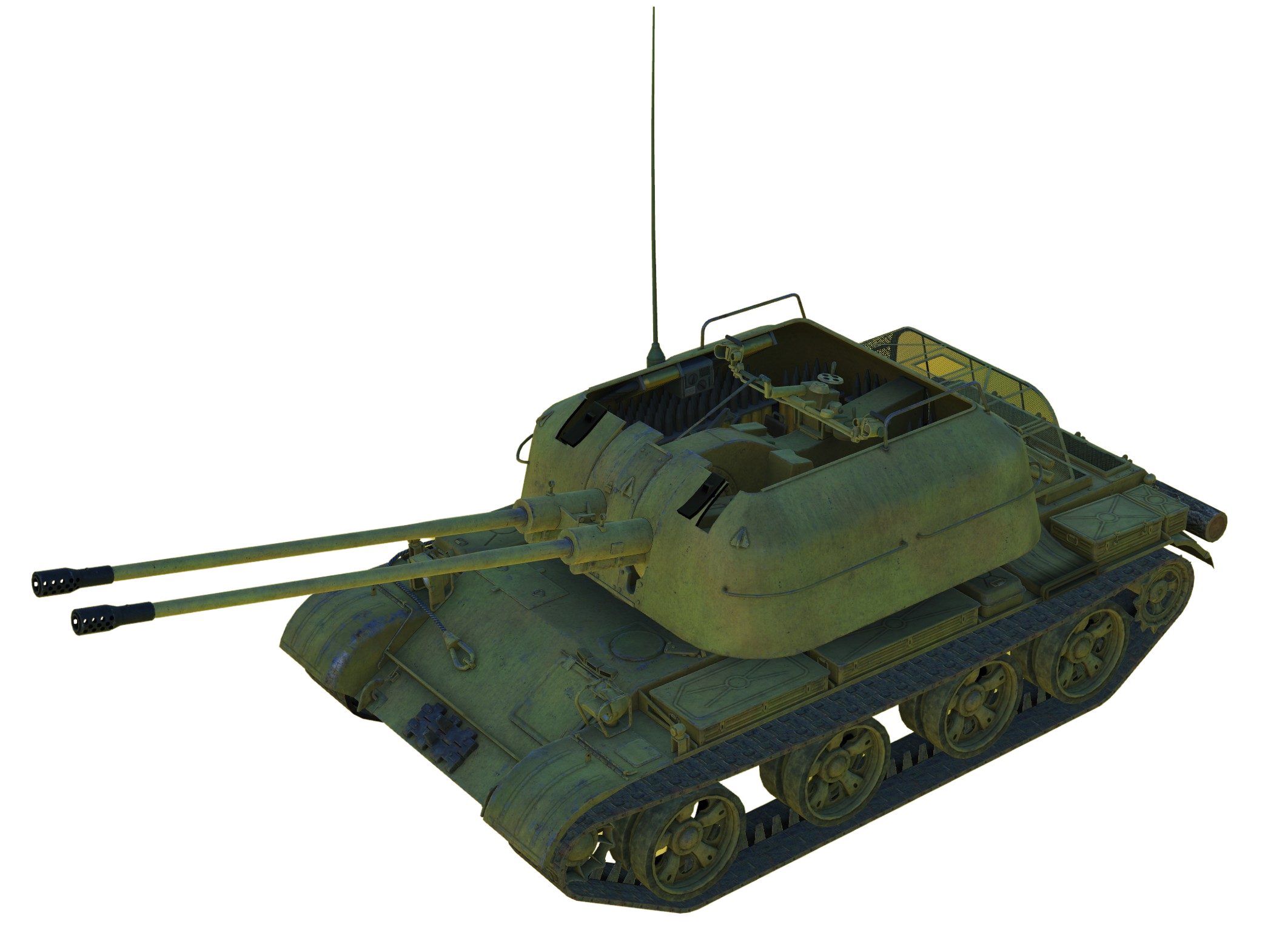
| Country of Origin: | Russia |
| Origin Desgination: | ZSU-57-2 |
| IOC: | 1955 |
| Reloading Time: | Recycle Time: **** Rearm Time Per Round: **** Rearm From Depleted: **** |
| LNs per Battery: | **** |
| Missile Storage: | Per LN: **** Per Battery: **** |
| Guidance Method: | **** |
| Fire-on-Move: | Yes |
| Anti-Munitions: | No |
| NATO Reporting Name | |
| Origin Designation | |
| Acquisition Time | |
| Range |
¶ Command Post
¶ Site Layout
¶ 1️⃣ 🔷🔺🏴 ZU-23-2
🔷🔺🏴 ZU-23-2
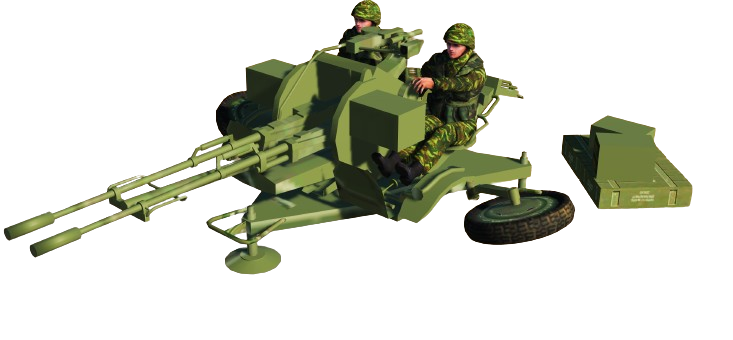
| Country of Origin: | Russia |
| Origin Desgination: | ZU-23-2 |
| IOC: | 1960 |
| Reloading Time: | Recycle Time: **** Rearm Time Per Round: **** Rearm From Depleted: **** |
| LNs per Battery: | **** |
| Missile Storage: | Per LN: **** Per Battery: **** |
| Guidance Method: | **** |
| Fire-on-Move: | Depends |
| Anti-Munitions: | No |
| NATO Reporting Name | |
| Origin Designation | |
| Acquisition Time | |
| Range |
¶ Command Post
¶ Site Layout
¶ 1️⃣ 🔺🏴 S-60
🔺🏴 S-60
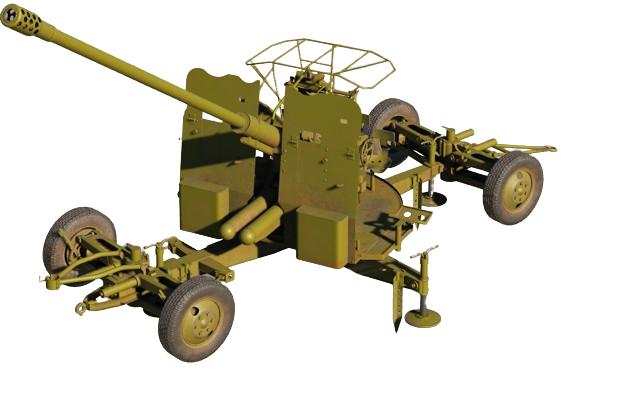
| Country of Origin: | Russia |
| Origin Desgination: | S-60 |
| IOC: | 1950 |
| Reloading Time: | Recycle Time: **** Rearm Time Per Round: **** Rearm From Depleted: **** |
| LNs per Battery: | **** |
| Missile Storage: | Per LN: **** Per Battery: **** |
| Guidance Method: | **** |
| Fire-on-Move: | No |
| Anti-Munitions: | no |
| NATO Reporting Name | |
| Origin Designation | |
| Acquisition Time | |
| Range |
¶ Command Post
¶ Site Layout
¶ 1️⃣ 🔺🏴 KS-19
🔺🏴 KS-19
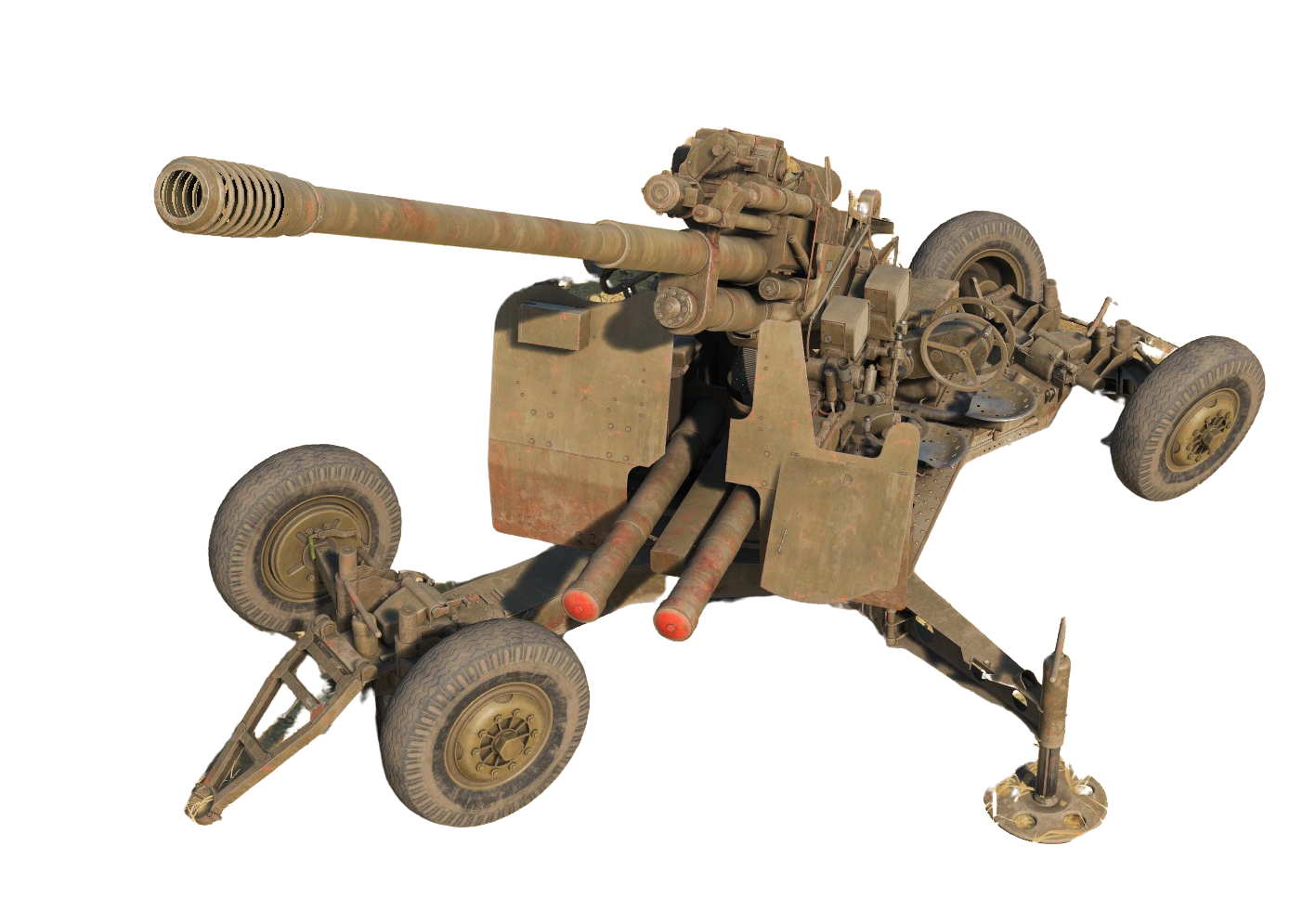
| Country of Origin: | Russia |
| Origin Desgination: | KS-19 |
| IOC: | 1947 |
| Reloading Time: | Recycle Time: **** Rearm Time Per Round: **** Rearm From Depleted: **** |
| LNs per Battery: | **** |
| Missile Storage: | Per LN: **** Per Battery: **** |
| Guidance Method: | **** |
| Fire-on-Move: | No |
| Anti-Munitions: | No |
| NATO Reporting Name | |
| Origin Designation | |
| Acquisition Time | |
| Range |
¶ Command Post
¶ Site Layout
¶ 1️⃣ 🔷🔺🏴 Bofors 40mm
🔷🔺🏴 Bofors 40mm
| Country of Origin: | Sweden |
| Origin Desgination: | Bofors 40mm L/60 |
| IOC: | 1934 |
| Reloading Time: | Recycle Time: **** Rearm Time Per Round: **** Rearm From Depleted: **** |
| LNs per Battery: | **** |
| Missile Storage: | Per LN: **** Per Battery: **** |
| Guidance Method: | **** |
| Fire-on-Move: | No |
| Anti-Munitions: | No |
| NATO Reporting Name | |
| Origin Designation | |
| Acquisition Time | |
| Range |
¶ Command Post
¶ Site Layout
¶ 3️⃣ 🔷Centurion C-RAM
🔷Centurion C-RAM
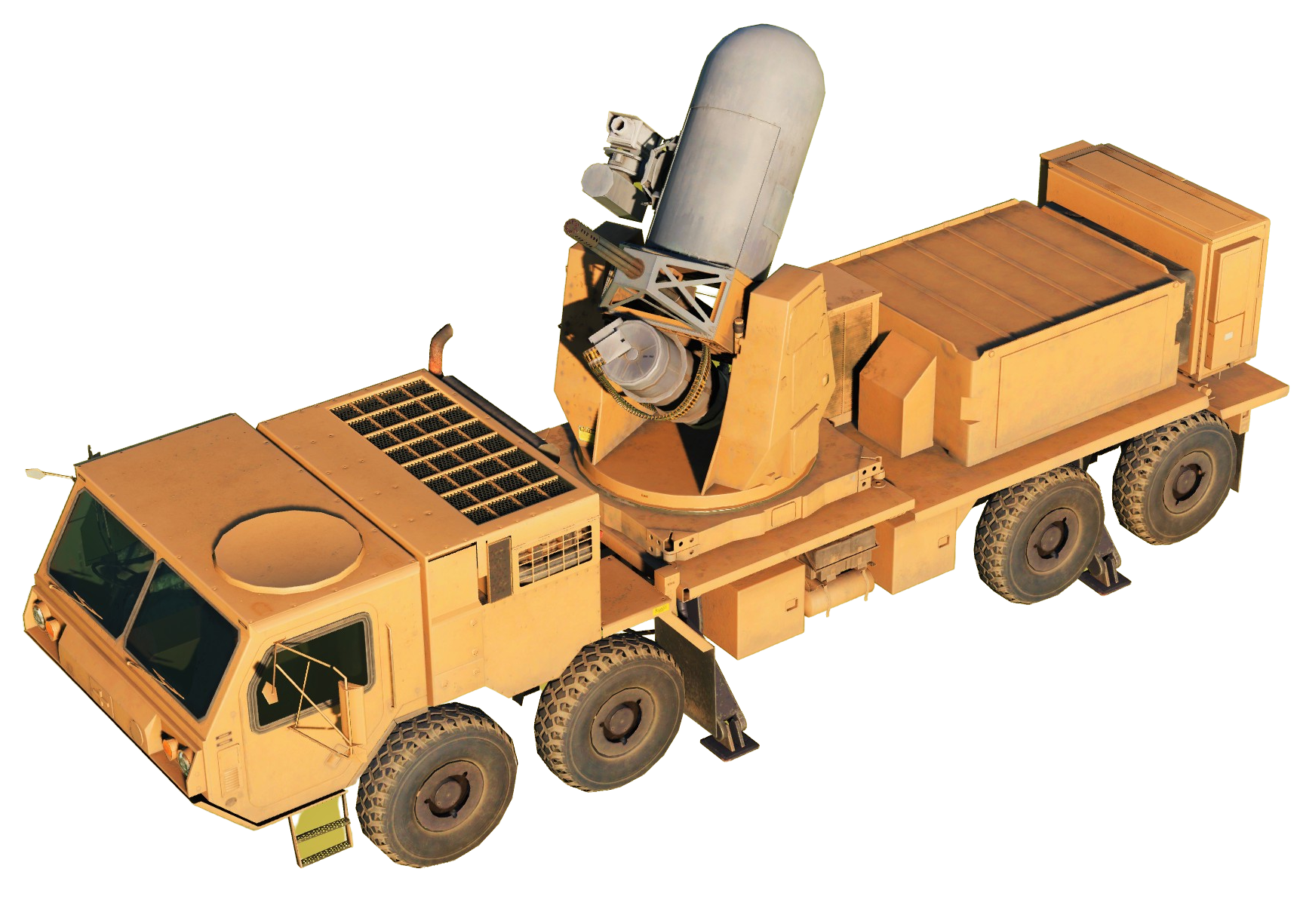
| Country of Origin: | United States of America 🦅🇺🇸 |
| Origin Desgination: | Centurioon |
| IOC: | 2004 |
| Reloading Time: | Recycle Time: **** Rearm Time Per Round: **** Rearm From Depleted: **** |
| LNs per Battery: | **** |
| Missile Storage: | Per LN: **** Per Battery: **** |
| Guidance Method: | **** |
| Fire-on-Move: | No |
| Anti-Munitions: | Yes |
| NATO Reporting Name | |
| Origin Designation | |
| Acquisition Time | |
| Range |
¶ Command Post
¶ Site Layout
¶ 1️⃣ 🔷M163 Vulcan Air Defense System (VADS)
🔷M163 Vulcan Air Defense System (VADS)
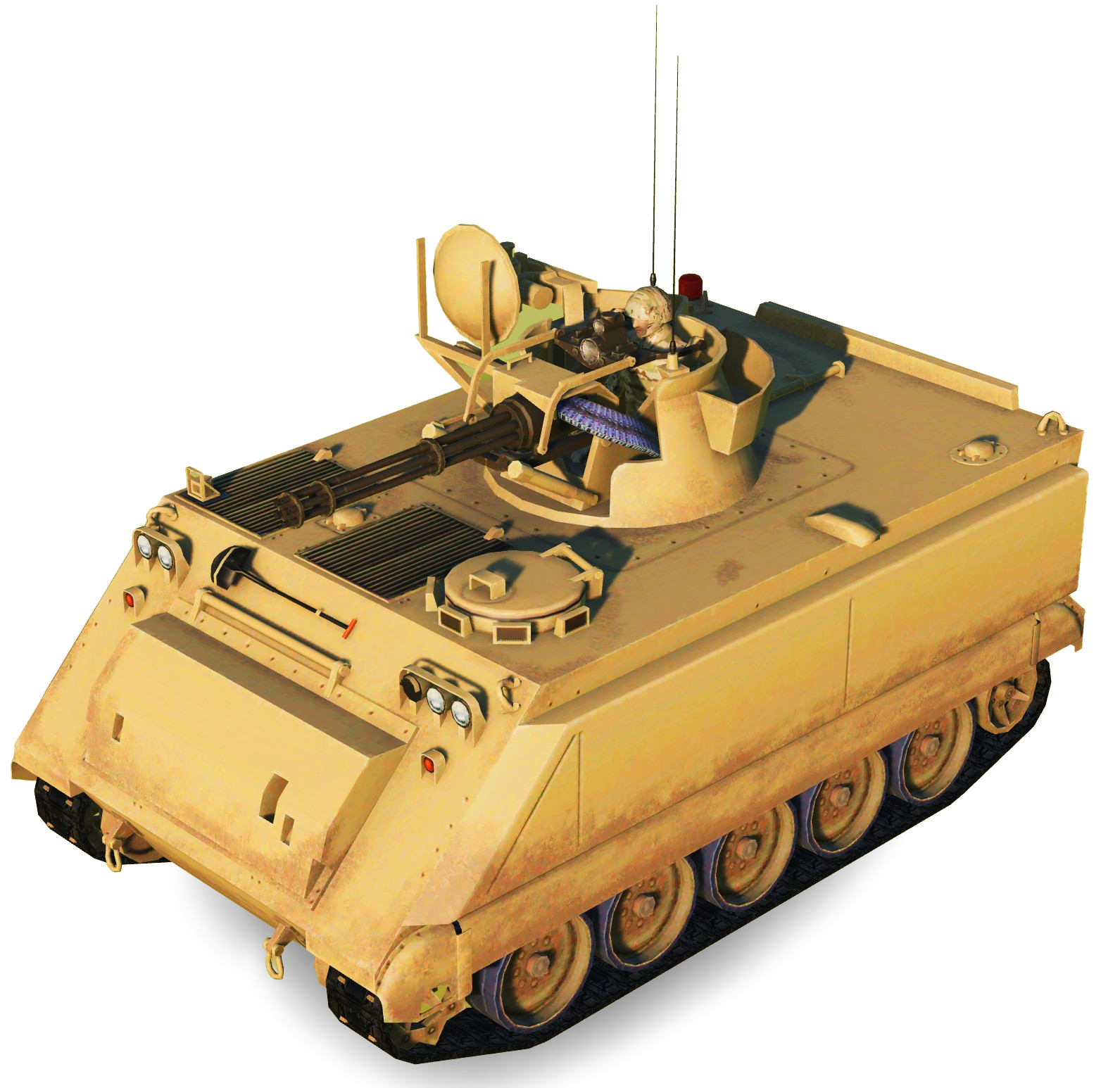
| Country of Origin: | United States of America 🦅🇺🇸 |
| Origin Desgination: | N/A |
| IOC: | 1964 |
| Reloading Time: | Recycle Time: **** Rearm Time Per Round: **** Rearm From Depleted: **** |
| LNs per Battery: | **** |
| Missile Storage: | Per LN: **** Per Battery: **** |
| Guidance Method: | **** |
| Fire-on-Move: | No |
| Anti-Munitions: | No |
| NATO Reporting Name | |
| Origin Designation | |
| Acquisition Time | |
| Range |
¶ Command Post
¶ Site Layout
¶ 2️⃣ 🔷Gepard
🔷Gepard

| Country of Origin: | Germany |
| Origin Desgination: | Gepard |
| IOC: | 1976 |
| Reloading Time: | Recycle Time: **** Rearm Time Per Round: **** Rearm From Depleted: **** |
| LNs per Battery: | **** |
| Missile Storage: | Per LN: **** Per Battery: **** |
| Guidance Method: | **** |
| Fire-on-Move: | No |
| Anti-Munitions: | yes |
| NATO Reporting Name | |
| Origin Designation | |
| Acquisition Time | |
| Range |
¶ Command Post
¶ Site Layout
¶ 1️⃣ 🔺🏴 Gun Dish
🔺🏴 Gun Dish

| Country of Origin: | Russia |
| Origin Desgination: | ZSU-23-4 “Shilka” |
| IOC: | 1964 |
| Reloading Time: | Recycle Time: **** Rearm Time Per Round: **** Rearm From Depleted: **** |
| LNs per Battery: | **** |
| Missile Storage: | Per LN: **** Per Battery: **** |
| Guidance Method: | **** |
| Fire-on-Move: | Yes |
| Anti-Munitions: | No |
| NATO Reporting Name | |
| Origin Designation | |
| Acquisition Time | |
| Range |
¶ Command Post
¶ Site Layout
¶ Early Warning Surviellance Radars (EWR)
¶  🔺Box Spring
🔺Box Spring
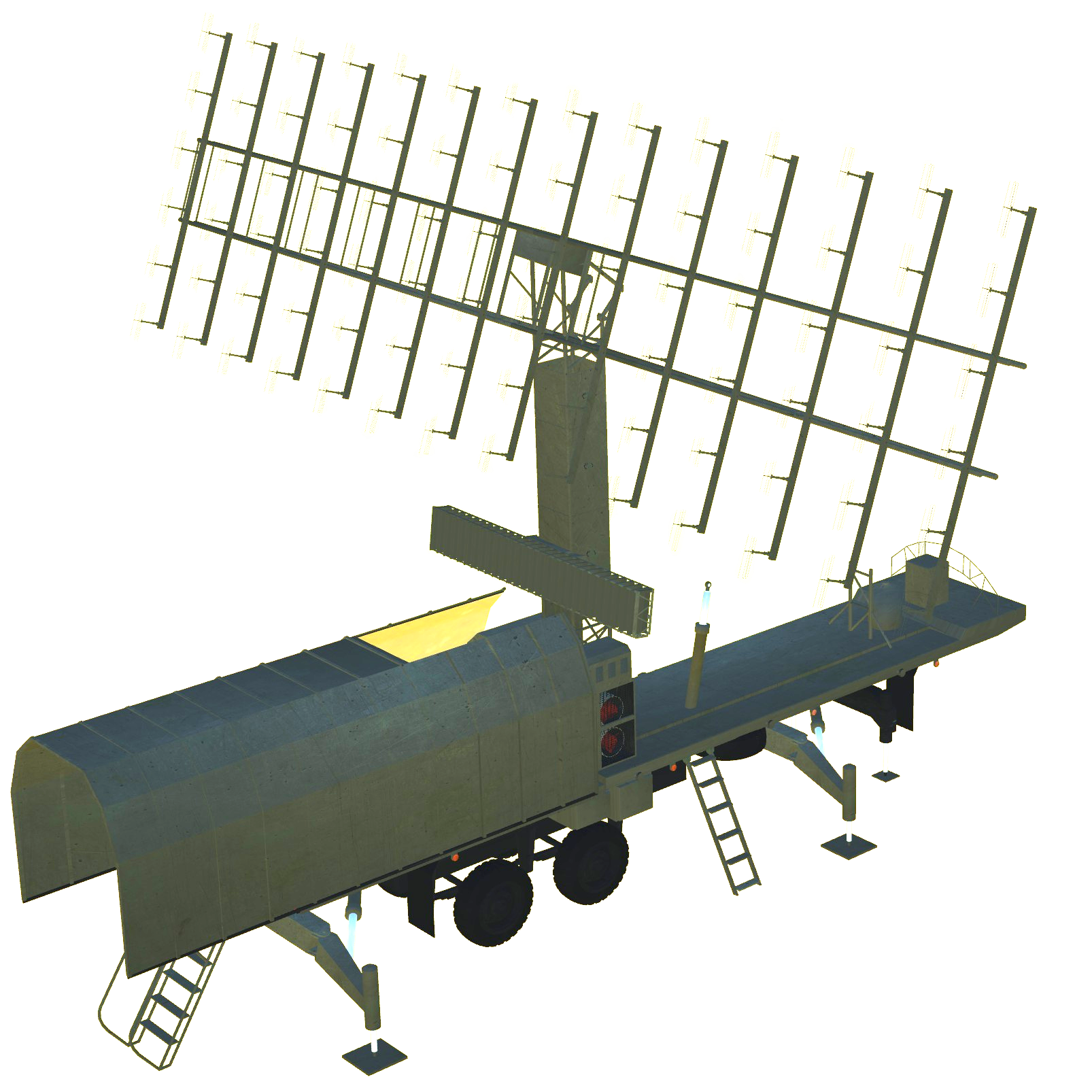
| Country of Origin: | Russia |
| Origin Desgination: | |
| IOC: | |
| Reloading Time: |
¶  🔺Bar Lock
🔺Bar Lock
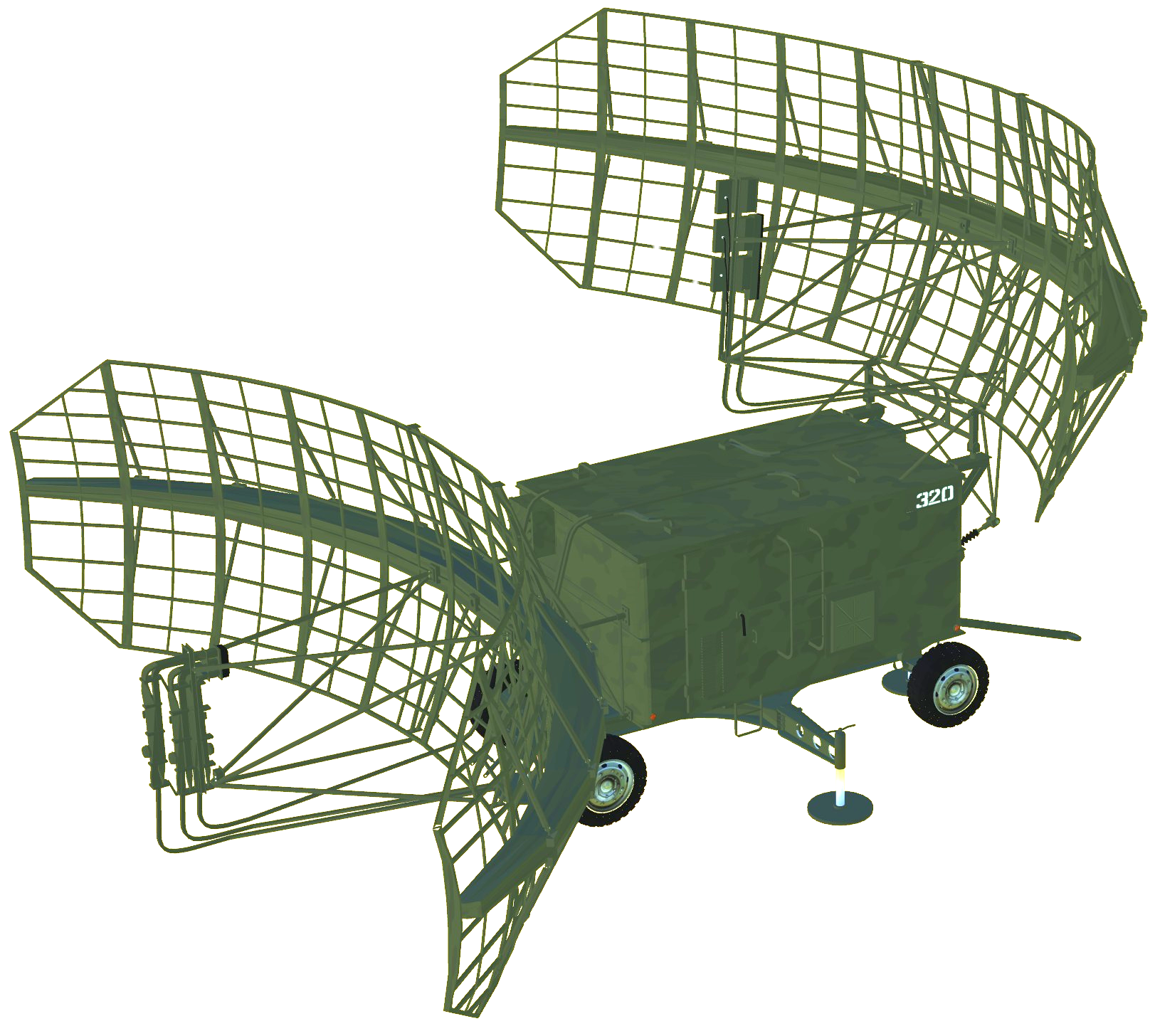
| Country of Origin: | |
| Origin Desgination: | |
| IOC: | |
| Reloading Time: |
¶  🔺Tall Rack
🔺Tall Rack
| Country of Origin: | |
| Origin Desgination: | |
| IOC: | |
| Reloading Time: |
¶  🔺Flat Face
🔺Flat Face

| Country of Origin: | Russia |
| NATO Reporting Name | Flat Face B |
| Origin Designation | 1RL134 P-19 Danube |
| DCS Reporting Name | SAM SA-2/3/5 P19 “Flat Face” SR |
| IOC: | 1974 |
| Acquisition Time | 9 seconds |
| MMD | 86nmi |
| trklockk | 1 |
| trkaltMin | 82 ft |
| trkaltMax | 100,000 ft |
| trkΔvMin | 20 knots |
| trkrcsMin | 0.18m2 |
| RT | 9 seconds |
| ecmk | 0.5 |
| θMax | 60° |
| θMin | -15° |
| Beam Width | 20° |
| Concurrent Tracks | 10 |
The Flat Face B, is a UHF surveillance and target acquisition radar based on the older P-15. It has two open frame elliptical parabolic antennas, with primitive counter-ECM frequency hopping capabilities. The Flat Face was first fielded in 1974 for the Soviet Union but has since been exported to various other countries where it is still in service. Within DCS, the P-19 serves as the SR for the SA-2, SA-3, and SA-5, replacing their actual units from real life. The Flat Face B also operates in regimental HQ as an SR, as well as part of an EWR network, although it is relatively short range for an EWR.
The Flat Face does not have a radar cabin built in to it to control the radar, so it would have a radar van with it. In DCS this would typically be a Ural-375 C2, however any C2 vehicles technically works.
There’s not really a prescribed site layout for the Flat Face. Consider both a Ural-375 C2 and a diesel generator or power unit, such as the 5I57A, or the APA-80.
¶  🔷AN/FPS-117
🔷AN/FPS-117
| Country of Origin: | |
| Origin Desgination: | |
| IOC: | |
| Reloading Time: |
¶ Command Units
¶ 2️⃣ 🔺Dog Ear
🔺Dog Ear

| Country of Origin: | Russia |
| Origin Desgination: | 9S80 PPRU-1 “Sborka” or “Ovod” |
| IOC: | 1983 |
The Dog Ear is a mobile command center and SR primarily attached to SA-13 batteries as a part of an ADBN. It can control up to 6 SA-13 TELs via radio. Upgraded units can also control 4 SA-8 Geckos or 4 SA-15 Gauntlets.
It can track up to 50 targets simultaneously, and can operate autonomously for 24 hours without resupply.
9S80M X-Band SR
| MMD | trklockk | trkaltMax | trkaltMin | ecmk | RT | trkΔvMin | trkrcsMin | θMax | aMin |
| 22nmi | 85% | 33,000ft | 50ft | 65% | 12s | 30kt | 0.18 | 60° | -15° |
Dog Ears operate in austere environments, behind the front line with their subordinate SAM sites. They do not have a specific site arrangement to follow, but consider the following support vehicles:
- A LUV or APC carrying 2x MANPAD teams to defend the Dog Ear
- A Diesel Generator for sustained usage
¶  🔺Polyana-D4M1 HighDigitSAMs
🔺Polyana-D4M1 HighDigitSAMs
| Country of Origin: | |
| Origin Desgination: | |
| IOC: | |
| Reloading Time: |
